They’re Back
eagles swimmers are setting the pace in n caa D- iii (an D they’re getting goo D gra D es, too)
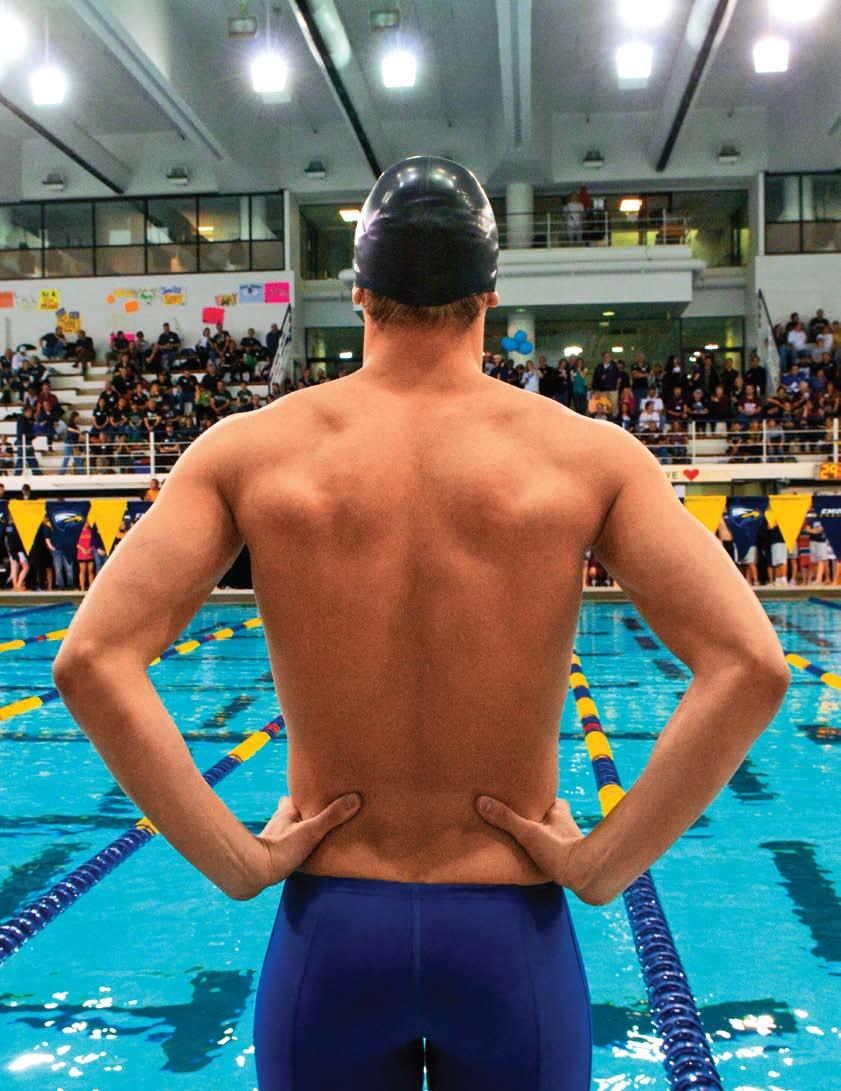
spring 2010
Sports Medicine | Inside the NBA | Campaign Emory: Annual Gifts

Mind sharpened at Emory. Smile perfected at E MORY H EALTHCARE . At Emory, we take care of your teeth. Whether it’s time to remove a few wisdom teeth or add a dental implant for your comfort, our Oral and Maxillofacial surgeons take the proper care to ensure you have something to smile about. Schedule an appointment today by calling 404-778-4500 or visiting www.emoryhealthcare.org/teeth.
Back in the game
From Little Leaguers to senior golfers, all kinds of athletes are benefiting from advances in sports medicine—and Emory specialists hope to keep them active for life.
Mary J. Loftus
Calling the play
Ever wondered who masterminds the NBA halftime shows and gets the players to the annual All-Star Game? Meet Charles rosenzweig 80C 80 g
Josh g et L in
peed-oh
You’d have to get up pretty early in the morning to be at the pool before coach Jon Howell and the Eagles swim team. Maybe that’s why they kicked butterfly at nationals this year.
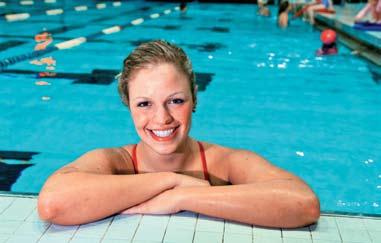
a L vador r izzo 09C
porting Chance
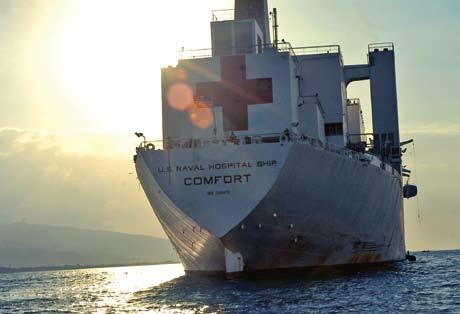
How philip schwalb 86L launched the world’s first all-sports museum in lower Manhattan—and why the landmark attraction didn’t get to celebrate its first anniversary.
paige p. parvin 96 g
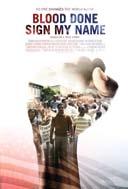
4
6

departments
Letters
Of Note A Diary’s Secrets Support Central Oxford Plans Ahead Collective Knowledge Scottish Play
Aphids
Digestive Tract Forces of Nature Serious Fun
of a Dual Athlete Mosquito-Borne Killer
Campaign Chronicle Employees, Retirees Support Emory Transplant Center Receives Award Annual Giving’s Quiet Power
The Emory Register From the EAA Covering the Field Coast Guard to the Test Coach Confessions 32 s pring 2010
Tiny
Your
Portrait
41
47
features
v o L . 86, nu MB er 1 20 spring 2010 magazine 1 u SNS COMFORT J. L. C H RR CK /u. S N A v Y HOR v AT : KAY H NTON
editor
Paige P. Parvin 96G paige.parvin@emory.edu
art director
Erica Endicott
production Manager
Stuart Turner
editorial intern
Mallory Goldberg 10C
Contributors
Allison Adams 00G
Patrick Adams 08MPH
Beverly Clark
Carol Clark
Quinn Eastman
Josh Getlin
Hal Jacobs
Salvador Rizzo 09C
associate editor Mary J. Loftus
mary.loftus@emory.edu
Lead photographer Kay Hinton
Copy editor Jane Howell
photographers
Ann Borden
Bryan Meltz
on the cover: Emory swimmer
Jared Dubnow contemplates the competition. Photo by Kay Hinton.
emory Magazine editorial advisory Board
Arri Eisen
Senior Lecturer, Biology
Bridget Guernsey Riordan
Dean of Students
Samantha Ehrlich 10C
Copresident, Student Alumni Association
Ginger Cain 77C 82G
Director of Public Programming, Emory Libraries
Gary Laderman
Professor of Religion
Tim Hussey
Director, Marketing and Communications, School of Law
Kathy Kinlaw 79C 85T
Associate Director, Center for Ethics
Dan Macaluso
Vice President for Development
Karen Martucci
Director, Academic Services, Oxford College
Jeff Molter
Associate Vice President, Health Sciences Communications
Steve Fennessy
Editor, Atlanta Magazine
Michelle Lee
Editor, Emory Wheel
ex officio
Ron Sauder
Vice President for Communications and Marketing
Susan Carini 04G
Executive Director, Emory Creative Group
Allison Dykes
Vice President for Alumni Relations
Gary Hauk 91PhD
Vice President and Deputy to the President
the eagles women’s basketball team sported special uniforms in the think pink game, which raised funds for breast cancer research. photo by Kay hinton.

E MORY M AGA zi NE (uSPS-175-420) is published quarterly by Emory Creative Group, 1762 Clifton Road, Plaza 1000, Atlanta, Georgia 30322. Periodicals postage paid at Atlanta, Georgia, and additional mailing offices. POSTMASTER: send address changes to O FF i CE OF A L u MN i AND D E v ELOPMENT R ECORDS , 1762 Clifton Road, Suite 1400, Atlanta, Georgia 30322.
Emory Magazine is distributed free to all alumni and to parents of undergraduates, as well as to other friends of the university. Address changes may be sent to the Office of Alumni and Development Records, 1762 Clifton Road, Suite 1400, Atlanta, Georgia 30322 or eurec@emory.edu. if you are an individual with a disability and wish to acquire this publication in an alternative format, please contact Paige P. Parvin (address above) or call 404.727.7873. No. 110001-5 © 2010, a publication of Emory Creative Group, a department of Communications and Marketing.
Confessions of a Loser
It’s not whether you win or lose, it’s how you play the game.
I’m sure we all recall that gem of encouragement from our parents and childhood coaches. I’m equally sure we all knew, even then, what a total sham it was.
Of course winning is important. We humans are naturally competitive creatures, evolved over millions of years to fight for victory, whether it’s in a struggle for survival or a fireside game of Scrabble.
Which is why even recreational competition can be cruel to players like me. You’ve probably noticed how some people are just more likely to win at games and contests? Well, I’m not one of those.
When my partner and I play tennis, she always wins—always—even though I have had formal instruction from qualified tennis pros and she learned by slamming a ball around with her brother at their neighborhood court. When I ran a halfmarathon a couple of years ago, I finished dead center. I am, literally, a middle-ofthe-pack kind of girl.
I even lose with some regularity at Scrabble, although as an editor you’d think I might have a talent for it. And I don’t lose very gracefully, either.
So why keep playing? To stay active, keep fit, have fun, challenge myself, keep my mind sharp?
Sure. But mostly, I keep playing because I might win.
The appeal of sport lies primarily in the competition, in the pure potential for victory, whether it’s a casual game between friends or the U.S. Open. That’s why we tend to keep score even if we’re playing “just for fun.” That’s why the sports industry is worth a staggering $200 billion a year, as I learned recently from Philip Schwalb 86L, who founded the Sports Museum of America.
That’s also why it wouldn’t be at all enjoyable for me to play a game of tennis against, say, Venus Williams. The trick, as far as I can tell, is to compete in the right league, where challenge, skill, and spirit are finely balanced and individual players are positioned to rise to their highest level of play.
The Emory swim team, for instance, is definitely in the right league—namely NCAA’s Division III, where the women took the national title and the men placed third in the finals this spring. As President Wagner says in his message on page 40, the Eagles “make no excuse for wanting to win,” and the swimmers have been much celebrated alongside Emory’s many other successful athletic teams. But as D-III athletes, they are as much celebrated for their GPAs and their volunteer service as for their championship trophies, and that’s the balance that the University athletics staff hope will prepare them for healthy, holistic lives long after they leave the WoodPEC behind.
On the other hand, there are those whose livelihood is bound to the sports industry machine and who by definition play a different game. Charles Rosenzweig 80C 80G, head of entertainment and player marketing for the NBA, helps make pro basketball one of the most vibrant and popular forms of athletic competition, bridging the sport with pop culture
and keeping star players in the public eye. And Schwalb sought to pay homage to what he calls the beauty and grandeur of the nation’s rich sports tradition with the Sports Museum of America—although, as it turned out, the museum was not quite competing on the right field. No one likes to lose, but if you must, see Schwalb’s story for an example of how to do it well.
Then there are those who help keep athletes in the game, like Emory’s sports medicine doctors who treat the incredible range of injuries sustained in passionate play. Once an elite specialty focused on pro athletes, sports medicine has expanded to benefit everyday, hobby players—who also have found the right outlet for their particular ability and love of the game.
My son, who is not a jock by anyone’s definition, recently joined the lacrosse team at his middle school, and he has surprised us with his enthusiasm for what is an alarmingly rough sport. Being one of the more inexperienced and reticent players on the team, he’s not getting much game time.
As I watched him follow the play from the bench this past Saturday, I worried that he would be disappointed. He got put in only during the last couple of minutes and I’m not at all sure he actually made contact with the ball.
Nonetheless, as he walked off the field, he looked unexpectedly satisfied. Ready to boost his spirits, I said sympathetically, “Hey, are you okay?”
He gave me a surprised look. “Yeah, I’m great,” he said, shrugging philosophically. “We won.” —P.P.P.
spring 2010 magazine 3
prelude
The appeal of sport lies primarily in the competition, in the pure potential for victory, whether it’s a casual game between friends or the u.S. Open.
I read with concern the hypercritical comments of readers who opposed your decision to put Newt Gingrich on the [autumn 2009] cover of Emory Magazine. . . . I am neither fan nor foe of Gingrich, but it would be hard to argue that he has not had an impact on politics. For that reason alone, his current views and work are worth examining. Perhaps the criticism is a reflection of our polarized society. People who don’t agree with an individual’s viewpoints or political practices may want to pretend that they don’t exist. But any enlightening public discourse starts with information.
Rebecca Adams 95C Silver Spring, Maryland
I enjoyed the article on Newt Gingrich and was refreshed to see atypical conservative content presented in Emory Magazine However, I found the reactionary letters in the winter 2010 issue disappointing and a bit trite. The idea of “rigorous quantitative analysis” was instilled in us at Goizueta Business School; all points are considered to gain a macro perspective. The vehement, vitriolic responses to the mere presence of the Newt material are representative of the partisan acrimony and lack of pragmatism handicapping America, with punitive threats to discontinue giving to the University, destroying the magazine in effigy, and the like. Unfortunately the politically correct ideology, “If you don’t think like me, you must be narrow-minded,” continues to thrive among many well-educated alumni. I’m proud to donate every year since graduation and will continue to do so, even though Emory Magazine seems a liberally slanted platform from my perspective. Keep up the good work and thanks for some balance!
Eli Flint 05MBA Atlanta

The Emory I loved was mostly a Southern school, steeped in good Christian values where academic excellence, honesty, and integrity were stressed. In the years since leaving the campus I have seen steady change to a totally liberal environment and decline in the conservative values that served me so well over a long career. I was appalled at the responses to your having fellow Emory graduate Newt Gingrich’s picture on the alumni magazine cover. What, exactly, does it tell you about the people who would go to the extent of tearing into pieces the cover with Mr. Gingrich’s picture and mailing them in an envelope to you?
Allen K. Holcomb 56C 60M Orlando
I have always associated liberal thought with tolerance. Now I have read all the letters in the winter 2010 Emory Magazine, especially as regards Emory graduate Newt Gingrich. I found the quality of tolerance to be very strained among letter writers.
Thad Waites 80M Hattiesburg, Missippi
I enjoyed your Prelude piece explicating responses to the Newt cover story last issue. When the Newt issue arrived, I knew immediately what you had done—and why. It was not a surprise. Part of my reaction, in fact, was “What took so long?” Newt was invisible at Emory and spent decades growing out of that obscurity. I am dismayed about the negative reactions because many fellow alums still don’t get it. Paraphrasing great thinkers back to Socrates, the academy is as close as we come to a marketplace of ideas. Certainly, there is no such marketplace in the Congress, news media, and the “public mind.” Criticism invites immediate condemnation, vituperative remarks, and (usually) ad hominem arguments that
shut down intellectual exploration. Alums and friends should embrace and protect discussion of controversial ideas (and people).
Woodrow Leake 66C Atlanta
While no fan of [Newt Gingrich], I find the response by readers sadly telling. It’s crazy that we have come to a point that you are threatened and expected to apologize for covering a prominent alum. Please don’t fall prey to intimidation and self-censorship . now, more than ever, we need fair balance.
Rafael Harpaz 02MPH Atlanta
I was shocked and disappointed to read many of the letters you had received on your fall issue. I must be honest, when I received the issue with Newt Gingrich on the cover, I didn’t think about it one way or the other. Not because I don’t personally have a strong feeling about Newt Gingrich and his political leanings, but because I would expect Emory Magazine to run that kind of story and recognize that a story such as that warrants the great cover that you gave the issue. Whether we agree with Newt or not, it’s completely appropriate that he grace your cover.
Jennifer Reichle Smith 92C Fairfax, Virginia
This eighty-two-year-old alumnus long ago discovered that the true believer is the most dangerous among us, whether they be of the left or the right.
Henry Randall 50C 54M Kennesaw
I agree that Emory alumni should at the very least be tolerant of different political views. Most of us are not willing to put our private lives in such public view or take a stand for what we believe in. Newt may, indeed, be the most recognizable Emory alumnus. I felt your article was objective journalism; presenting friend and foe sides. Please continue presenting controversial alumni.
Dulcy L. Giuliano 74OX Charlottesville, Virginia
I write to express my disappointment with the Emory community’s response to Newt Gingrich being on the cover of the autumn 2009 issue. Let me preface my comments by saying that I am not, by any means, a fan of the former Speaker of the House. I am not surprised that many other readers of your magazine share my views on Mr. Gingrich. However, I was surprised and disheartened
4 magazine spring 2010 winter 2010 Reality Check Testing Faith | Campaign Emory: Historic Gifts How old computers, Born Digital monks learning science, and reality tv are creating a research revolution letters
“What a thrill it was to read the recent cover story on Salman Rushdie’s archives. i am proud that Emory is breaking new ground in the arena of archiving electronic media.”
—Leanna Adams 02C Decatur
GARY J. Lu CKEN
by the number of letters you received that criticized the decision to write an article about Mr. Gingrich and put him on the cover. What does that teach the students at Emory? That we should ignore, castigate, even demonize those who do not share our political or social beliefs? That response certainly does not sound very open-minded. . Surely, an institution like Emory should promote an open exchange of ideas that are measured by their merit, not by blind partisanship or knee-jerk ideology. I commend your efforts to encourage a balanced dialogue on issues that are relevant to our school.
Philip Bradford Byrum 95C Lookout Mountain, Tennessee
I read your article [“Testing Faith” by April Bogle] with great interest and appreciate you sharing your experience. My husband has been practicing Vipassana meditation, a form of mindfulness meditation practiced by the Buddha himself, for the past twenty-five years. It would be wonderful if you could keep people informed as to whether there will be any opportunities for the Emory community (and their guests) to hear the Dalai Lama’s discourse.
Christi Bell Atlanta
The article “Testing Faith” [winter 2010] is just one more reason I and many others are becoming increasingly disappointed in the direction of Emory University. It was while preparing my Easter message on Good Friday (I am a United Methodist pastor) that I get an article on my computer from a Methodist school espousing the virtues and truthfulness of Buddhism and informing me how actor Richard Gere believes “it will save the world.” The article describes the Emory-Tibet Science Initiative, an effort to merge science and the benefits of spirituality, more specifically, Buddhist principles of meditation. Why does Emory, a church-related institution, feel the need to use Buddhist teachings in their study? Why not use the time and energy to study the importance of Jesus’ teachings about meditation, compassion, and spirituality?
Stuart Greene 80T 88T Smyrna
Each time I receive my alumni magazine
I feel proud to have been an English graduate student there in the 1960s. I had a National Defense Fellowship, which gave me not only free tuition but also a monthly stipend. Over the past forty-plus years, I’ve taught English at various venues, including Spelman College, Ohio Northern University, a second-language institution in France, Dankuk University in
Seoul, Korea, a medium-security prison in Ohio, and then, for twenty years, at Olivet College, in Michigan. Even now, in my retirement, I teach literature and writing courses to senior citizens.
Linda Jo (Samuels) Scott 63G 67PhD Bellevue, Michigan
Your magazine represented Fitzgerald (where Jake Ward taught school) as “between Cordele and Tifton” in south Georgia. Actually, on Interstate 75, which runs roughly north to south, it’s Ashburn that is between Cordele and Tifton; Fitzgerald is about twenty miles east of Ashburn.
John T. Wilcox 55C 56G Fitzgerald
The article on reality shows was very good and informative, particularly concerning radio and TV history. However, there may be a few, like me, who detest reality shows. It could be that some of us choose to escape to our fantasy worlds.
Mary Jo McIntosh Stone Mountain
Find more online
sports fitness tips: Emory’s sports medicine doctors share their secrets for staying active and healthy, no matter what your age or ability level.
remembering ‘doc’: visit Emory Magazine online for a special tribute to Clyde “Doc” Partin 50C 51G.
athletes in action: A photo slideshow of Emory and Oxford sports.

is perfect for our daughter, who is graduating in May with a degree in anthropology. She was born in Atlanta and lived in the suburbs until we moved her to California in 1997. In the second and third grades, she was involved in medal presentations for the Georgia Special Olympics held at Emory. At that early age, she was awestruck with the grandeur of the beautiful campus with the marble-clad buildings. When she began her quest to choose a college, Emory was certainly high on her list. We visited twenty campuses and she applied to twelve. Emory, as it turned out, was her first choice and has been a perfect fit for her (and for us). This transplanted Georgia-peach-turnedCalifornia-beach-girl will feel like Governor Schwarzenegger is talking directly to her. A great choice, selection committee—well done.
Barry Anderson 10P Pismo Beach, California
Has something in Emory Magazine raised your consciousness—or your hackles? Write to the editors at Emory Magazine, 1762 Clifton Road, Suite 1000, Atlanta, Georgia, 30322, or via email at paige.parvin@emory.edu. We reserve the right to edit letters for length and clarity. The views expressed by the writers do not necessarily reflect the views of the editors or the administrators of Emory University.
tough Bugs: Little aphids can have big impact, an Emory researcher finds; see video courtesy of eScience Commons.
Mosquito trappings: To see a new, malaria-fighting mosquito vacuum in action and an interview with inventor Gonzalo vazquez-Prokopec, see video courtesy of eScience Commons.
www.emory.edu/magazine
spring 2010 magazine 5 letters
The choice of Arnold Schwarzenegger as the 2010 commencement keynote speaker
of Note
taking Emory undergraduates on a literary pilgrimage to Oxford, Mississippi, to visit Rowan Oak, Faulkner’s home. (For more, see www.emory.edu/magazine, summer 2009.) Through those visits, Watkins and Wolff-King came to know William Faulkner’s nephew, and in 1996 they published a collection of conversations with him. While continuing to lead the pilgrimages, Wolff-King began work on a second volume of interviews with people who knew Faulkner. Two years ago, she invited Emory alumni to join the trip.
A Diary’s Secrets
Sally Wolff-King 79G 83PhD knew almost the instant she opened the typescript copy of the century-and-a-half-old journal that she was onto a stunning literary discovery.
“It fell open at a place that had a ledger with the amounts of monies paid for individual slaves,” she says. “And it looked just like Go Down, Moses. It was an amazing moment.”
What she read was eerily similar to a passage in “The Bear,” a story in William Faulkner’s 1942 collection of stories, Go Down, Moses, in which the protagonist opens an old leather farm ledger to uncover the truth of his family’s slaveowning history. The diary in Wolff-King’s
emory College names new dean
hands appears to have inspired that passage—and, she would discover, many other stories, characters, and details throughout his body of work.
How Wolff-King, who teaches Southern literature and served as associate dean and assistant vice president, unearthed this wellspring of ideas for the 1949 Nobel laureate in literature is, as she says, “a uniquely Emory story.” It is also the story of one family’s multigenerational struggle to come to terms with its conflicted history of slave ownership.
Wolff-King came to Emory in the 1970s to study with Floyd Watkins, Candler Professor of American Literature. For more than a decade, Watkins had been
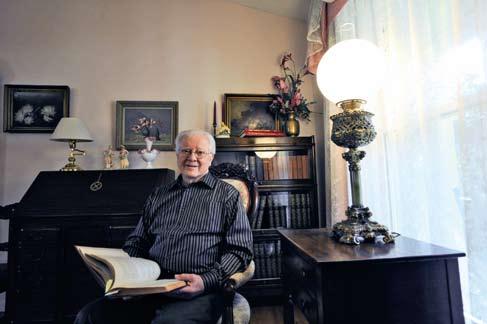
SPR i NG 2010
Robin Forman, a mathematics scholar and dean of undergraduates at Rice university, has been chosen as the next dean of the Emory College of Arts and Sciences, starting July 1. Forman, a graduate of the university of Pennsylvania with a PhD from Harvard in mathematics, also will hold the title of Asa Griggs Candler Professor of Mathematics designate. Look for more in a future Emory Magazine
A few miles northeast of Emory in an Atlanta suburb, Edgar Francisco III 56G (pictured at left) and his wife, Anne Salyerds Francisco 54G, received that invitation. At his wife’s urging, Francisco wrote to Wolff-King: while he could not join her on the trip, he thought she might like to know that he had known Faulkner.
An economist who earned his doctorate from Yale University and worked in health care policy (including the creation of Medicare and Medicaid), Edgar Francisco grew up in Holly Springs, Mississippi. His father, Edgar Francisco Jr., and Faulkner had grown up together. The two men, Francisco says, shared a bond in their hunting and storytelling. “They would go quail hunting and then come in and have several beers. [Hunting] had been a tradition with those two men from the time they were nine years old.”
Francisco remembers spending many hours as a young boy in the 1930s listening to the two men talk. Mostly Faulkner would listen to his friend Edgar tell family stories. “He was a wonderful storyteller. Faulkner would say, ‘Edgar, tell me that story again.’ And Dad would be glad to tell it again. Faulkner would be taking notes.”
When Wolff-King first interviewed Francisco in March 2008, she was thrilled
yerkes researchers are selected as aaas fellows
Stuart zola, director of Yerkes National Primate Research Center, and Larry Young, Yerkes researcher and professor in the School of Medicine, have been selected as fellows by the American Association for the Advancement of Science—zola for his work in neuroscience, delineating the brain’s memory system; Young for his research in neurogenetics on genes, the brain, and social behavior.
6 magazine spring 2010
“T HE PAST
S NE
ER
— Wi LL ia M f au LK ner , R E qui EM f OR A nun ER i K S L ESSER / SPEC i AL
i
v
DEAD iT ’ S NOT E v EN PAST .”
to find a new source of personal stories about Faulkner, but she had no idea of the treasure he held. Neither, for that matter, did Francisco. Then, in the midst of a conversation about Francisco’s family history, Anne suggested, “Why don’t you show her the diary?”
Francisco hesitated, then he left the room and returned with a library-bound copy of eighteen hundred pages of farm journals kept by his great-great-grandfather, Francis Terry Leak, a wealthy plantation owner, between 1839 and 1862. When Wolff-King saw those stunning ledger entries, she asked Francisco, “ ‘Have you ever read Go Down, Moses?’ But Francisco said, no, he hadn’t read much Faulkner. I said, ‘Well, do you think your father ever read Go Down, Moses?’ ‘I doubt it,’ he said.
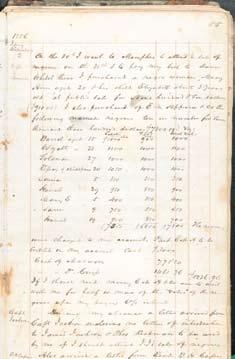
“I was struggling to figure out how this document and Go Down, Moses could resemble each other so closely. Finally, I said, ‘Do you think William Faulkner could have ever seen this diary?’ And he said, ‘Oh, yes, he liked to look at it.’ ”
Indeed, writes Wolff-King in an article recently published in the Southern Literary Journal (her book is forthcoming in June
from LSU Press), Faulkner not only read the diary but “pored over” it “many times” during the course of about twenty years. Sometimes, Francisco says, he and his father would find Faulkner speaking aloud at the diary as he read: “[He] would be sitting there, cursing away and taking notes.”
It was, says Wolff-King, “as if he were in conversation with the diarist,” a slaveowning Confederate supporter. “I suspect that Faulkner was arguing with history.”
Wolff-King guarded her secret for two years, until she had completed some careful analysis and research. She borrowed the typescript copy (Francisco’s family had donated the original books, which scholars have mined for insights into antebellum culture, to the University of North Carolina at Chapel Hill library in 1946) to follow a trail of evidence from the diary into Faulkner’s fiction. She traced it across a broad range of works, in details such as the construction of a plantation house (Absalom, Absalom!) and the ticking of a watch (The Sound and the Fury). Most poignantly, however, the names and particular qualities of slaves documented in the diary seem to have ended up in some of the more
fulbright scholars selected to teach and travel Assistant Professor of Physics Stefan Boettcher, Samuel Candler Dobbs Professor of History Thomas Burns, and Kenya Casey, assistant director of the Center for international Programs Abroad, have been selected as Fulbright Scholars and will be going abroad to lecture and conduct research. Two visiting Emory scholars are also Fulbright recipients.
sympathetic characters in the novels. “Candis,” a slave on the Leak plantation, perhaps became “Candace,” a heroine in The Sound and the Fury.
“To me it seems that he was sympathetic with the slaves and their plight,” Wolff-King says, “and by resurrecting their names and recounting some of their stories, he memorialized them.”
Francisco kept silent for all those years about his family’s relationship with Faulkner because revealing it also makes public his own argument with history. The efforts of one great-great-grandfather, John Ramsey McCarroll, to end slavery before the war enraged his other greatgreat-grandfather, the loyal Confederate, Francis Terry Leak. After the Civil War, the two families were bound by marriage yet remained in conflict over property disputes. The diary came to represent that painful past.
For Francisco, who volunteered as an Emory student with the Student Nonviolent Coordinating Committee and helped plan the 1965 civil rights march from Selma to Montgomery, his family’s slave ownership was also difficult to face. He senses that Faulkner’s writings resonate with this conflict. “If I started trying to read one of the books I got very apprehensive that I was going to find something out that I wouldn’t like to know,” he says. “I didn’t want to recall it, whatever was there.”
Francisco adds that as a child, “When I found out that the man Faulkner was furious with was my great-great-grandfather, I reached the conclusion that he was angry with me. And that he wouldn’t want to talk to me any more, that I had lost my friend. I adored him. I knew he was important.”—Allison Adams 00G
emory appoints a trio of new trustees
Emory has appointed three new members to serve a six-year term on its forty-one-member Board of Trustees, which oversees the university’s governance and finances. The new trustees are Muhtar Kent, president and CEO of The Coca-Cola Company; facundo Bacardi 96L, chairman of the board of Bacardi Limited; and Kathelen amos 79C, president of the Aflac Foundation.
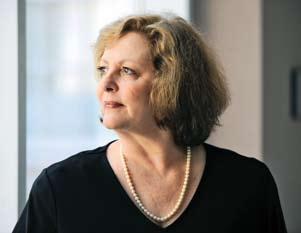
spring 2010 magazine 7 of Note
ne W L ight: sally Wolff-King, a faulkner scholar, realized the connection between his works and the francisco family journal, left.
D ARY S O u THERN Hi STOR CAL C OLLECT ON /Li BRARY OF THE uN iv ERS TY OF N ORTH C AROL NA AT C HAPEL Hi LL WOLFFK NG ER K S L ESSER / SPEC AL
Buffalo wings and

astrochemistry?
A crowd is packed into the back room of Manuel’s Tavern in Atlanta, an old-school watering hole known for its clientele of politicians and law enforcement. They are sharing pitchers of beer, noshing on nachos and wings, and waiting to see Emory neuroscientist Todd Preuss talk about brains.
Preuss, an associate research professor at Yerkes National Primate Research Center, is momentarily taken aback by how many people have shown up on a chilly
Saturday to watch him give a PowerPoint on the evolutionary connections between human brains and those of other members of our extended primate family. “My mother would never believe it,” he says with a smile.
The Atlanta Science Tavern, modeled after science cafes that have sprung up in metro areas around the country, began in summer 2008. “We gather in a casual environment, like a cafe, restaurant, bar, or home, to share a bite to eat and pint
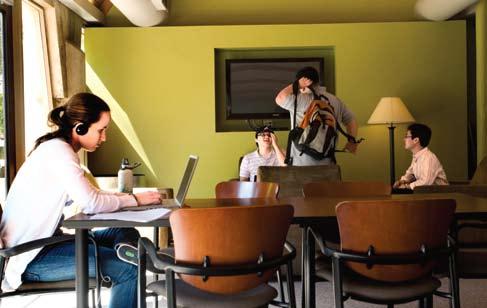
CH3 CH2 OH
CH 3CH 2OH
CH 3CH 2OH
CH 3CH 2OH
CH 3 CH 2 OH
HCH3CH2OH 2OH
to drink, and to discuss interesting news and views about scientific advancements and discoveries and how they affect our daily lives,” says cofounder Josh Gough, a technology professional in Atlanta. “The idea came from PBS and NOVA’s Science Cafe movement.”
The Science Tavern’s other cofounder, Carol Potter, is a high school biology teacher and an Emory parent to Cindy Potter 05C. Emory scientists are regularly featured at Science Tavern gatherings, talking about topics from inaccurate movie “science” to the clash between dolphin intelligence and human ethics.
Common grounds Coffee house in Cannon Chapel, sponsored by the Office of Religious Life, has opened in Brooks Commons as a centrally located gathering spot just off the Quad for students, staff, and faculty to hang out, watch and discuss films, hear live music, participate in an open mic night, hold study groups, or just relax with a cup of fair trade Green Bean coffee and a snack.
i NG 2010
goizueta undergraduate program ranks in top ten Goizueta Business School ranked seventh in the annual evaluation of undergraduate business programs compiled by Bloomberg BusinessWeek, which considers student and recruiter surveys, starting salaries for graduates, alumni who go on to top MBA programs, SAT scores, student-faculty ratios, class size, percentage of students with internships, and number of hours spent on classwork.
Marc Merlin 75C, who works for an Atlanta nonprofit and writes the blog Thoughts Arise, joined the group about a year ago and enjoys discussing issues like climate change, vaccination safety, and the teaching of evolution. “The Science Tavern,” says Merlin, “has reaffirmed for me the existence of a community of people who hold well-reasoned, dispassionate argument in high regard.”—M.J.L.
To find out more about Atlanta Science Tavern, go to www.atlantasciencetavern.com. for more about science cafes across the country, go to www.sciencecafes.org
Margaret atwood selected to give ellmann Lectures
Renowned Canadian author and Booker Prize-winner Margaret Atwood will deliver the Richard Ellmann Lectures in Modern Literature at Emory October 24 to 26. The author of The Handmaid’s Tale, The Penelopiad, and Oryx and Crake will present a series of lectures, “in Other Worlds: SF and the Human imagination.”
8 magazine spring 2010 of Note
SPR
. . .
sC ien C e t avern i S A
CAS
CLASSROOM
MORE
u AL
ANN BORDEN LL u STRAT i ON BY ER i CA END i COTT
L
autism? a new fiveminute assessment
With autism and related disorders, time is of the essence. The younger a child is when diagnosed with an autism spectrum disorder (ASD), the earlier the intervention and the better the chance of a successful outcome.
Support Central
Psychologist Mark McLeod 82 Ph D , director of Emory’s Student Counseling Center, walks to work every day. He needs the time to clear his mind, reconnect, and sometimes, to stop and chat with students.
As the face of the Counseling Center, which recently moved to new offices on Clifton Road, he wants to make sure students see mental health care as accessible, convenient, and nonthreatening.
“Some perceive our students as an elite group that isn’t dealing with anything serious, but that’s not so,” McLeod says. “We deal with life-threatening issues more than any other office on campus.”
Depression and suicide attempts have been increasing at college campuses across the country, and Emory is no exception. In the past year, more than thirty students were hospitalized primarily for suicidal thoughts or behaviors—a 50 percent increase from four years ago. The University has experienced an average of one suicide a year.
The increase in hospitalizations, McLeod says, probably means more students are receiving help before it’s too late. The University recently received a threeyear, $100,000 campus suicide prevention grant from the Substance Abuse and Mental Health Services Administration. In recent years, the Counseling Center has increased outreach and education about suicide risks, provided online screenings, reached out to at-risk students, and hired additional staff. The grant will allow this type of outreach to continue, says its principal investigator, Professor Nadine Kaslow.
The Emory Autism Resource Center and the Health Systems institute at Georgia institute of Technology have developed an assessment designed to help pediatricians identify children at risk for autism spectrum disorder. A pilot test on the Rapid Attention Back and Forth Communication (Rapid ABC) screener is being conducted at Emory and Georgia Tech.
Guidelines released by the American Academy of Pediatrics recommend that pediatricians screen infants for ASD during their eighteen-month and twentyfour-month well-baby visits. A typical evaluation to diagnose ASD takes from two to four hours to complete.
The Rapid ABC screener, however, is designed for use in a pediatrician’s office and takes about three to five minutes to complete. it includes activities that test gesturing, attention level, body language, and eye contact.
suicide remains the second-leading cause of death among college students, with more than 1,100 suicides occurring on college campuses each year. in a 2008 assessment sponsored by the american College health association, one in three undergraduates reported feeling so depressed it was “difficult to function,” and one in ten reported that they “seriously considered” suicide.
The University also added a $50 mental health and counseling fee for each student per semester in 2008. “If we are asking more students to come to us for our services, we must be able to meet that demand,” McLeod says. “This makes a clear statement that we address mental health needs in our community without embarrassment or anxiety.”—M.J.L.
One in 150 children in the united States has some form of autism spectrum disorder, according to the Centers for Disease Control and Prevention.
“This technology has the potential to give pediatricians an efficient way to identify these children at a time when they can benefit the most,” says Opal Ousley, principal investigator of the study and assistant professor in the Department of Psychiatry and Behavioral Sciences.
developing new drugs for neglected diseases
Scientists at the Emory institute for Drug Discovery will partner with GlaxoSmithKline (GSK) and Alnylam Pharmaceuticals on research aimed at developing new drugs for neglected tropical diseases in the world’s poorest countries. Neglected diseases targeted by the program are sixteen that have been identified by the u.S. Food and Drug Administration, including tuberculosis and malaria.
emory professor honored in pretoria
i.T. Cohen Professor of international Law and Human Rights Johan van der vyver, who played an active role in efforts to end apartheid and bring constitutional reform to his native South Africa, has been named an Extraordinary Professor at the university of Pretoria in South Africa, where he will lecture in the Department of Private Law and with the Centre for Human Rights’ joint-degree program.
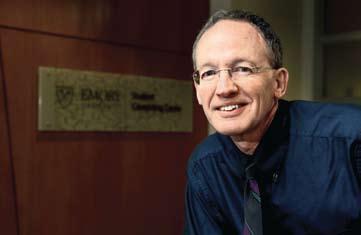
spring 2010 magazine 9 of Note
ife L ine: the student Counseling Center, which opened in 1982, has moved to a new spot in the center of campus.
A L u MN u S Mar K M C Leod 82 phd B ui LDS AWARENESS ABO u T ST u DENTS ’ MENTAL HEALTH
K AY H NTON
Oxford Plans Ahead
J ust thin K : oxford faculty, staff, and students say they look forward to spaces that keep pace with the college’s ambitions. at left, a rendering of the Library and academic Commons. Below, a sketch of the science building.
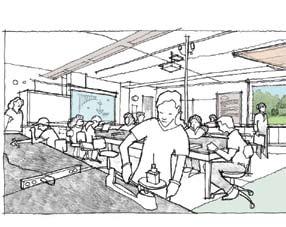
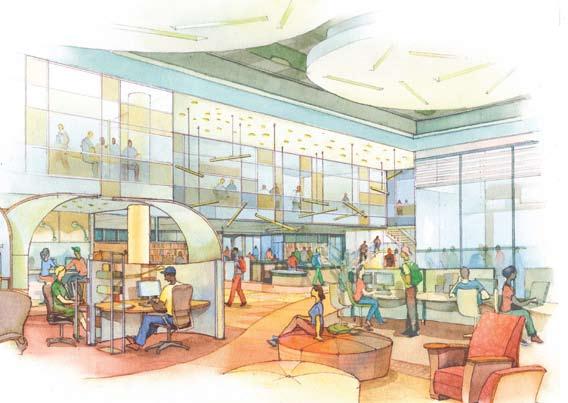

cramped and lack basic equipment,” he says. “Despite these limitations, Oxford’s science students are often at the top of the class when they receive their Emory baccalaureate degrees. Just think what our faculty will be able to accomplish with the new building.”
Likewise, Oxford’s library is housed in a 1970s building that has been adapted in makeshift ways to support the needs of students toting laptops and using dual computer screen work stations for multitasking.
Thanks to a jump-start from an alumnus donor’s estate, as well as fund-raising by the college and alumni alike, these stateof-the-art projects are moving forward.
The Charles Edwin Suber Foundation, established by the estate of Charles Edwin Suber 42Ox, donated $3.35 million to Oxford last year. Bowen says the college will use $100,000 to establish a scholarship in Suber’s name, and the remaining $3.25 million is pledged to the building projects.
Carter led the team charged with developing the concept for the new science building and is currently completing the feasibility study with architects Einhorn, Yaffee, and Prescott, known for their design of undergraduate science facilities.
Professor of Biology Eloise Carter says Oxford’s innovative science program is designed to engage students in laboratory experiences: designing independent investigations, using green chemistry
and our world better.”
LEARNING COMMONS
LIBRARY AND ACADEMIC COMMONS
Oxford’s science teaching facilities are something of a paradox, says Bowen. “The original designs were parsimonious, and by contemporary standards the spaces are
$2.4 million grant supports changes in humanities
The university has received a grant of $2.4 million from the Andrew W. Mellon Foundation to support the reassessment, reconfiguration, and strengthening of the humanities across the campus.
Provost Earl Lewis says the program will build on three broad areas: digital scholarship, mind/brain neuroscience, and humanities in the age of the human genome.
genetic database will help disease and disorder researchers
Thanks to a $3.4 million federal stimulus award to Emory, the international Standard Cytogenomic Array Consortium (iSCA), a new genetic database of more than 200,000 cases collected in clinical testing labs worldwide, will soon be available free and online to researchers seeking clues to developmental disorders, according to Robert W. Woodruff Professor of Human Genetics David Ledbetter.
10 magazine spring 2010
Oxford, Georgia Cambridge, Massachusetts OCTOBER 2007 READING ROOM
SPR i NG 2010
NEW s C ien C e a nd Math B ui L ding, Li B rary and aC ade M i C C o MM ons COME CLOSER TO REAL i TY
CO u RTESY O x FORD COLLEGE
The college has raised about $20.5 million, including the Suber gift, toward its $30 million goal.
The environmentally sustainable building, designed to be LEEDcertified, will support the needs of undergraduate sciences including chemistry, biology, physics, astronomy, geology, and mathematics. In addition to well-designed classrooms and labs with modern instrumentation and double the number of fume hoods, the new building will offer ample space for faculty and student collaborations.
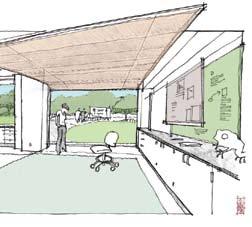
“Everything about this building is going to be supportive of Oxford’s teaching mission,” Bowen says. “We have a real focus on students engaging in the scientific process so that they learn to think like scientists.”
Oxford’s library staff has been modernizing the existing library program for years, developing digital resources, teaching computer research skills, and creating a virtual presence on the web.
“We don’t just bring students in during orientation and give them a crash course on research methods,” says Librarian Kitty McNeill. “We work with faculty to fully integrate
these methods into every course. Students leave here knowing how to critically evaluate information.”
The library serves an average of 750 students a day and its peak time is 10:00 p.m. And librarians no longer shush students. “You can talk and camp out. We even have vending machines. During finals, we’ll put out snacks, hot chocolate, and coffee,” McNeill says. “It’s a fun place to get together.”
Still, the need for a new space is great, she says, and the library team soon will be launching a proof-ofconcept study and demonstration project on the first floor—a working model of the learning environment that will be at the heart of the new Library and Academic Commons. This renovated area will have teaching, research, and collaborative spaces with finishes, furniture, and equipment that will be used in the new building.
In the meantime, because of the transformation of the library into a digital commons and dynamic gathering spot, students who desire a more traditional study environment can go next door to Phi Gamma Hall, which has 24/7 swipe-card access for quiet reading and wireless Internet.
Hugh Tarbutton Jr. 84Ox, who is leading the drive for the new Library and Academic Commons, says the needs of students today are vastly different than during his time at the college. “Advances in technology and study habits need to be reflected in how we design our new library,” he says. “It’s all about progress— progress for the college, which affords progress for the students and faculty.”—M.J.L.
human papillomavirus vaccine shows promising results
A five-year, international study has shown that human papillomavirus (HPv) vaccinations given to young women decrease abnormal pap smears, biopsies, and genital warts, which will probably translate into lower rates of vaginal and cervical cancers, says study coinvestigator Kevin Ault, associate professor of gynecology and obstetrics.
opening pitch
G O izu ETA AL u M G iv ES WO u LDBE entrepreneurs A SHOT
The obstacles facing fledgling businesses are daunting: they need investors, angel funding, or partnerships with larger companies to get off the ground. But Atlanta’s third-annual Startup Riot, founded by sanjay parekh 06MBa, aims to help entrepreneurs with startups make connections and build awareness about their ventures.
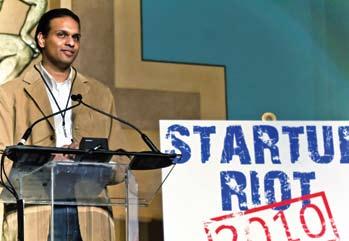
This year’s Startup Riot attracted more than four hundred observers and gave fifty hopefuls the opportunity to present three-minute pitches. As on ABC’s popular reality television show Shark Tank, real-life investors can choose to bite—or not.
Parekh selects those who get to present, and they’re typically technology- and internet-related. “i’m looking for an interesting business that is scalable,” he says.
One with high potential was Learn it Live, an online marketplace that allows users to connect with instructors in interactive classes. “The Startup Riot brings together top experts and leaders in the Atlanta business and entrepreneurship realm,” says founder sid slover 03BBa. “it was the right event at the right time.”
For now, Parekh has no plans to expand the Riot into other cities, preferring to focus on local entrepreneurship, one hopeful pitch at a time.—Mallory Goldberg 10C
professor Kevin young wins graywolf prize Atticus Haygood Professor of Creative Writing and English Kevin Young has been awarded the Graywolf Press Nonfiction Prize, designed to honor and encourage the art of literary nonfiction. Young will receive a $12,000 advance for his manuscript, The Grey Album: Music, Lying, and the Blackness of Being, and the press will publish the collection of essays in spring 2012.
spring 2010 magazine 11 of Note
CO u RTESY SANJAY PAREKH
upstart: sanjay parekh 06MBa started his own company, digital e nvoy, and wants to help others do the same.
Collective Knowledge
E MORY ’ S eM eritus Co LL ege i S A H u B OF CAMARADER i E AND NEW CONNECT i ONS
The brainpower in the room is nearly palpable. A renowned historian is chatting with a noted thespian. A former dean is deep in conversation with a physics professor and an obstetrician. Wherever this group gathers, such as this party in Dobbs University Center, instantly becomes one of the most interdisciplinary spots on campus.
“The Emeritus College is a melting pot, if you will, where disparate disciplines come together,” says Brenda Bynum, who joined after retiring from the Department of Theater Studies. “The mix can be exhilarating and is a welcome expansion of the more sequestered departmental environment that prevails in one’s working years.”
Based at the Briarcliff Campus, the Emeritus College began in 2001 to enhance the relationship between retired faculty and the University. The group now has nearly 140 active members and sponsors an annual Sheth Distinguished Lecture, the Heilbrun Fellowship for retired faculty (with Emory College), and an ongoing Living History Project.
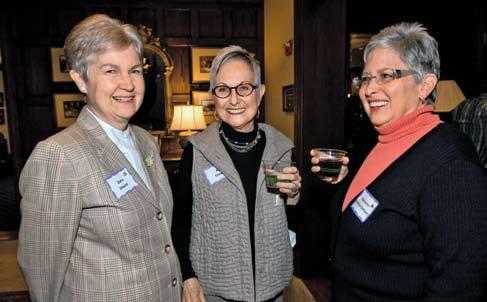
The Chronicle of Higher Education found that retired professors who are active in emeritus colleges are more likely to reconnect with longtime colleagues and stay involved with current students.
“This increasing cohort of long-lived emeriti is a potent resource for Emory,” says Dean Emerita of Oxford College Dana Greene 71PhD, a member who is writing a biography of the poet Denise Levertov. “The Emeritus College gives an old rank new meaning for the benefit of its members and the institution they served.”
Professor of Social Ethics Emeritus Jon Gunnemann, who recently retired from Candler School of Theology, says he became involved with the Emeritus College out of a concern for the way universities engage—or fail to engage—their retired faculty.
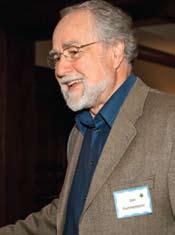
“On the whole, universities have not been very good at this, I think,” he says. “The most difficult moment in my
retirement came when I closed down my faculty office, sorting through the accumulations of an academic lifetime. For more than forty years, I had had an office with my name on it where I met with
1990s, intending for it to be a social and intellectual hub for retired faculty.
“When I started this I was nowhere near retirement age myself, although I am now,” says Bugge, chair of the Emeritus College’s executive committee. “I was mainly interested in it as a major fringe benefit for faculty, who—at Emory, at
eM eritus Co LL ege
established: 2001
Mission: To provide opportunities for continued intellectual, creative, and collegial engagement of the emeritus faculty with and in service to Emory.
Members: 139 and growing
Most represented: School of Medicine
students, talked with colleagues, worked on lectures. All of this was no more. I was still intellectually alive and curious . . . but what was I to do with this?”
This was just the question Professor of Religion Emeritus Gene Bianchi and Professor of English John Bugge wanted to answer when they began organizing Emory’s Emeritus College in the late
least—had quite often retired and then just gone missing, with no further systematic contact with the institution.”
“All the better,” says Bianchi, “if we share our work over a little wine and homemade cake.”
Emeritus College director Nan Partlett says it is often difficult to schedule meetings, however: the members are too busy traveling, writing books, and embracing the role of public intellectual.—M.J.L.
12 magazine spring 2010 of Note
retired, B ut not tired: from left, dana g reene 71phd, ali Crown, and Marianne scharbo- dehaan; below, Jon g unnemann.
ANN BORDEN
When Jon Gunnemann retired earlier this year, a former student, Louis Ruprecht Jr. 90PhD, composed an essay commemorating his remarkable career. To read the essay, please visit www.emory.edu/magazine.
Scottish Play
Cumbie-Drake, Walter Ecton, and Philip May have been chosen to con tinue a rich tradition as the 2010–2011 Robert T. Jones Jr. Scholars, set for a year of study at the University of St. Andrews in Scotland. The Robert T. Jones Jr. Fellow is Surabhi Agrawal.
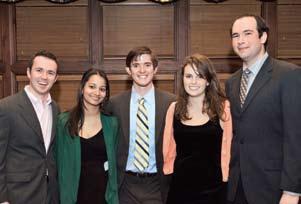
and deeply involved in the Emory community and beyond,” says Joanne Brzinski, senior associate dean of undergraduate education, who oversees the selection process. “As individuals, they each bring particular strengths and diverse backgrounds that will make them all great ambassadors for Emory.”
Cumbie-Drake, an anthropology major, plans to take courses in sustainability that build on her academic program at Emory, as well as courses on Scottish history and culture. Dry is a double major in chemistry and religion; at St. Andrews he plans to pursue coursework in medicinal chemistry in preparation for graduate work in that field. Ecton is completing his degree at Emory as a double major in political science and theater and plans to pursue a graduate degree in peace and conflict studies at St. Andrews. May, a chemistry and Greek double major, plans to pursue a graduate degree in Greek.
donors’ gifts honored
This spring, longtime Emory donors Pete and Ada Lee Correll received the Association of Fundraising Professionals’ (AFP) top philanthropy honor, the Paschal Murray Award for Outstanding Philanthropist. The couple was nominated by Emory and the AFP Greater Atlanta Chapter.
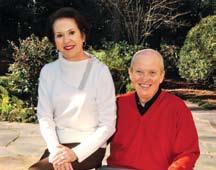
On their long list of charitable efforts, Emory has been a significant recipient. The couple recently donated to the Emory School of Medicine to fund termlimit chairs and scholarships. The Corrells also served as chairs of the school’s 150th anniversary celebration, and Ada Lee currently chairs the $500 million School of Medicine campaign, part of the larger $1.6 billion Emory campaign.
Widely known as the Bobby Jones Scholarship, the award was established in 1976 to recognize students who will represent the University at St. Andrews, Emory’s sister institution. Their qualities include intellectual excellence, a significant leadership record, and academic interests that can be pursued through the offerings at St. Andrews. The scholars receive full tuition and a travel stipend for their year of study. In addition, four St. Andrews students are chosen to spend a year at Emory.
“The four scholars and fellow selected are all very accomplished academically
The Robert T. Jones Jr. Fellowship enters its third year with the selection of Agrawal. Fellows receive full tuition and stipends for the duration of a postgraduate degree program. Each year, one fellow is chosen from both Emory and St. Andrews. Agrawal, from Miami, is an international studies major at Emory and will pursue a graduate degree in international relations at St. Andrews. She is a Woodruff Scholar and is completing her honors thesis on the role of local institutions in India in maintaining peace in villages.
Recipients are selected by a committee of faculty, administrators, and trustees of the Robert T. Jones Committee as well as former Jones scholars. The late Bobby Jones 27L, an internationally renowned golfer, was an Emory School of Law alumnus remembered by those who knew him as an extraordinary man of rare loyalty, compassion, and integrity.
“Pete and Ada Lee have invested not just their time and resources in Emory’s medical school but also their hearts,” says Thomas J. Lawley, dean of the School of Medicine. “Their gifts are helping our faculty and students in very concrete ways every single day, and their vision and leadership have been fundamentally important in helping shape our future.”
Bobby Jones at emory
The Bobby Jones Collection at Emory’s Manuscript, Archives, and Rare Book Library includes a wealth of material such as photographs, drawings, videocassettes, news clippings, and newsreels documenting Jones, the 1930 Grand Slam, and Masters Tournaments from 1965 to 1969. Golf fans also can find articles by and about Jones, pieces of his golf memorabilia, manuscripts, and audio tapes documenting Jones’s twenty-fifth anniversary in golf and an interview with him in 1960.
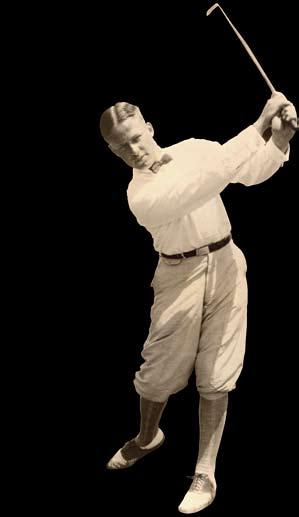
spring 2010 magazine 13
Emory seniors Emily
N EW
Jones
TEE i S T . A
B OBBY J ONES COLLECT ON , M AN u SCR i PT A RCH iv ES AND R ARE B OOK Li BRARY EMORY u N iv ERS TY SCHOLARS TOM B RODNA x
off to s C ot L and: from left, Walt e cton, surabhi a grawal, steven dry, e mily Cumbie- drake, and philip May.
Tiny Aphids, Big Surprises

Pea aphids, expert survivors of the insect world, appear to lack major biological defenses, according to the first genetic analysis of their immune system. “It’s surprising,” says Emory biologist Nicole Gerardo, who led the study, published in February in Genome Biology. “Aphids have some components of an immune system, but they are missing the genes that we thought were critical to insect immunity.”
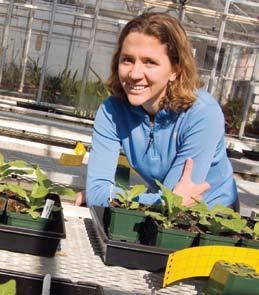
Pea aphids are major agricultural pests, yet important biological models for studies of insect-plant interactions, virus vectoring, and genetic plasticity. These resilient insects thrive despite a host of enemies, including parasitic wasps, lady bugs, fungal pathogens, and frustrated farmers and gardeners the world over. So, given their lack of immune defenses, how do they protect themselves?
Perhaps by focusing on reproduction: from birth, a female aphid contains embryos that also contain embryos. “She is born carrying her granddaughters,” Gerardo says. “In a lab, a female aphid can produce up to twenty copies of herself per day. About ten days later, those babies will start producing their own offspring.”
Over 50 million years, aphids have evolved complex relationships with beneficial bacteria that supply them with nutrients or protect them from predators and pathogens. It’s possible that the weak immune response in aphids developed as a way to keep from killing off these beneficial microbes. Further study of how the aphid immune system works could yield better methods for controlling them in agriculture and provide insights into human health.
perfe C t pit C h EMORY i N THE NEWS
power List: georgia trend named Emory President James Wagner to its list of “100 Most influential georgians: georgia’s power List.” He was cited for his leadership of the university in a challenging economic environment. Betty Willis, senior vice president for governmental and community affairs, also was named to the magazine’s list of notable Georgians.
stimulus impact: “As a policy tool for creating jobs, this doesn’t seem to have much bite,” said Goizueta Business School professor thomas smith in a national Associated Press story examining the effect of stimulus money in creating jobs.
LgBt advantage: david W. hanson, associate vice president for finance and special assistant to the executive vice president at Emory, wrote a column for the Chronicle of Higher Education on ways a campus can be more welcoming for people who are gay, lesbian, bisexual, or transgendered, and gain a competitive edge in hiring top talent.
Candler noted: An Atlanta Journal-Constitution profile of Atlanta’s theology schools noted that Emory’s Candler school of theology is considered one of the top theology programs
find more Emory news and subscribe to RSS feeds at www.emory.edu/home/news/.
“We need beneficial bacteria for proper digestion in the gut and to protect against cavities in the teeth,” Gerardo says. “Some people feel sick when they take antibiotics because the drug kills off all the beneficial bacteria. If we can study the process of how to keep beneficial bacteria while clearing out harmful bacteria across several organisms, including aphids, we might be able to understand it better.”—Carol
Clark
in the world, with textbooks written by its professors used by many schools.
dolphin smarts: Neuroscience and behavioral biology lecturer Lori Marino gained international coverage of her research on dolphin intelligence and advocacy for better treatment of the marine mammals. Outlets included the Sunday Times (London), ABC Radio National (Australia), Daily Mail (uK), Science news, MSNBC. com, ABCNews.com, Discovery News, and BBC Radio. CNN turned to Marino for expert commentary on killer whale behavior after the tragic incident at Sea World in February.

archive attraction: The opening of Emory Distinguished Writerin-Residence salman rushdie’s archive in emory’s Manuscript, archives, and rare Book Library and a related exhibit was covered by the Atlanta Journal-Constitution and the Associated Press in an article picked up by the Guardian (uK), Los Angeles Times, Boston Globe, Chicago Sun-Times, and around the world in more than two hundred outlets.
Lots of Buzz: The invention of a better tool to hunt and monitor mosquitoes by environmental studies researcher gonzalo prokopek garnered coverage from CNN-international, the Atlanta Journal-Constitution, Discovery Channel, uSA Today, and PlanetGreen.com.
14 magazine spring 2010 of Note
THESE TO u GH L itt L e B ugs CO u LD TEACH u S A LO T
nicole g erardo
14 magazine spring 2010 GERARDO BRYAN MELT z; APH DS : CO u RTESY N COLE GERARDO DOLPH i N STOCKPHOTO COM
To see a video on the aphids study from eScience Commons, visit www.emory.edu/magazine.
What’s in your digestive tract?
Hungry? Don’t feel too guilty.
Your appetite could be spurred by intestinal bacteria, according to Emory researchers. increased appetite and insulin resistance can be transferred from one mouse to another through intestinal bacteria, says a study published in March by Science magazine. The finding bolsters previous evidence that these bacteria can contribute to human obesity and metabolic disease.
“it has been assumed that the obesity epidemic in the developed world is driven by an increasingly sedentary lifestyle and the abundance of low-cost, high-calorie foods,” says Andrew Gewirtz, associate professor of pathology and laboratory medicine at Emory’s School of Medicine, who authored the paper with pathology instructor Matam vijay-Kumar. “However, our results suggest that excess caloric consumption is not only a result of undisciplined eating, but that intestinal bacteria contribute to changes in appetite and metabolism.”
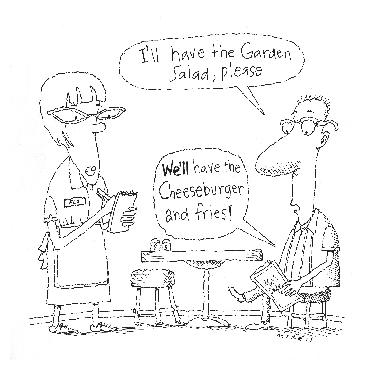
The researchers studied mice engineered to lack a substance in the intestine known as TLR5 that senses and controls bacteria. Compared to mice that have TLR5, they were found to be about 20 percent heavier and show characteristics of metabolic syndrome, a cluster of disorders that in humans increases the risk of developing heart disease and diabetes. quinn
Eastman
sustainable
Efforts
forces of nature
AL u MN i LEA v E A LEGACY OF EN vi RONMENTAL i SM
Thinking green on Emory’s campus is nothing new: a number of late alumni were well-known environmentalists, among them Charles Wharton 48C, adjunct research associate at the University of Georgia’s Institute of Ecology, who wrote The Natural History of the Blue Ridge and was a powerful force for conservation, and sociologist Howard Washington Odum 1904C, father of noted ecologists Gene and Tom Odum. Their work continues to spread ripples of awareness long after their deaths.
Perhaps the best known, however, was George Page 57C, from the rural community of Hartwell, Georgia, who was the creator and host of the award-winning public television series Nature.
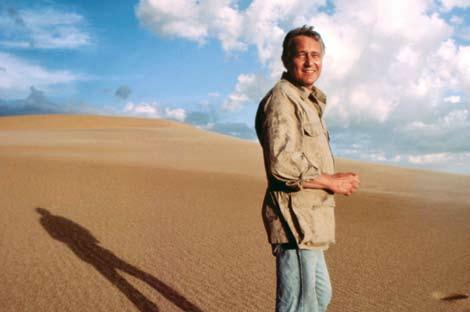
When the wildlife and natural history show first aired in 1982, viewers listened to Page’s deep voice telling in-depth stories of the wonders of the natural world, from condors to ice bears to Komodo dragons.
Page helped the Nature team develop a signature look and feel for the series. “Nature is never flashy,” said executive producer Fred Kaufman in a tribute to Page on PBS.com.
“The music and effects are very studied, intelligent.”
A journalist and broadcaster for more than fifty years, Page wanted to educate viewers without “sermonizing,” so Nature did more showing than telling, with spectacular footage of wild animals and their habitats. The show became one of PBS’s most popular, highest-rated, and most enduring series, receiving two Emmy Awards for informational series.
In 1990, Emory awarded Page a Doctorate of Humane Letters “for his contributions to science education in the United States.”
Forced by health problems to retire in 1998, Page turned his attention to writing, completing the book Inside the Animal Mind, which became a three-part miniseries.
Page died in 2006 at age seventy-one in Equinunk, Pennsylvania, leaving his lifelong partner, Dennis De Stefano, and a generation of devoted fans.
The Emmy- and Peabody-Award–winning natural history series he started continues bringing the wonder of nature to new generations with up-close and unusual content.
The topic of a recent episode? The plight of Mephitidae, the misunderstood skunk family.—M.J.L.
spring 2010 magazine 15
LL u STRAT i ON D ON M ORR S ; PAGE ©WNET.ORG
BL ue s K y thin K ing: g eorge page brought nature into households nationwide.
Serious Fun
i ntra M ura L sports KEEP ST u DENTS HAPPY, HEALTHY, AND HARDCORE
It’s the men’s intramural basketball championship game, and the score is tight. The bleachers hold a few dozen students and fraternity brothers cheering the players. While the size of the audience may not be impressive, the enthusiasm is comparable to that of a varsity men’s basketball game—all that’s missing is the Eagle merchandise, cheerleaders, and shinier uniforms.
Despite the commonly held notion that students at Division III schools don’t care about sports, Emory’s intramural program indicates otherwise. Last year, 5,846 graduate and undergraduate students
played intramural sports. With that kind of participation at a school with about six thousand undergraduate students, it’s clear the students play to win.

Josh Levin-Scherz 11C has played intramural football, basketball, and softball since his first year at Emory. Since joining a fraternity his freshman year, Levin-Scherz has competed with Alpha Epsilon Pi. They recently participated in the men’s championship game against the winning team, S-Class. “Bragging rights are important among the fraternities,” he says. “Each frat tries to accumulate the most points each year so they can win All-Row.”
Unlike some college intramural programs in which Greek organizations play in a separate league, Emory’s students all compete together. Most of the Greek teams play in the A-league, where students take the game fairly seriously, according to Intramural Coordinator Daniel Overstreet. “It’s made up of a ton of former high school athletes,” Levin-Scherz says. “The A-leagues are also littered with athletes who used to play for Emory, but decided for whatever reason to stop playing.”
Randye Rand 10C, who also played in the men’s championship game for S-Class, says intramurals have made it possible to relish sports while experiencing other aspects of university life. Rand made the decision not to play varsity sports while weighing college programs.
“There are a lot of really good athletes here who figured they would be happier and go further by choosing an academic institution like Emory, instead of pursuing sports at top athletic programs in the country,” Rand says. “But that love for the sport never dies, so intramural sports is a way to satisfy that hunger to compete in organized sports without sacrificing the time that athletics requires.”
Courtney Rivkind 13C also considered choosing a school where she could play varsity basketball. But after her first season of intramural basketball for her sorority, Alpha Epsilon Phi, Rivkind is glad the program doesn’t demand the same level of competition or skill. “I didn’t think I was passionate enough about basketball, and to play a varsity sport you really have to love it,” Rivkind says. “A lot of people are playing intramurals to stay in shape while having fun, so it is not taken as seriously.”
In addition to basketball, intramural sports include flag football, softball, volleyball, soccer, and court hockey. Last season, basketball was the most popular with 107 teams (co-rec, male, and female) followed by flag football and soccer. While most teams don’t have coaches, intramural players recognize the advantages that team practices hold. “More important than practicing is simply playing together,” Levin-Sherz says.—Mallory Goldberg 10C
16 magazine spring 2010 Campus beat
f a C eoff: intramural players, at left in a championship game, relish the competition.
KAY H NTON
Portrait of a Dual Athlete
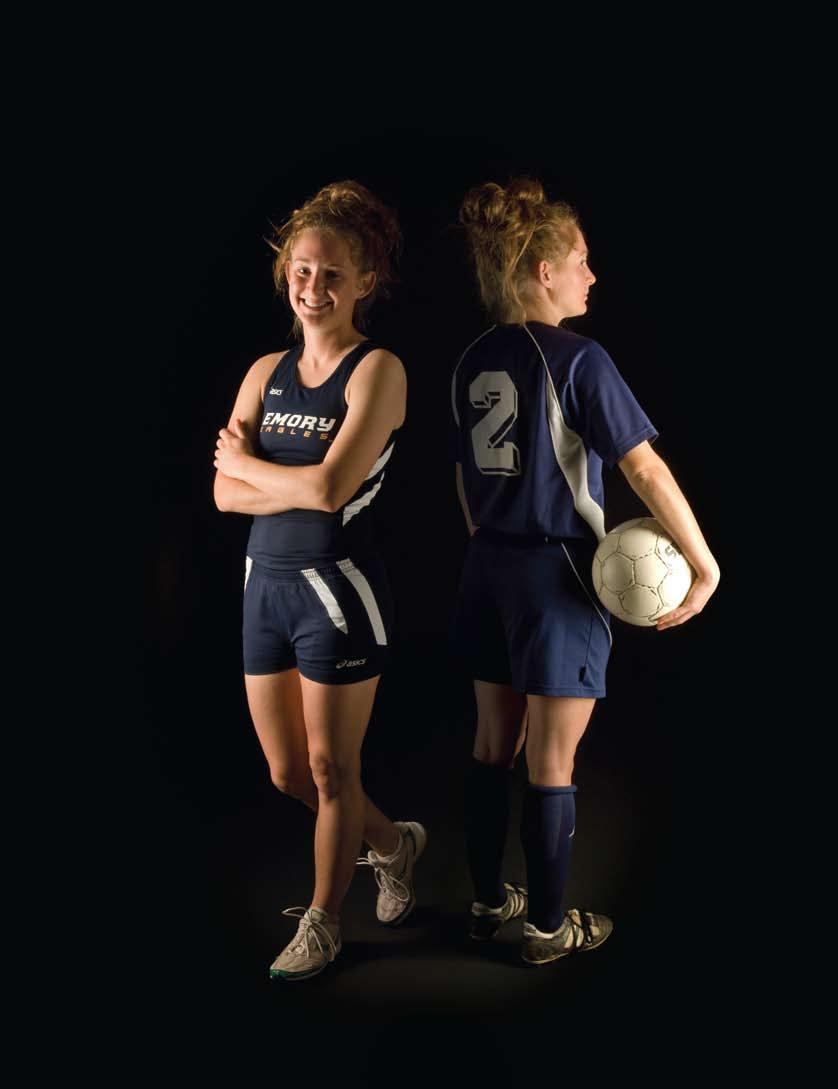
name: Melanie Levy 11C sports: Track (400 and 4 x 400 relay), soccer hometown: Plainview, New York
Major: Business, concentration in accounting and a minor in economics other activities on campus: Alpha Phi Omega service fraternity, BBA Leadership Academy program
on e M ory: “Athletics wasn’t my primary reason for coming to Emory, but it was definitely a big pull. My main criteria were strong academics.”
on W hat’s fun : “During relays and at the uAAs, track has a great team atmosphere because we are all out together to support each other. This makes uAAs really fun for track.”
on priorities: “Soccer is my priority, and thankfully my track coach understands that. He even let me leave a track meet early last year so i could participate in my spring soccer game.”
on C o MM it M ent: “Doing both sports is worth it because i have a commitment to both of the teams and coaches, and i can’t imagine not doing this through college, so i make it work. it’s hard, though, and it requires sacrifices.”
on the B enefits : “i feel confident that each sport helps my performance in the other.”
on M a K ing it W or K : “i love both track and soccer— the competition and the team dynamics—so it is important to me that i make it work, and i do. i’m pretty sure i’ve gotten academic honors from the conference every season.”
on C o M petition : “Soccer has a more competitive aspect to it than track because in track you’re competing individually most of the time. i really like the team aspect of soccer.”
on her C oa C hes: “My coaches are very understanding and accommodating. They make sure that i’m not being overworked.”
on B a L an C e : “Balancing sports and academics really requires time management skills and dedication. i’m tired from practice, but i have to be able to do work after . . . i have to make sure to take care of my body and not stay up too late or drink too much caffeine or energy drinks so that my body will be ready to perform at practice or games/meets.”
Compiled by Mallory Goldberg 10C
Photo illustration by Ann Borden
dynamic Forces
Mosquito-Borne Killer
E MORY vACC i NE C ENTER ’ S M a L aria resear C h progra M TAKES ON AN ANC i ENT , DEADLY PARAS i TE
King Tutankhamun, the young Egyptian ruler whose tomb contained legendary treasures, was a frail boy whose death came from complications from a broken leg and, researchers now believe, severe malaria.
Several years of DNA testing detected genes specific to the malaria parasite in several mummies, including Tut’s, a research team led by Egyptian archeologist Zahi Hawass reported in the February issue of the Journal of the American Medical Association (JAMA).
“Although there is no a clear evidence that malaria was the cause of King Tut’s death, it is exciting to have genetic evidence of malaria infection from a three-thousand-year-old royal mummy,” says Assistant Professor Alberto Moreno, codirector of the Emory Vaccine Center’s malaria vaccine core projects. “To make a malaria vaccine, it is critical for us to understand the interaction between the parasite and the host.”
A devastating, complex parasite, several different Plasmodium species infect three hundred million to five hundred million
people a year and more than one million die—most of them children in sub-Saharan Africa. Endemic in about a hundred developing countries in Africa, Asia, and along the tropics, malaria thrives, despite the availability of antimalarial drugs. There is no malaria vaccine available yet, and new drugs are needed in the face of resistant parasites, which have been on the rise.
net W or K er: Mary g alinski leads the Center for Malaria research with a broadbased, interdisciplinary approach.
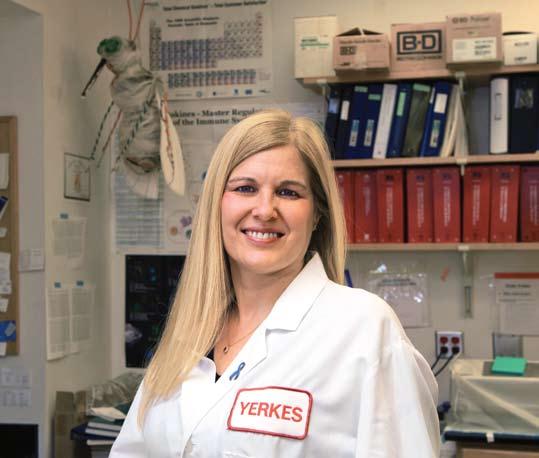
A molecular parasitologist, Galinski joined Emory’s School of Medicine, Division of Infectious Diseases, in 1998, when the University was just building the Emory Vaccine Center (EVC). She established Emory’s malaria research program when the EVC opened in 1999. Her husband, John Barnwell, is chief of the malaria laboratory research and development unit for the Centers for Disease Control and Prevention. “We have built independent as well as highly collaborative research programs,” says Galinski. “It’s a great partnership.”
Malaria in humans is caused by five species: Plasmodium falciparum, P. vivax, P. ovale, P. malariae, and P. knowlesi. The female Anopheles mosquito is the vector, or carrier, for malaria, which bites an individual infected with the disease and then passes the parasite on to someone else about two weeks later. Malaria parasites grow in the liver and then multiply in the blood, causing severe headaches, fever, chills, nausea, and sometimes, coma and death. To make matters worse, P. vivax and P. ovale malaria parasites can lie dormant in the liver for some

What is that thing?
Gonzalo vazquez-Prokopec and uriel Kitron, of the Department of Environmental Studies, have developed a battery-powered mosquito aspira tor that improves upon those currently available for mosquito collection and is much easier to build. understanding the habits and habitats of mosquitoes can go a long way toward develop ing tools and strategies for malaria prevention. To learn more and see an interview with vazquezProkopec, go to esciencecommons.blogspot. com/2009/12/mosquito-hunters-invent-betterweapon.html.
“At Emory, we take a broad-based approach—from understanding the various species and stages of disease development, to discovering parts of proteins that could be components of a vaccine and performing preclinical trials,” says Professor Mary Galinski. “We’re also seeking to identify disease processes unique to the parasite that can be disrupted with drugs.”
And that’s just the biological side of the battle: Galinski says researchers must also consider the social, cultural, and economic issues surrounding malaria.
time before restarting their multiplication cycle and illness in the blood.
Emory’s program is an international leader in researching P. vivax, which has received less attention than the more deadly P. falciparum but is proving to be dangerous in its own right. “We can’t eradicate malaria if we don’t think about
18 magazine spring 2010
KAY H NTON PROKOPACK : CO u RTESY GON z ALO v A z Q u E zPROKOPEC
vivax,” Galinski says. “Scientific leaders worldwide are coming to terms with this reality.” This includes colleagues across campus, foremost Professor Dennis Liotta, founder of Emory’s Institute for Drug Discovery, with whom they are researching new antimalarial drugs.
“When working with P. vivax and other malaria infections in monkeys, the parasite levels and health of the animals must be monitored daily,” says Yerkes Assistant Professor Esmeralda Meyer, a physician and member of the
Ma L aria
f ighter: alberto Moreno is trying to discover as much about the parasitehost interaction as possible.
biological and genetic research, as well as developing and testing vaccines and drugs,” Galinski says. “We’re searching not just for the quick fix, but for long-term solutions, which include thinking about global health concerns, education, and development.”
To this end, in 2006 they helped launch the End Malaria–Blue Ribbon symbol, and engage students through an elective course on malaria and a seminar series called the Malaria Scholars Program, which seeks to train “malariologists.”
happy is as happy does
Before you read this, pour yourself a cup of hot tea. Now, sit up straight. Smile. Hold that warm cup in your hand. Research is showing that these kinds of actions can positively influence what you think about a piece of writing.

“All the states of your body affect how you think. So does the environment,” says Professor of Psychology Lawrence Barsalou, a leading researcher of grounded cognition—the theory that thought is shaped by bodily states.
Your perceptions, then, can be colored by how you position your mouth (a smile or a frown), hold your body (alert or slouched), move your head (nodding yes or shaking no), and feel in your physical environment (comfortable, too hot, too cold).
“All of these things influence cognition in ways that have never been anticipated,” Barsalou says. “We’re in a situation where we’re trying to understand how the brain works and how cognition works, and we realize we have to work on all these things together.”
thousand-plus genes and many life stages, it’s quite different from work-

In 2006, Galinski, Moreno, and Meyer established Emory’s International Center for Malaria Research,
), with founding members
India, Vietnam, and a number of African countries. Collaborators also come from Australia, Papua New Guinea, Singapore, and several European countries.
“We are interested in basic
Sam Cherribi, a senior lecturer in sociology, and Galinski have accompanied Emory students and fellows to Africa to learn firsthand about malaria and development issues.
“Fighting malaria helps you get creative,” Galinski says.
Funding for malaria research dwindled after the disease was eliminated in the United States and other wealthy countries by 1950. But research is now on an upswing with major funds from the Bill and Melinda Gates Foundation and others.
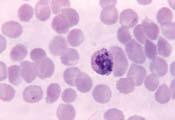
“There is revitalized interest in aiming for malaria eradication,” says Moreno, who is from Colombia and has worked on malaria vaccine development for twenty-five years. “Now, the strategy includes research for effective vaccines, new anti-malarial drugs, improved diagnostics, health infrastructure and political sustainability.”—M.J.L.
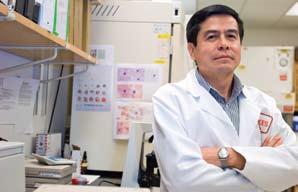
Brain and body have long been thought to be intimately connected, especially in Eastern philosophies such as Buddhism. Now, this link can be investigated through scientific research.
“We’re just barely beginning to understand the mechanisms, at a detailed and specific level, that operate to produce these experiences,” Barsalou says.—Carol Clark
of Note
MORENO BRYAN MELT z; viv A x: S TE v EN G LENN / CDC HAPPY : STOCKPHOTO COM
mory is a global leader in learning about this species of p. vivax
Helping Haiti
On a Saturday morning in the parched hills above Leogane, Haiti, a truck hauling a thousand plastic buckets rumbles over the sun-baked stones of a mostly dry riverbed, past women bathing in the trickle of a stream and bone-thin cattle grazing on the banks, and on up the mountain to a village called Chalet, where a mule train is waiting in the shade. Meanwhile, in the crushed city below, soldiers bulldoze the rubble-strewn streets, and trauma surgeons work through the night, salvaging what limbs they can.
“We know that people who use chlorine have less diarrhea,” Michael Ritter 08MPH explains as we brace for bumps in the backseat of the truck. “And we know that distance from the nearest distribution point is an important factor. The terrain is very rough. So the more convenient and affordable we can make this, the more people we’ll reach.”
A classmate of Ritter’s at Emory, I had learned about Deep Springs International (DSI), the nonprofit organization devoted to implementing sustainable point-of-use safe water systems that he helped to found, long before the earthquake. Ritter is president and in-country director of DSI, and during the past two years he has come to know Haiti very well, visiting dozens of villages and distributing some four thousand buckets along with a chlorine solution called Gadyen Dlo (Creole for Water Guard).
But after graduating, Ritter and I lost touch. I only knew that he was in Haiti, and like his many other friends, I worried when I heard the news. As it turned out, the thirty-year-old native of Pittsburgh was in Baudin, thirty miles south of Portau-Prince, at the time of the quake, training water technicians by day and spending nights in the rectory of a Catholic church.
“I was on the second floor, and I had just opened my laptop,” he said over coffee one morning at the Centers for Disease Control and Prevention compound in Leogane, where he had been living in a tent for the past five weeks. “I tried going down the stairs, but there was too much
By Patrick Adams 08MPH
dust and rubble. So I ran out onto the balcony. I could hear people screaming from the hillsides all around—that’s how I knew it wasn’t just the rectory. But I had no idea how big it really was. In fact, I remember thinking it probably wouldn’t make the news—because, you know, not much in Haiti ever does.”
It was nearly a week after the earthquake struck before I made it to Haiti myself. I flew to Santo Domingo, took a truck to a port town farther south, and then hopped a Dominican Navy ship ferrying water and
tors and nurses, firemen and pharmacists from countries around the world.
I spent my first day in Pinchinat, the city’s soccer stadium-turned-refugee camp, helping to set up a medical tent for a Dominican Red Cross team. UN peacekeepers patrolled the sea of makeshift huts—assembled with sticks and bed sheets and scraps of tin fished from the rubble—and Save the Children had begun building a set of latrines. But the medical teams had yet to arrive, and there was nothing in place for seeing patients: no tables or chairs, no tents or tarps or ropes. My job was to find them.
As the Red Cross team moved through the camp, a crowd started to gather. There was an elderly woman holding an infant
medical supplies to Jacmel, a city of forty thousand on the country’s picturesque southern coast. At the time, media reports, and the bulk of relief efforts, were focused on the devastated capital. But Jacmel had been hit hard—half of its buildings were damaged or destroyed, with thousands buried underneath—and desperately needed aid was only just beginning to arrive.
During the next several weeks, I worked with a dozen other volunteers to distribute food and tents, conduct needs assessments, and coordinate civilian aid flights in and out of Jacmel Airport, which we shared with the Canadian Forces. All day, planes and helicopters landed on the tiny runway, bringing in engineers and architects, doc-
who was too weak to cry, and a small boy, his head wrapped in brownish gauze, who sat cross-legged in the dirt. There were children with hair bleached by kwashiorkor, a type of malnutrition caused by lack of protein, naked from the waist down; men with festering wounds that wouldn’t heal—and everywhere, I was told, the invisible trauma of the mind.
Fourth-year Emory medical students Gabe Wardi 10M and Greg Staeheli 10M aren’t doctors yet, but they knew more than enough to lend a hand in Jimaní, the Dominican border town where thousands of Haitians were treated in the days following the quake. Along with Staeheli’s father, an orthopaedic surgeon who runs
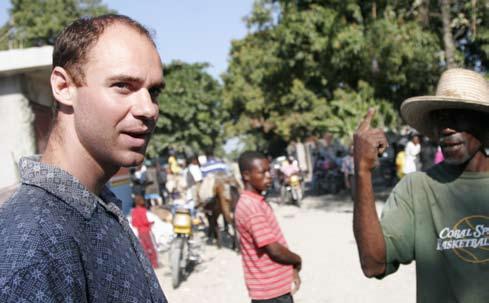
20 magazine spring 2010
PATR i CK ADAMS
g ood hydration: Michael ritter 08M ph leads an effort to increase safe water.
a free clinic in the Dominican Republic every January, the two encountered medical challenges on a scale few first-world professionals ever see.
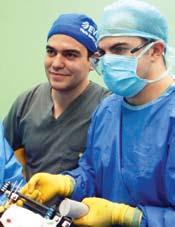
“There were six operating rooms and a small orphanage that had been turned into a triage area,” Staeheli recalls. “And there were tents as far as you could see— thousands of people with breaks and open wounds, and many of them were infected.”
“We both trained at Grady [Hospital], so we’d seen a fair amount of trauma,” says Wardi, who is also pursuing a master’s degree at the Rollins School of Public Health. “But it was strange to be the final authority. I was given patients to treat after surgery, and it was up to me to decide what kind of pain medication or antibiotics to prescribe them. In the U.S., a resident would evaluate my decision, and the attending physician would then go over that decision. But not in Jimaní.”
For Wardi, though, it was the emotional pain that was often the hardest to ease. “Some of the kids were as young as four,” he recalls. “Their parents would ask me if I had any children, if I could understand what they were going through. That was tough.”
Nicole Dionne 10MPH witnessed the same sort of suffering at Hospital Albert
Schweitzer (HAS) in Haiti’s Artibonite Valley. Dionne had been collecting data for her thesis on diabetes prevention at the renowned fifty-five-year-old facility. After taking a short break in Panama, she returned to Port-au-Prince for a final week and was picked up at the airport by an HAS van. “All of a sudden it lurched forward,” she recalls. “It felt like we were being rearended over and over again.”
For the next week, Dionne worked the phones at HAS, coordinating incoming aid, while refugees from the flattened capital poured into the wards. “There were patients everywhere,” she says. When she wasn’t tracking down medicines—the hospital had gone through a four-month supply in six days—she simply sat with people and listened to their stories. “Everyone was affected in one way or another,” she says. “Everyone was suffering.”
Still, like Wardi and Staeheli, Dionne encountered courage and resilience in equal measure. “There was this one little boy with a broken leg,” she recalls. “I asked him if I could take his picture, because I had been asked to photograph patients for the hospital staff. He looked at the picture, and he said very matter-of-factly ‘You know, I’m really pretty good-looking.’ ”
Emory made numerous and wideranging contributions to the Haiti recovery effort, from the dozens of students and health care professionals who traveled to help victims to the varied campus efforts centralized through the Office of Critical Event Preparedness and Response. Emory MediShare, a branch of the nonprofit organization Project MediShare, dispatched an emergency team to Port-au-Prince days after the quake. Alumni on the front lines included Navy Captain James Ware 76OX 78C, commander of the Navy hospital ship USNS Comfort, in essence a floating hospital that anchored in the bay to take in the most severely injured—up to 750 a day. And at home on campus, in addition to fund-raisers, medical supply drives, and educational efforts, a group of Haitian Creole–speaking volunteers were in high demand as interpreters for the American Red Cross’s Atlanta chapter.
Back in Leogane, the aftershocks continue to rumble through. But Ritter isn’t leaving any time soon. With the rainy season on the way—and diarrheal diseases on the rise—clean water will be critical to Haiti’s recovery. And as one of the only organizations providing households with access to it in the affected area, DSI will have an important role to play in the months ahead.
On our last morning together, Ritter mentioned that the guesthouse he stays in when visiting Port-auPrince—Ritter has no permanent residence in Haiti, and is constantly on the move— collapsed in the earthquake.
“Um . . . you never told me that,” I said.
on the s C ene: in photos clockwise from left, n avy Captain James Ware 76oX 78C (center) makes an introduction; Michael ritter 08M ph surveys his buckets; and g reg staeheli 10M (above, left) assists in an or
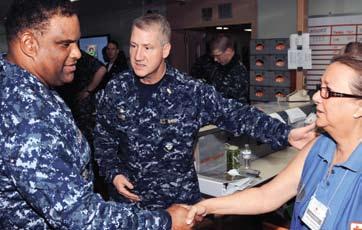
Ritter nodded. “Yeah, well, it did—completely destroyed,” he said nonchalantly, as though this detail, having nothing to do with access to safe water, was of no great importance. “But the factory where our buckets are made survived unscathed,” he added. “We were lucky.”
To learn more about Emory’s efforts to aid Haiti recovery, please visit www.emory.edu/ home/CEPAR/haiti/.
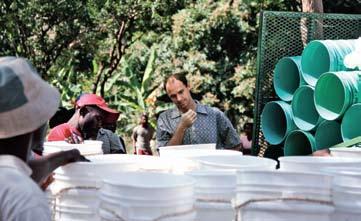
spring 2010 magazine 21
R TTER : PATR i CK ADAMS ; WARE Ti MOTHY Wi LSON /u. S N A v Y STAEHEL i: CO u RTESY GABE WARD
Back in the
S PORTS MED i C i NE i SN ’ T J u ST FOR THE PROS ANYMORE
BY MARY LOFT u S
PHOTOS BY KAY H i NTON
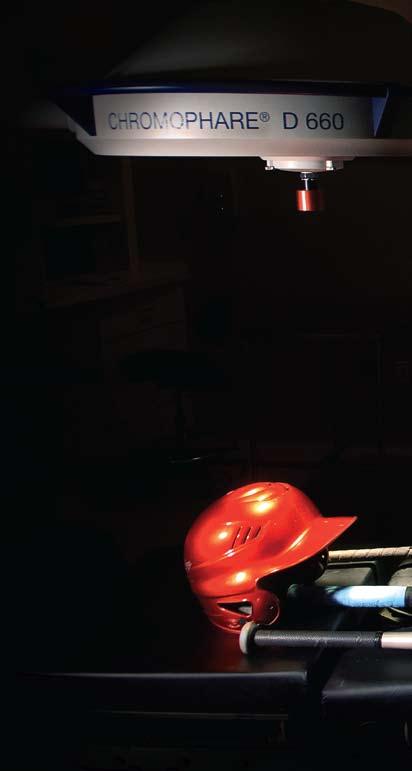
David Meador, a thirty-two-year-old mutual fund wholesaler in Atlanta, was hustling hard in his regular Monday night basketball game—driving the lane and going up for a jump shot—when he both heard and felt it: the distinct, unwelcome pop in his right knee.
“It felt like warm syrup running down to my right ankle,” he says. “I got up off the ground and limped over to the bench. Then I walked it off and went back in the game.”
He went back in the game?
“Sure,” says Meador, who has played regularly for five years at his local gym. “My team was winning. We got slaughtered in the second half, though.”
Meador rested up that night and walked to work the next morning, and the more he walked, the better his knee felt. Still, that audible pop, as well as several of his friends, told him what he didn’t want to admit: he had torn his anterior cruciate ligament, or ACL.
22 magazine spring 2010
Game
An ACL tear is one of the most common sports injuries, especially in sports that require running, jumping, or pivoting movements. Akin to a fibrous, thick rubber band made of collagen, the ACL runs through the center of the knee and connects the femur to the tibia, allowing the knee to bend and flex—but not too far. When it tears, the knee can become destabilized. So, for anyone who wants to continue to play sports, surgery is required.
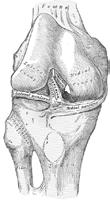
Which is why Meador is now lying in a bed awaiting surgery at Emory’s Sports Medicine Center. He points to where his leg has been flagged with a marker to ensure that the surgeon operates on the right (and correct) knee.
In half an hour, Meador will be under general anesthesia, and his knee will have a tiny fiber optic camera inside it, guiding the arthroscopic surgery as a surgeon uses a cadaver ACL to replace his torn ligament.
The Sports Medicine Center is housed in Emory Healthcare’s Orthopaedics and Spine Center, tucked into an office park just off Interstate 85 in Atlanta. The center has four operating rooms, three surgeons, four sports medicine specialists,
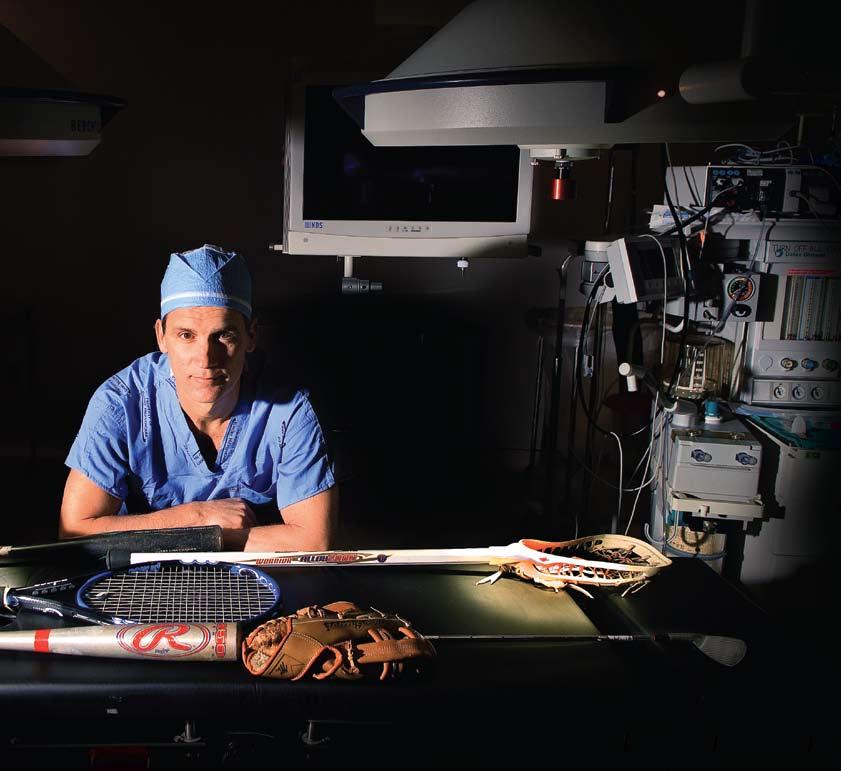
spring 2010 magazine 23
Chief of e mory’s s ports Medicine Center John Xerogeanes 92M
and ten certified athletic trainers, as well as a rotating roster of fellows and residents.
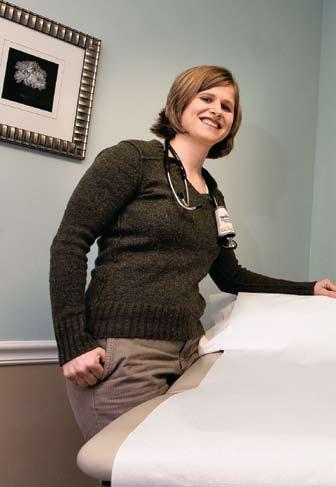
The waiting room’s walls are filled with autographed posters from dozens of professional athletes and celebrities who have been treated there, signed with sentiments like, “The knee is back!” and “Thanks for keeping us on the field.”
Once a narrow subspecialty of orthopaedics with a focus on professional athletes, the field of sports medicine has exploded in the last decade. The evolution of ACL surgery is just one of several advances in the treatment of athletes and their injuries that have started to serve not only the pros who make a living from their skills, but also the weekend warrior who gets hurt in the heat of a pick-up game, the neighborhood league player with tennis elbow, the college runner who pulls a tendon, or the high school football player with a possible concussion.
“What revolutionized sports medicine was arthroscopy—instead of opening up the joint completely, we can go in through a little poke hole, observe the injury, and repair it,” says surgeon Spero Karas, director of Emory’s Orthopaedic Sports Medicine Fellowship Program and consulting team physician for Georgia Tech and Emory Athletics. “It’s like the space program: These technologies were developed for the pros, but have filtered down to everyone. All of society benefits now.”
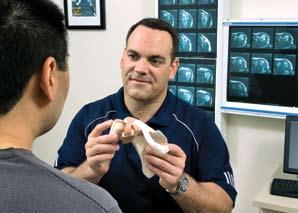
Although Meador plays only recreationally, the former high school basketball player and Louisiana State intramural athlete takes the game seriously. “I want to get back to playing basketball as soon as possible,” he says.
As an operating room is being prepped for Meador, John Xerogeanes 92M, or “Dr. X,” as his patients call him, is finishing up another ACL surgery. On an average day, he’ll have three or four surgeries; the most he’s ever done in a day is nine.
Xerogeanes is chief of the Emory Sports Medicine Center and associate professor of orthopaedic surgery. A linebacker at the University of California-Davis when he was in college, he’s head orthopaedist and team physician for Georgia Tech and Emory Athletics, and has provided care for scores of college and pro athletes. Not surprisingly, “Dr. X” has seen his share of torn ligaments. But when he performed Meador’s initial examination, his injured knee failed to exhibit some of the classic symptoms of an ACL tear, which was puzzling. After an MRI confirmed a tear, however, Xerogeanes decided to perform exploratory surgery.
Meador is wheeled in, and his leg is prepped. As the fiber optic camera is threaded into his knee through a tubular metal port, the OR’s color monitors show an internal landscape that resembles a cave. Once tissue is pushed aside with surgical
The Competitive
Although the winter Olympics concluded earlier in the week, a highly competitive race is taking place inside Cove Family and Sports Medical Center just outside of Huntsville, Alabama.
The office is closed to patients for lunchtime, but the clinic’s tight-knit staff is eating and joking around together, including physicians alicia Moore Krichev 98C, Jon Krichev 98C, and amy Carter 97C
The Krichevs’ daughters—six-year-old Julia, four-year-old Audrey, and two-year-old Sophia— are taking advantage of the empty hallways to engage in their favorite sports: stool races and chair spinning.
instruments, the white fibrous ACL becomes visible. “Ah, there it is,” says Xerogeanes. The tendon is torn, but not completely, which explains the mixed signals during the exam. Since partially torn ligaments don’t heal, however, and most likely will
Their mom eats a pear and watches her girls fly fearlessly down the slick linoleum, hair ribbons flying. “i guess they take after us,” she says.
Alicia Krichev was captain of the basketball and volleyball teams during college, did the high jump in track and field, and has been inducted into the Emory Sports Hall of Fame. Jon Krichev was captain of the Emory swim team. And Carter,
24 magazine spring 2010
T HREE EMORY AL u MN i SHARE A MED i CAL PRACT i CE W i TH A COMMON GOAL
KARAS JACK KEARSE
s ports physician s pero Karas uses the latest in medical technology to keep patients running, golfing, and serving.
Competitive Edge
Alicia’s college roommate, was captain of the soccer and basketball teams and is also in the Sports Hall of Fame.
“They were both horribly intense when they played basketball,” says Jon Krichev, who started dating Alicia in their junior year after she was his lab partner in physics.
“it’s true,” she says, smiling. “i was always really competitive.”
“it’s that adrenaline,” Carter adds. “i’m laid back outside of sports, but my friends joke that i’ll get competitive even when i’m playing cards.”
After graduating from Emory, Carter went on to medical school at the university of Alabama in Huntsville (uAH), where her family lives.
The next year, Jon Krichev, who grew up in nearby Guntersville, and Alicia were accepted to uAH’s medical school as well. “They’re always following me,” says Carter, in mock exasperation.
As the Krichevs were completing their residencies, they were approached by one of their professors who hoped that they would take over a family practice he had started
several decades ago in Huntsville.
They agreed, and invited Carter, who specialized in sports medicine after her residency in family medicine, to join them.
“We’ve known each other a long time, and there’s a certain level of trust there,” says Carter, who also serves as uAH’s team physician. “They are both rational, generous people.”
They took over the practice in July 2005 and treat patients from newborns to the elderly, with an emphasis on sports medicine for both competitive and amateur athletes. On any given day, they might see a Little Leaguer with a sprained ankle, a long-distance runner who wants to improve endurance, or a teen with a stomach virus.
Carter and Jon Krichev work similar hours, while Alicia Krichev, who is expecting their fourth child, works a reduced schedule. Carter fills in when the Krichevs go on vacation, and vice versa. They all treat patients at area hospitals as well. in five years, says Jon Krichev, “i don’t think we’ve had one issue we haven’t been able to resolve.”
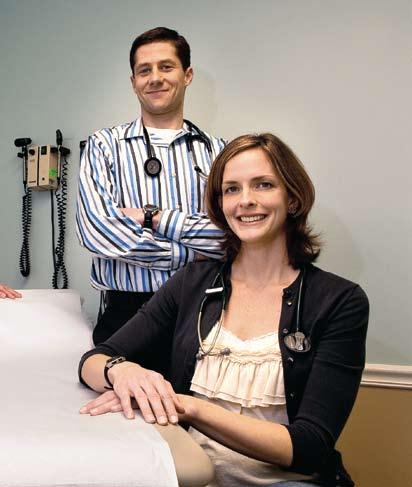
All are still active in sports—Jon Krichev competes in triathlons, and Alicia sometimes joins him “to get back into shape between babies,” she says.
Carter rides mountain bikes with her dog and plays ultimate Frisbee, which has led to a few injuries of her own. “if i play something, i’m going to play all out,” she says.
Their active participation in the sports culture of Huntsville—home to the u.S. Space and Rocket Center and a hub for rocket scientists and defense contractors— has granted their medical practice a certain validity among the area’s athletes.
And they each try to communicate a love of exercise to their patients, especially the younger ones.
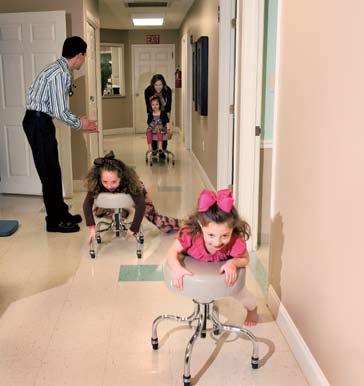
“Growing up in a family that encouraged sports and outside activities, i learned quickly that things like soccer and other team sports were a lot of fun,” Carter says. “To be active needs to become a habit from an early age. Otherwise, you spend a lot of time sitting around.”
Which, all three admit, is not something they do very often.—M.J.L.
spring 2010 magazine 25
on a roLL: from left, alumni amy Carter, Jon Krichev, and alicia Moore Krichev aim to keep their patients healthy and active. the Krichev girls, above, engage in their favorite activity: hallway racing.
continue to cause problems in active people like Meador, Xerogeanes decides to proceed with the surgery.
Working with researchers at Georgia Tech, Xerogeanes has created a threedimensional model of the knee that helps pinpoint where to drill in order to anchor the replacement ACL closest to the spot where the original was attached. Having performed about 450 of these new placements, he’s happy with the results. “It restores more of the biomechanics in the joint, there’s less pressure, and it wears down less,” he says, which means a lower chance of arthritis later.
After cleaning up the remains of Meador’s torn ACL, he threads the cadaver graft (originally freeze-dried but now thawed) through a port. The new ligament has been coated with sterile mineral oil to make it slippery, since it’s a tight fit. Sometimes, especially in younger patients, a patient’s own tendon or hamstring graft can replace a torn ACL; in Meador’s case, a donated ACL was the best option.
Xerogeanes attaches Meador’s graft with screws made from an absorbent, coral-like substance that will use water and blood from Meador’s own body to transform itself into a facsimile of bone. After the new ACL is inserted, Xerogeanes pulls the slack out of the graft and puts the knee through its full range of motion, watching on the monitor.
“Looks good,” he tells the surgical team. “It’s right where it’s supposed to be—completely anatomic.”

Less than an hour has passed, and Meador is back in the recovery room. Xerogeanes hands him a DVD of the operation, gives him post-op instructions, and emphasizes the importance of rehab. “You’ll be back to playing basketball in six to eight months,” he says.
There is never really an off season for athletic injuries; if it’s not soccer, basketball, or football, it’s tennis, skiing, or Ultimate Frisbee. Just 20 percent of the center’s patients are collegiate or pro athletes; the other 80 percent are those who enjoy sports as hobby, exercise, or recreation.
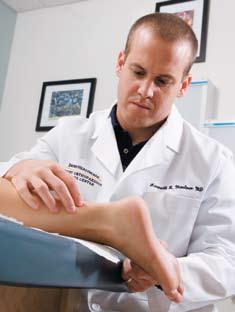
Xerogeanes’s most famous patient, in fact, wasn’t a pro or an Olympian but a former president: Jimmy Carter came in for surgery on a torn rotator cuff, which he injured on a turkey shoot.
Thanks to the proven benefits of adding exercise to one’s daily routine, staying physically active and fit has become a priority even for those who didn’t play sports in high school or college. Regular exercise extends longevity, reduces disease and obesity, and improves mental and emotional health. If the advantages of exercise could be stuffed into a gel cap, that would be one valuable little pill.
But with an increase in exercise and sports participation comes an increase in exercise- and sports-related injuries—and sports medicine specialists. The American College of Sports Medicine, founded in 1954, now has more than twenty thousand members internationally.
Since people are remaining active well into their seventies and eighties, says Karas, it’s a multigenerational specialty. “It’s not unusual for me to see an eighteenyear-old baseball player, his fourteenyear-old sister who plays soccer, his dad who plays tennis, and his grandfather who plays golf,” he says.
A wrestler while at Notre Dame, Karas has three children who are involved in multiple sports. Along with the center’s other surgeons—Xerogeanes and Assistant Professor Sam Labib, head orthopaedist for Oglethorpe University and Perimeter College—Karas performs ACL reconstructions, meniscus repair, rotator cuff repair, and shoulder reconstruction.
A few years ago, Karas treated NFL Hall of Famer Fran Tarkenton. “Dr. Karas operated on me that morning, and I walked out an hour and a half later. Three days later, I was playing golf,” said Tarkenton, adding that sports medicine surgery has advanced light years beyond what existed during his years of pro ball.
ger and does a better job restoring normal rotator cuff anatomy,” he says. “There is more tendon attached to the bone.”
Not all sports injuries require surgery. Some, such as concussions, need only a proper diagnosis and rest, so the body can heal itself. But the right diagnosis can be trickier than it seems—especially with athletes eager to play down their symptoms.
see video of hall of fame football pro fran tarkenton at www.youtube.com/watch?v=fqaa-tBMsew
Karas has contributed to advances in rotator cuff repair surgery that allow the shoulder to heal more dependably. He performs “double-row” arthroscopic repair, which secures the tendon to the bone at two sites rather than one. “It’s much stron-
Assistant Professor of Orthopaedics Ken Mautner, head physician for Agnes Scott College’s sports teams and a team physician for Emory Athletics, was the first sports medicine doctor in Atlanta to use Immediate Post-concussion Assessment and Cognitive Testing (Im PACT), a computer-based test that eliminates much of the uncertainty. “We can finally objectively evaluate what has always been a very subjective decision,” Mautner says. “It’s the equivalent of giving the brain a physical exam.”
Concussions, caused by sudden and violent rocking of the brain inside the skull from a traumatic blow to the head or upper body, are common in contact sports—about one in ten athletes will
26 magazine spring 2010
physicians Ken Mautner, below, and amadeus Mason, right, often help athletes with common ailments, such as chronic tendonitis.
MA u TNER JACK KEARSE
Be s ports s M art
some tried-and-true rules still apply in sports injury prevention and treatment:
• Don’t increase activity levels too fast.
• Rest, eat properly, and stay hydrated before and during exercise.
• Listen to your body, especially when it hurts.
• When injured, apply ice. Cold therapy is most effective for the first forty-eight hours. ice the injury for twenty minutes every hour or two.
experience one. Most will recover completely as long as they don’t return to play too soon. But the danger of cumulative brain damage to pro football players has been the subject of recent debate in the $6 billion-a-year industry. In a study of NFL retirees ages thirty to forty-nine, it was found that a player’s chances of being diagnosed with dementia, Alzheimer’s, or another memory-related disease was one in fifty-three, as opposed to one in a thousand for the average man in that age range.
An even greater concern, says sports physician Jeff Webb, is the three million children who play football at the youth level and 1.2 million teens who play for high school teams. Young players’ height, weight, and technique make them susceptible to head and spine injuries, according to the National Athletic Trainers’ Associa-
tion, and they suffer about fifty thousand diagnosed concussions each year.
Webb also sees young players exhibiting overuse injuries. “If kids show talent in a particular sport now, their parents or coaches think they’ll be the next big thing, and they play the same sport yearround,” he says. “The body, especially a preadolescent body, is not set up for that. You’ll see growth plate injuries, tendonitis, stress fractures.”
Guidelines from the American Academy of Pediatrics now say that young athletes should have a two-month break from their primary sport each year, and two days’ break each week. Also, they should not be on two teams for the same sport at once, such as the high school baseball team and a traveling baseball league.
Sports physician Amadeus Mason knows all about athletes who overdo it. As team physician for Georgia Tech’s track and field team, USA Track and Field, and the Nike/National Scholastic Sports Foundation Track and Field and Cross-Country meets, Mason cares for sprinters with torn hamstrings and distance runners with chronic tendonitis. Mason is a specialist in high school and early college athletics with the National Scholastic Sports Foun-
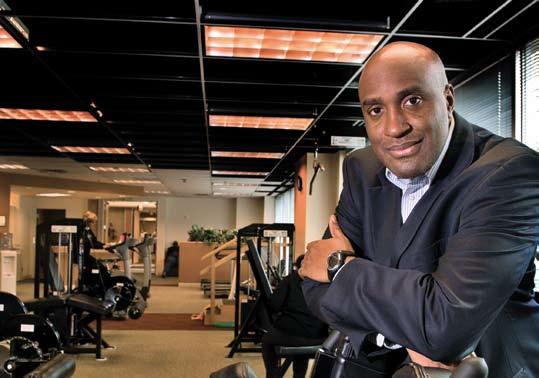
dation’s MedTeam, helping to prepare the top high school athletes in the country for the next level—often the Olympics.
When he ran track in his home country of Jamaica, he was injured, which inspired Mason to help other athletes “get back to where they need to be.”
A little preparation goes a long way toward preventing most running injuries. “Call it pre-hab,” Mason says, smiling. Loose, warm muscles will perform better than cold, stiff muscles. And runners should use common sense: stay on familiar ground in a safe, well-lit environment, set realistic goals, and have a program for getting there.
One of the most common injuries the center treats is tendonitis, and a new procedure used by both Mason and Mautner is helping athletes who have chronic tendon pain. Platelet Rich Plasma (PRP) therapy has proven successful in rebuilding damaged tendons and jump-starting the healing process when traditional treatments like rest, ice, and anti-inflammatory medicines no longer provide relief.
The patient’s blood is drawn and placed in a centrifuge to separate out a layer of platelet-rich plasma, which is then injected into the weakened portion of the tendon with the guidance of an ultrasound machine. “A majority of patients find that by three months they can return to most or all of the activities they were doing before the pain started—sometimes activities they have not been able to do in years,” Mautner says.
Assistant Professor of Orthopaedics Brandon Mines, head team physician for the WNBA Atlanta Dream team, sees a wide range of athletes at the center and says the well-known rules still apply: Don’t increase activity levels too fast. Rest, eat properly, and stay hydrated before and during exercise. Listen to your body, especially when it hurts.
And one of the most familiar home remedies is still the best: ice. “It’s true. Icing the injury actually prevents it from getting worse due to inflammation and helps with pain, swelling, and healing,” Mines says. “The first forty-eight hours is when cold therapy is most effective. We recommend twenty minutes of icing every hour.”
Then, before you know it, you’ll be back in the game.
spring 2010 magazine 27
Calling
By Josh g et L in
the Play
The National Basketball Association’s marquee store on New York’s Fifth Avenue was packed with media and fans. They were massing around former NBA star and Atlanta Hawks announcer Dominique Wilkins as he signed autographs and helped publicize a new basketball card collecting game. On the periphery, a man with graying hair and an engaging smile was surveying the event he had organized and talking on his cell phone, largely ignored by the crowd.
“That guy in the suit jacket over there,” whispered one tourist to his friend, pointing to Charles Rosenzweig 80C 80G, the NBA’s senior vice president of entertainment and player marketing. “Is he somebody?”
When it comes to the NBA, Rosenzweig is indeed somebody. The beleaguered executive—who graduated from Emory in 1980 and remains active in alumni affairs—is a quiet magician behind the scenes, a man whose influence on the league has been profound, even though he’s not widely known outside of a small circle of NBA insiders and movers and shakers in the entertainment world. During the past twenty years, he’s helped build the league into a $4.5 billion powerhouse, a global marketing machine. And along the way, he’s played a key role in shaping some of professional basketball’s most memorable moments.
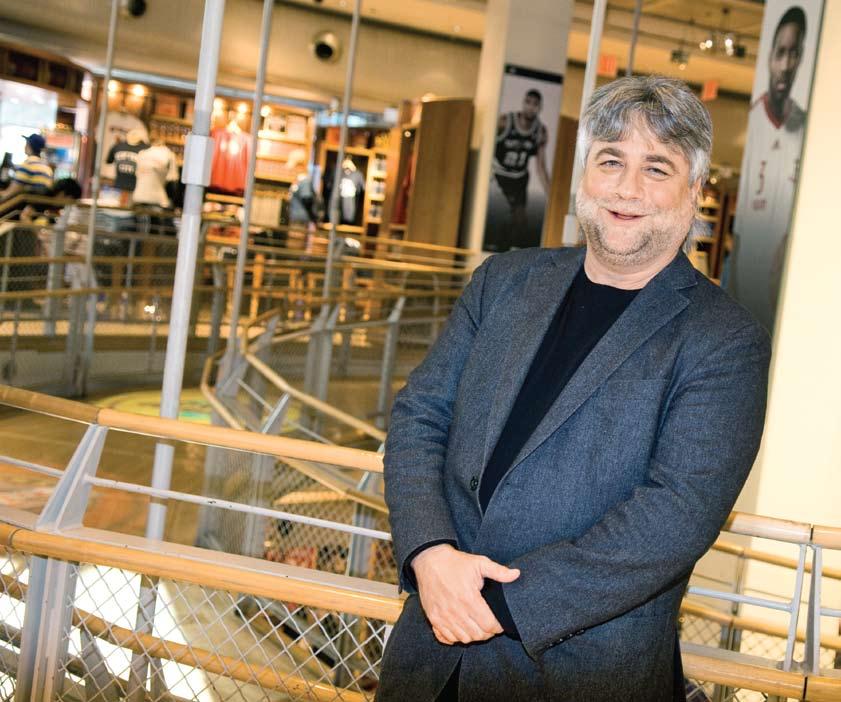
Take this year’s All-Star Game, which was played in Dallas on February 14 before a record-breaking crowd of more than
108,000. When millions of casual viewers tuned in, they saw a three-and-a-halfhour extravaganza of spectacle and sport: The league’s star athletes were on display in a live broadcast beamed worldwide; internationally known artists like Usher, Shakira, and Alicia Keys performed before the game and at halftime. In the days before the contest, the NBA staged a series of high-profile athletic exhibitions throughout the Dallas area and recruited more than 115 current and retired players to make 419 personal appearances.
Rosenzweig and his staff had been planning all of these activities for months, but suddenly there were unexpected glitches and backstage calamities that could have marred the event. While a global audience was pulling up chairs
28 magazine spring 2010
ANNEMAR E POYO F u RLONG 89C
As head of entertainment and player marketing for the NBA, Charles rosenzweig
80C 80g is the man who makes halftime happen
for the NBA’s big weekend, Rosenzweig was busy putting out fires. “This year was particularly fragile for us,” says the veteran attorney, who joined the league in 1990. “I’d have to say we faced tougher challenges this year than we normally do.”
It all began with the weather. Dallas was unexpectedly socked by a major winter storm and got seven inches of snow, just as All-Star week began. Meanwhile, a nor’easter was working its way up the Eastern Seaboard, jeopardizing plans to fly hundreds of current and former players to Dallas, although all eventually arrived. But Keys’s band, which had been set to arrive on Thursday, was snowed in and couldn’t join her, a challenge that bedeviled other talent throughout the weekend. As nerves began to fray, the pop group One Republic offered to step in and accompany her. It was shaping up as a logistical nightmare,
“I felt as if I were the general manager of a team closing a player trade in the middle of the night,” said Rosenzweig, wincing at the memory. “There was no time to waste. The event, Skills Challenge, was later that night and, as they say, the show must go on.”
This steely resolve might well be the mantra for his career. Rosenzweig has won scores of admirers within the NBA, whether he’s promoting players, booking entertainment for glittering events, or forming corporate partnerships to boost the league. But it’s not just because of his
Bill Russell, the former Boston Celtics great, is notorious for being challenging with reporters and shunning interviews. But he was happy to talk about Rosenzweig, whom he calls “one of the most genuinely decent persons in the NBA, somebody I trust and have great respect for. If it was anybody else,” he joked, “I wouldn’t be talking to you.”
A key reason for Rosenzweig’s popularity is that he remains a down-to-earth person, said NBA great and TV commentator Bill Walton.
“With Charlie, it’s
but Keys’s bandmates finally made it into town a day before the game.
Rosenzweig wasn’t so lucky with the popular Skills Challenge held on Saturday night before the All-Star Game. The competition, where point guards compete in an arduous obstacle course, traditionally begins with four contestants. But it was thrown into disarray when the NBA executive got a 1:00 a.m. call on the day of the competition and learned that last year’s winner, Derrick Rose of the Chicago Bulls, had a bruised tailbone and couldn’t participate. A replacement had to be found immediately, so Rosenzweig began working the phones, calling agents and team officials. At 2:30 a.m. he finally got his man—Russell Westbrook of the Oklahoma City Thunder—and the contest went on.
star po W er : the n Ba’s Charlie rosenzweig 80C 80 g helps basketball greats like dominique Wilkins stay active in the industry and the public eye.
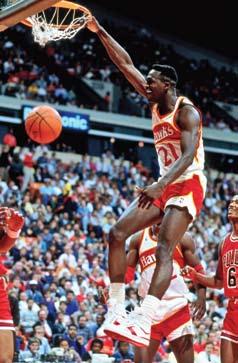
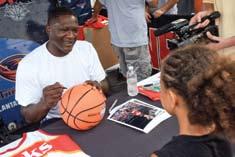
impressive skills, colleagues say. He also has a human touch, an ability to shed office protocol and treat people with kindness that stands out in a fast-paced, often unsentimental business. At a time when the NBA has dramatically expanded its reach, winning millions of new fans and opening new markets in Europe and Asia, the man who makes the trains run on time has also made lasting friends.
“He’s such a great manager and a creative thinker,” says Wilkins. “But the best thing is that he’s a straight-up guy, a real friend, and that’s hard to come by. It explains why he’s lasted so long in the NBA.”
never about him. It’s always about us, the team, and the NBA. He’s made a difference in our lives.” Walton predicted that Rosenzweig would be embarrassed by such effusive praise. “But that’s okay,” he said with a chuckle. “I love the man. He’s indispensable.”
As he watched over the event promoting Panini America’s new collector card game in the NBA store, Rosenzweig blushed briefly when told of Walton’s comments. During several interviews, he stressed that he’s been blessed with a highly focused staff and other colleagues who work hard to keep the NBA at the top
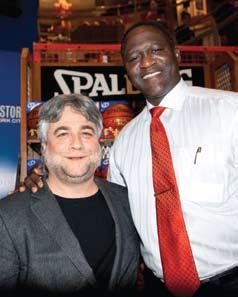
spring 2010 magazine 29
T OP ANNEMAR i E POYO F u RLONG 89C; LEFT : C OLBY Ki DD / SPEC i AL R GHT A NDREW D. B ERNSTE N / SPEC i AL
“He’s such a great manager and a creative thinker. . . . But the best thing is that he’s a straight-up guy, a real friend, and that’s hard to come by.”
—D OM i N i Q u E Wi LK i NS
of its game. Above all, he praised his boss, NBA Commissioner David Stern, as the prime reason for the league’s remarkable success. “I truly believe there is nobody more intelligent than David Stern,” he said. “Having a boss like him makes everybody in the organization smarter and helps them perform their duties at the highest level.”
Still, it’s hard to imagine the modern NBA without Rosenzweig’s considerable talents. His broad responsibilities have mirrored the league’s growing clout in the sports and entertainment worlds.
On the one hand, he oversees the worldwide marketing and promotion of star athletes past and present. It’s good business for the league and a lifesaver for former athletes who have been able to reconnect with professional basketball long after they stopped playing. Rosenzweig prides himself on keeping in touch with them and has kept many in the game, if not on the court. He’s also put together some of the NBA’s most successful economic partnerships, guiding star players into national ad campaigns for Pepperidge Farm (Dwayne Wade) and Right Guard (Chris Paul), to name a couple.
Rosenzweig also is one of the senior executives heading up NBA Entertainment, a sprawling division with six hundred employees that has grown into one of the world’s largest TV and Internet sports production companies. The unit generates a wide range of products and services for both the NBA and the wNBA, producing weekly shows including NBA Inside Stuff, NBA Access with Ahmad Rashad, and NBA Jam. It develops content for the league’s TV channel, NBA TV; NBA.com; and other sports outlets that are sent to 215 countries around the world. With more than three million still photos and decades’ worth of game videos in its archives, it’s an official repository of league history. The division has shrewdly exploited this asset, licensing these copyrighted materials to publishers, filmmakers, TV production companies, and other media companies.
These days the NBA is as much about glamour and cutting-edge cool as athletic prowess, and nothing illustrates this better than its tight relationship with the music world. Given its youthful demographic, the league has built bridges to some of the entertainment world’s hottest

young stars. Rosenzweig is the man to see when it comes to booking talent for the All-Star Games and other venues; he’s equally at home negotiating contracts with music industry VIP s as he is talking with players and top league officials. His Rolodex is legendary.
“Charlie’s knowledge of the sport and also of the entertainment industry is truly extensive, it’s unmatched,” says Michael Levine, senior director of entertainment and player marketing, who has worked with Rosenzweig since 1997. “He’s an understanding person, yes, but he also expects a lot from the people who work for him. I’ve been here long enough to know that there just aren’t a lot of people like him.”
Not bad for a kid who grew up following baseball
Rosenzweig 77C 83D, now a dentist on Long Island. Although he took a wide range of courses in modern history and political science, Rosenzweig grew close to Professor Kenneth Stein, an expert in Middle Eastern studies and the ArabIsraeli conflict, who continues to be one of Emory’s most respected scholars.
“I’m very friendly with him, and I’ve stayed in regular contact over the years,” says Rosenzweig. “I’m also proud that my youngest daughter, Jacki [Rosenzweig 12C], took a freshman seminar with him. He got the second generation of
and hockey, and never dreamed that he’d become a major player in the NBA’s elite corporate world. While others settled on their career paths early, he never set his sights on being a sports and entertainment lawyer. His path to the National Basketball Association was anything but linear.
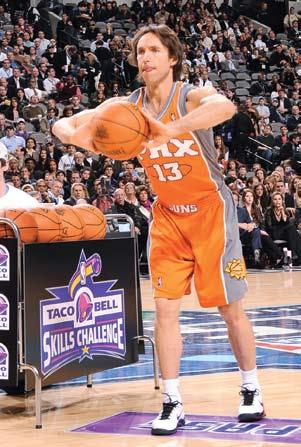
Born on Long Island, Charlie was the youngest of three kids. His father was a sales rep for men’s and boys’ clothing companies; his mother was a homemaker. A bright student, Rosenzweig chose Emory following his older brother, Lawrence
Rosenzweigs.” (His oldest daughter, Alex, recently graduated from the University of Miami and works in public relations and marketing in New York City.)
For his part, Stein calls Rosenzweig one of the most outstanding students he’s ever had and has kept in touch through the years. “My feeling about him is more than just as a college faculty member,” Stein says. “I have an enormous affection for him and his family. If I had to pick a group of people with whom I’d live on a cul-desac, they’d be at the very top of the list.”
30 magazine spring 2010
L EFT : G LENN J AMES / SPEC i AL R i GHT : A NDREW D. B ERNSTE i N / SPEC i AL
that ’ s entertain M ent : h alftime talent alicia Keys, above; the phoenix suns’ steve n ash, right, winner of the 2010 skills Challenge.
Rosenzweig’s roots at Emory are strong, but the most important person he met there was his wife, Jodi Sydell Rosenzweig 80C. They began dating and both attended law school at Georgetown, getting married between their second and third years. The couple both clerked for judges in Washington, D.C., and when they started looking for jobs Rosenzweig had no clue he was destined for entertainment law.
“I thought I’d end up as
Feelings. When he later worked on litigation involving the comic strip Heathcliff, the entertainment bug bit. But basketball was still the farthest thing from his mind.
Rosenzweig wanted to work in a smaller firm, and began sending out resumes. When he suddenly got a call in 1990 asking him to come down and discuss a job at the NBA, he was mystified. He didn’t initially get what the initials “NBA” meant when a secretary answered the phone, because he hadn’t applied there. The link only became clear when he had his first interview for a position with the
Rosenzweig, who now lives in Warren, New Jersey, has been in the mix for twenty years. But it hasn’t stopped him from maintaining ties to Emory; he and Jodi, who practices mass tort and product defense litigation at the New Jersey office of Drinker, Biddle, and Reath, helped launch Emory College’s Alumni Advisory Board, which didn’t exist four years ago. They’ve opened their home to student parties, offering career guidance and mentoring Emory graduates. They’ve also helped their alma mater build new bridges to the business world.
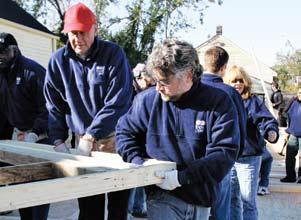
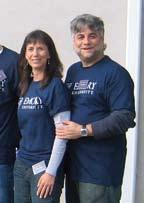
a litigator,” he said. “The only specialty I really ever considered, although not seriously, was actually maritime law, because during my childhood, my family was involved in boating and we spent a lot of time during the summers on the water.”
When they returned to New Jersey, where Jodi’s family lived, Rosenzweig was hired as a lawyer at a firm that just happened to specialize in entertainment clients. He got a taste of this work when he worked on a long-running copyright infringement case involving the pop song
rapidly expanding NBA Entertainment division: A lawyer to whom he had sent a resume had lunch one day with an NBA attorney, and the rest is history.
“That’s how random things can be,” Rosenzweig said. “I tell students today that you need to work hard to find a job in the entertainment field. Sure, you must network and make contacts, but you also need to work hard, do the little extra things like sending out targeted resumes, personalized letters, and other materials. You never know who’s out there, what will attract attention and what can happen.”
He joined the NBA soon after it had signed a pathbreaking TV contract with NBC; the deal allowed real-time broadcasts of playoff games and paved the way for the league’s later growth. The future grew even brighter two years later when the American “Dream Team,” featuring the league’s biggest stars, won a gold medal at the Barcelona Olympics and captured the world’s imagination. International markets in Europe and Asia began to open, driven by the NBA’s increasing number of foreignborn players.
Looking back, Rosenzweig doesn’t offer a rose-colored view of his job. The hours are long and demanding; the unexpected crises are not exactly welcome when you’re trying to raise a family. The responsibility requires compassion as well as toughness and discipline. But at the end of the day, he couldn’t imagine doing anything else.
“I’ve been lucky to work with some of the most talented and intelligent people in the industry on a day-to-day basis,” he said. “I have been exposed to so much, I’ve grown professionally, I’ve traveled all over the world. Still, every day is fresh and brings new challenges. I guess that’s why I’m still very happy in my career.”
And a good thing, too. Less than two weeks after the 2010 All-Star Game, Rosenzweig was already making plans for next year’s game at the Staples Center in Los Angeles. If the Dallas game posed logistical challenges, Los Angeles was another planet entirely. The on-site preparation time will be shorter, he noted, because the Grammy Awards will be held at the Staples Center a week before the NBA contest. And the eyes of the entertainment world will be on the league—because it will be in the heart of Hollywood.
“At this point we know that we’re going to be in L.A.,” Rosenzweig says with a smile. “And right now, that’s all we know. But we’ll be up to the challenge, no matter what it happens to be.”
spring 2010 magazine 31
Josh Getlin is a former Los Angeles Times bureau chief and a freelance writer in n ew York City.
off the CL o CK: rosenzweig and wife Jodi at emory Cares day, top; working with nBa volunteers on a post-Katrina habitat for humanity project, above.
“Every day is fresh and brings new challenges. i guess that’s why i’m still very happy in my career.”
TOP CO u RTESY EAA; BOTTOM C HR S G RAYTHEN / SPEC AL
—CH ARLES R OSEN z WE iG 80 C 80G
Speed-oh
eagles swim and soar, in the pool and out
by salvador rizzo 09C
photos by Kay h inton
Jon Howell, the head coach of Emory’s swimming and diving teams, starts early. He has to. Recruiting begins when swimmers are in their junior year of high school, and he’s mostly competing for students with the likes of Harvard and Yale, Ivy League schools that can sweeten the deal with Division I athletics and hefty financial aid packages.
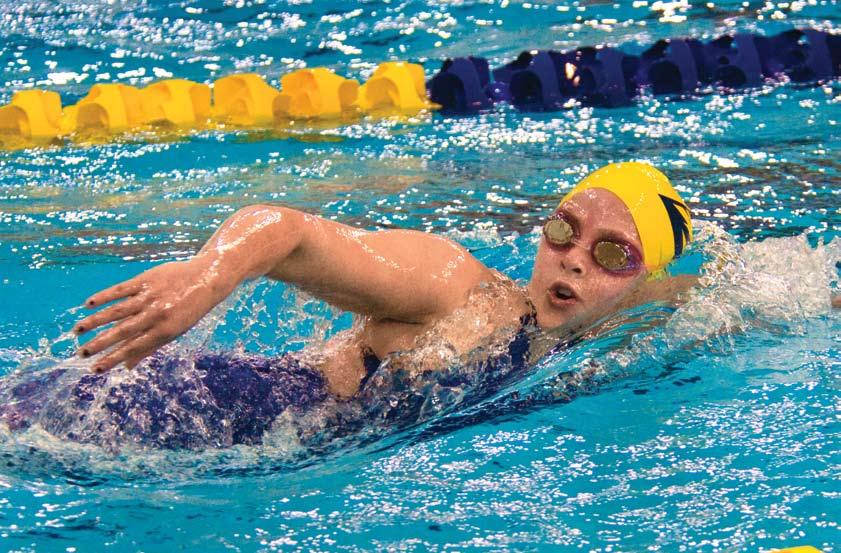
So he starts early. He wakes up at 3:45 a.m., writes emails in his office until daybreak (“it’s quiet,” he explains), then heads downstairs at 6:00 a.m. for the day’s first two hours of practice in the Woodruff P. E. Center swimming pool.
It’s the high point of the season, and the Eagles are riding high: The men’s and women’s teams have each just clinched their twelfth straight titles in the University Athletic Association (UAA), a league Emory began to dominate after Howell’s arrival. Now they’re preparing for the biggest meet of the year, the NCAA’s Division III national championships in mid-March, where the Eagles face some of the best swimmers in the country.
32 magazine spring 2010
Last year, in a stunning two-day performance, the men’s and women’s teams both ripped through the water at the NCAAs, claiming the gold in a handful of events, quashing several records, and finishing second place overall. The spotlight shone on Elizabeth Horvat 11C, who was the first Eagle ever to be named NCAA Swimmer of the Year after winning three individual races and one team event.

Those national feats are rare in Emory’s athletic history, and the meet has since become a sort of shaping experience for the swimmers; many now describe it as their proudest moment and fondest memory. “Everyone just fed off the positive energy and had fast swim after fast swim,” says senior Ruth Westby 10C, who defends her title this year in the 200-yard medley relay, a team race. “If this year is anything like last year, I can graduate and retire from swimming a happy person.”
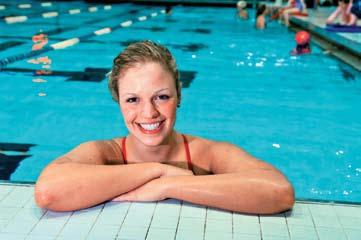
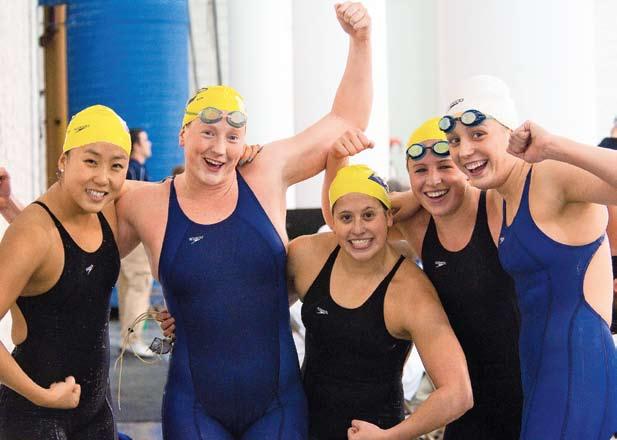
Yet, to those who had been keeping tabs, the NCAA meet was no turning point—it was a culmination of years of work and progress. Under Howell, Emory has been recruiting some of the highestcaliber swimmers nationwide, and they’ve been getting better every year.
“For the first time,” Howell says, “you look up and say, ‘How much farther can we go?’ ” He has some ideas: “With Olympic trials coming up, it raises the question, ‘Can we have an Emory team there?’ ”
The Emory Eagles may not be a franchise known to football followers, but during the last decade, Howell has helped turn Emory’s name into one of the top Division III brands, leading the swimmers and divers to a string of successes that gets longer with each season—and equally important for Howell, anchoring a support network for these fifty to sixty students who want to take swimming as seriously as school.
His secret? Howell will almost convince you it could be as easy as starting early, staying until the end, and looking for the right balance for every swimmer along the way. But that only fills the dayto-day agenda; he doesn’t have a formula so much as a philosophy. “It’s more what
spring 2010 magazine 33
n ational champs: above, sammy n eumann pulls for the lead; above right, Marie Kim, a pril Whitley, Jen aronoff, e mily reynolds, and Mia Michalek flex their muscle; below, Liz h orvat takes a rare break.
people have become than what they’ve accomplished,” Howell says. “Part of it is the water, but there’s something bigger than that.”

For Howell, coaching is holistic, and swimming is a lifestyle more than a water sport. When he looks back and talks about alumni, he doesn’t mention their times or scores, he talks about weddings and milestones (one won the Pulitzer Prize; another was a finalist for the Rhodes Scholarship).
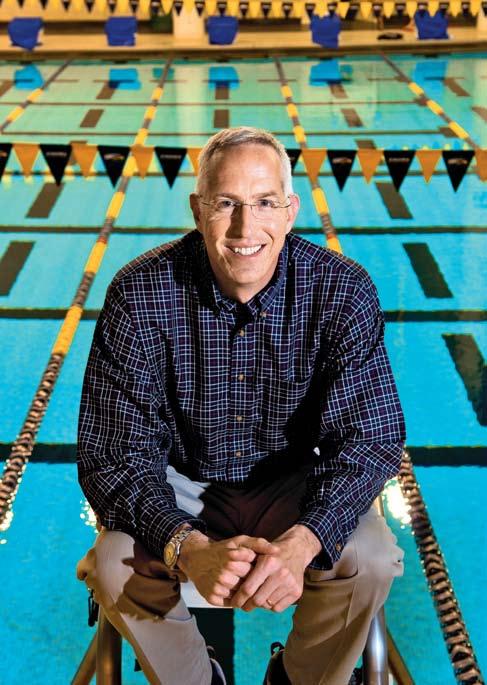
The students are keenly aware that Howell’s hopes and concerns for his team stretch far beyond just swimming fast. “I always seem to be either in the library or the pool, and I definitely have had very stressful semesters, but I think that it has forced me to learn better time management,” Westby says. “Jon is always very understanding if you need to miss or make up a practice because of school or stress, and that is something that I absolutely love about him.”
There’s no denying that practice can be grueling. Howell holds eight to ten sessions a week and each lasts more than two hours. Horvat, a psychology major who has been swimming competitively since she was seven, goes to all of them. “Each year, Jon tells us to hold ourselves to a higher standard, and I think everyone takes that to heart,” she says.
John Petroff 10C, a senior economics major, says, “Twenty hours a week is like a part-time job.” But he can also see the upside: “Practice helps me focus on the task at hand once I do sit down to study.”
“Everything we do is to try to find that balance,” says Howell, who came to Emory in 1998. It helps that the group is strongly bound together, more like an extended family than a competitive sports team.
Howell himself reviews every one of the two to three thousand yearly applications from potential swimmers, cramming phone calls and visits all around his calendar. (The acceptance rate is low: Only twenty-one freshmen are on the team this year.) The first thing he wants to know is whether a prospect will fit in with the team. “It’s very much a family,” he says. “I think we all take that role very seriously.”
Howell also says the team itself is the best selling point for most students. At Emory, the swim program grabs you early and doesn’t let go. Upperclassmen and
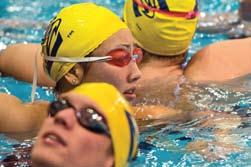
a group of alumni are on campus and ready to help the freshmen move in before school starts. The team travels together for away meets, for winter training in Florida, and even for a training trip to Italy in August 2008. “I doubt I will ever be able to go to Europe with forty of my closest friends ever again,” Petroff says.
Around campus, they show their solidarity even at costume parties—dozens
f or head swim coach Jon h owell, above, swimming is a lifestyle, not a sport. senior John petroff, right, says his teammates make every hour in the pool worth it. at left, Kristen tadano.
of members in the men’s team dressed as Spartans (from the movie 300) for Halloween in recent years.
And the bonds take root all the way back home, too. Petroff’s father runs the newsletter for the parents’ group. Westby’s parents recently had some of the others over for dinner and a movie, and to decorate shirts for the NCAAs. Horvat’s mother takes over as “head parent” next year.
34 magazine spring 2010
The team also does service projects together, like volunteering with the Special Olympics, with Howell’s encouragement. Horvat, Petroff, and Westby agree that if the team is successful, it’s because it is one tight unit. “I cannot even put into words how important my teammates are to me,” Horvat says.
The close-knit nature of the team became painfully evident in late 2006 when one of its newer members, stand-out freshman swimmer Madeleine Brown, was discovered unconscious in the water and could not be revived. Last year, the Woodruff P. E. Center pool was named the Madeleine Jude Brown Aquatic Center
sports—Methodist leaders forbade them with an edict in 1891, Downes says, to avoid the associated gambling and drinking. The UAA was formed nearly a century later, in 1985, and Emory quickly found its niche in sports with a league of academically focused research universities including New York University, the University of Chicago, and Washington University in St. Louis. “It’s important to look across the pool lane and see someone a lot like you,” Downes says.
Downes says each UAA title is a coup, and Emory’s full UAA trophy cases are not to be discounted, but it’s also clear that the team’s sights are set higher. Horvat is training for a possible Olympic bid, and Howell is thinking up ways to recruit more swimmers in her category.
“President Wagner always says, ‘What can we do the best? What can we be the model of?’ And it seems to me that this is it,” Downes says. “If you look at our program, and what Coach Howell has done, there’s no better college athletics program.”
championship meet at the University of Minnesota, Westby, Horvat, and Petroff were all touching up their technique, and slowly decreasing the yardage in their daily practices in order to be rested for the big meet.
“In particular, I have been honing my underwater dolphin kick for my butterfly events,” Petroff says. “I have gotten them almost to the point of rocket propulsion.”
Horvat said she was polishing for the 500- and 1,650-yard freestyle events, and focusing “on the little stuff that will hopefully separate me from the rest of the pack,” such as her turns and off-the-wall moves.
Swimmers have been getting faster in the last year, but the Eagles’ momentum may have been just the thing to turn the tide on perennial favorite Kenyon College—the Ohio swimming powerhouse, and Howell’s alma mater—which beat Emory at nationals last year.
The work paid off. At this year’s NCAA meet, the women’s team came in first place, clinching the top spot at nationals for the third time in their history. The first two wins, both under Howell’s recent tenure, were in 2005 and 2006. The men’s team recorded their tenth top-three finish this year, coming in third.
It was Westby’s last championship meet, and the senior and three others won the 400-yard freestyle relay for the first time. “It’s sad that I have to hang up my cap and goggles at the end of the year,” she says.
in a ceremony led by Howell, where more than three hundred community members gathered to honor Brown.
For Tim Downes, the University’s director of athletics and recreation, balance is as important as competitive success. Downes says Emory wants to provide top-flight athletics and academics without letting one overpower the other.
“One of the things that Jon has done is that he has created a swim community here,” Downes says. “His alums are so incredibly loyal. These are some of the best athletes in the country, but it is not the defining thing for them.”
That balance is the reason Emory joined the UAA. The University had lived through a long ban on intercollegiate
For all the successes, NCAA Division III can be a tough sell at times, Howell admits. He tries to travel around to promote the division, both to help break the stigma around it and to catch up with candidates, but in the world of swimming, Auburn and the University of Georgia are the Southern powerhouses. Emory still faces a bit of an uphill climb in name recognition, especially with a program that touts coursework right alongside championship titles.
But it helps that the Emory swim team has won more NCAA postgraduate scholarships than any other college sports team nationwide. Last year, two swimmers, Harrison Brown 09C and Keith Diggs 09C, received the scholarships, the NCAA’s top honor for students who excel in both academics and athletics.
This spring, a week before the NCAA
Next year, Westby’s leaving the lanes behind to work for six months to a year, then it’s off to graduate school for a master’s in environmental policy.
That may be a big adjustment from seven swim practices a week, but if Howell’s done his job right, Emory swimmers have been profoundly shaped in body and mind—and heart—by the swim team experience.
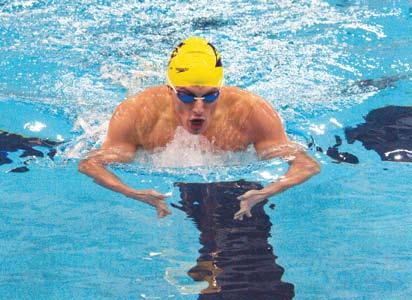
And who knows? Maybe they’ll have a reason to come back someday, even if only to visit Howell. They sure know where to find him.
“The great thing about the kids,” he says, “is ten years from now, they might not be as fast, but they’d fit right in.”
spring 2010 magazine 35
Salvador Rizzo 09C is a former editor of the Emory Wheel and an Atlanta-based copy editor for the Washington Post
S PORT i NG C HANCE
Alumnus Philip Schwalb’s Sports Museum of America seemed like a sure thing. So what happened?
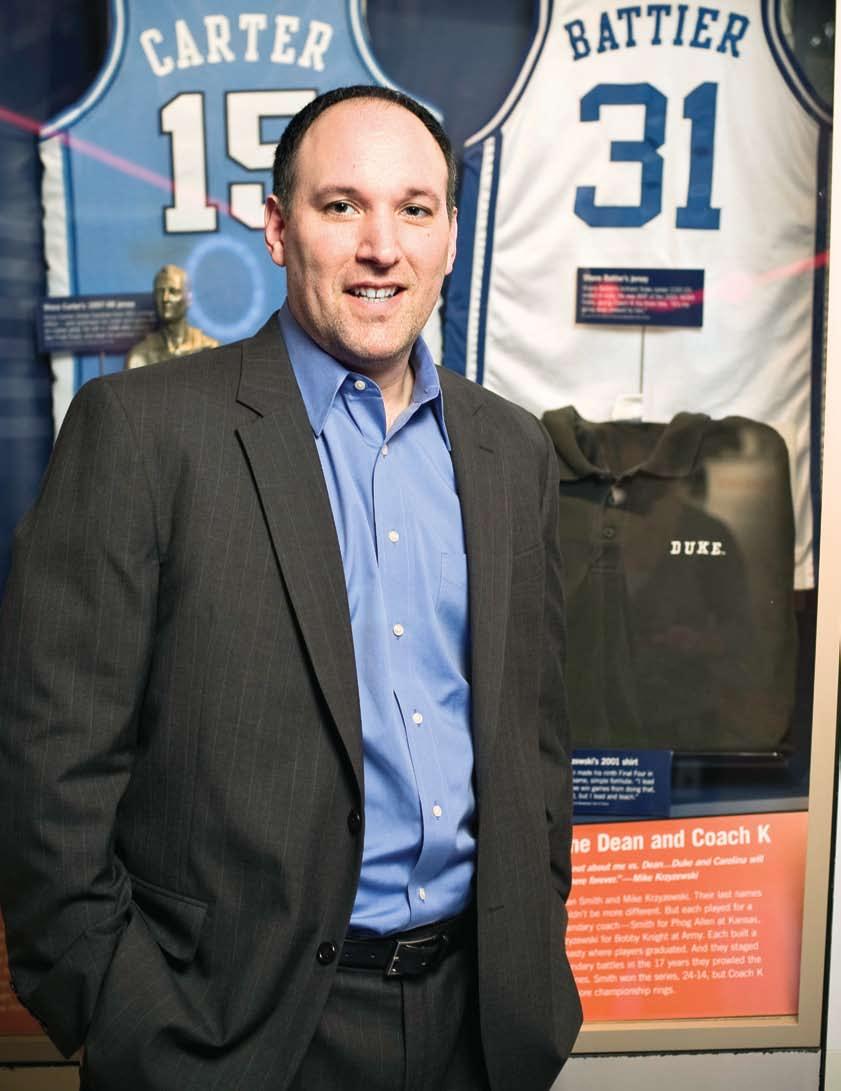
B Y P A i GE P. P AR vi N 96G
Philip Schwalb 86L’s birthday is September 10, and on that day in 2001, he gave himself an unlikely present: a trip to the Naismith Memorial Basketball Hall of Fame in Springfield, Massachusetts.
A lifelong basketball fan, Schwalb loved seeing artifacts like Wilt Chamberlain’s hundred-point jersey and the hall’s renowned Center Court. The only shadow on the day was that he and his wife, Evelyn, felt oddly lonely, since there were few people there. On the train ride home to New York, Schwalb found himself wondering why there wasn’t a more central place to celebrate sports—all sports.
The next morning, airplanes flew into the World Trade Center, and the thirtynine-year-old Schwalb joined the ranks of New Yorkers changed for good. Gripped by a new, adrenaline-fueled abandon and the generally shared sense that life is unpredictable and there is little to lose, Schwalb decided to launch a sports museum. And so began the game of a lifetime—one in which Schwalb would play his heart out, and ultimately lose.
“The experience of 9/11 kind of propelled me psychologically,” Schwalb says. “It probably would not have happened
from the ground up, but he had enjoyed ample exposure to a succession of steelnerved entrepreneurs.
After finishing law school at Emory, Schwalb had little interest in practicing at a firm. He went to work instead for an Atlanta legal newspaper, the Fulton County Daily Report, where he started as an editor but quickly drifted over to the business side. The paper was owned by media mogul Steven Brill, the founder of CourtTV and American Lawyer magazine (and later the 9/11-born and ill-fated company Verified Identity Pass). “That was a formative work experience that got me excited about business,” Schwalb says.
Schwalb built on that experience during the 1990s, working for the Arena Football League and for a movie financing company that helped to bankroll Thelma and Louise and Rocky V. He also served as COO for a couple of fast-growth tech firms. In 2000, he was hired by Edwin Schlossberg, the husband of Caroline Kennedy and an idea man known for conceiving and designing interactive experiences like the Brooklyn Children’s Museum. Schwalb did market exploration for the family-owned company The Perfect Client, a holding tank for inventive ideas and patents that was especially focused on developing interactive technology for museums and attractions.
“I just kind of absorbed the museum world,” Schwalb says. Thus inspired, Schwalb was bound to start thinking about his own venture; the question was when—and what.
called the National Sports Museum but later the Sports Museum of America.
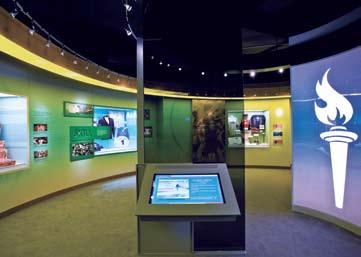
“It was kind of rambunctious,” he admits. “In that economy, I didn’t think going to banks and asking would have worked. I had perfect credit, but after I took out the first $20,000, I started to worry that the other banks would notice and lower my credit limit, so I decided I should do it all in a day.”
That move set the tone for the gutsy, creative financing and planning that would ultimately become a $100 million showcase. By November of that year, Schwalb had met with officials from New York City and state and had begun securing support and partnerships. Governor George Pataki and Mayor Michael Bloomberg both endorsed the project, which helped position Schwalb for a giant step forward: the ability to compete for financing from federal Liberty Bonds, the tax-exempt securities legislated after the World Trade Center attacks to help spur development and revitalization in lower Manhattan. Liberty Bonds are for private development, which helped cinch Schwalb’s decision to establish the sports museum as a for-profit institution. All told, a little more than half of the $100 million raised came from the bonds.
The other half came from about eighty private investors, many from Wall Street’s top-tier boardrooms. “It was a lot of very high-profile business people,” Schwalb says.
He also built relationships with some sixty-two athletic leagues and institutions, such as NASCAR, the International Boxing Hall of Fame, the Heisman Trophy Trust, the United States Tennis Association, the Hockey Hall of Fame, the World Golf Hall of Fame, and the one that started it all, the Basketball Hall of Fame.
otherwise. There was this post-9/11 mindset that if you have a dream, you have to do it and do it now.”
At that point, the relatively conservative Schwalb had never built a business
As the sports museum idea took hold in the weeks following 9/11, Schwalb made the decision to kick off the project with Jerry Maguire–style flair: in one day, he maxed out all his credit cards, gathered $120,000 in cash, and deposited it into an account for a new company, then
One of Schwalb’s staunchest supporters was Victor Avis, a classmate from Duke University and a close friend. Avis remembers when Schwalb first began brainstorming the museum idea in his living room. Avis and his father were soon Schwalb’s first investors, followed by Avis’s daughter, who became the youngest when she put her bat mitzvah money into the venture.
“I supported the project from the get-go because I thought it was a great idea,” Avis says. “Phil had a wonderful passion.”
spring 2010 magazine 37
S PORTS Mu SE u M OF A MER i CA
the high-tech, interactive s ports Museum of america exhibits were designed by g allagher a ssociates, masterminds of the s py Museum.
When Senator Bill Bradley called and left a message on his personal voicemail on a blistering day in August 2003, Schwalb was instantly transported back to his childhood, when Bradley was one of his particular heroes.
Schwalb inherited a love of sports from his dad, a Brooklyn native and lifelong fan of the old Dodgers team. “He wasn’t particularly emotional, but the only time we ever saw him cry was when Jackie Robinson died,” Schwalb says. “I think that says a lot about how a sport can weave its way into your youth and have an impact on your whole life. It’s emblematic of how emotionally resonant sports can be.”
Born on Long Island but raised in Orlando, Schwalb liked just about all sports, although basketball was his favorite and the Knicks and Bradley were the posters that papered his room. He says he mainly played in his own driveway, joking that his three high school teams were math, chess, and quiz bowl.
Joking aside, though, Schwalb was a brainiac who went to Duke when he was sixteen. He soaked up plenty of basketball but not much more of the college scene, being, he points out, a little too young for the full university experience. When he came to Emory for law school at twenty, he was more prepared to take advantage of all the campus had to offer.
“Emory, for me, was really the formative experience,” he says. “It was like my college experience combined with grad school. I was crazy active in intramural sports. I enjoyed the city, Virginia Highland, all the things that came with Emory. I really blossomed there.”
Not surprisingly, Schwalb’s most esteemed sports heroes are those who combine athletic prowess with an active mind. He especially admires Paul Robeson, a Renaissance man who was a star of the stage and screen in the 1920s, a noted scholar and attorney, a powerful speaker and social justice activist, and became the second black All-American football player in the country in 1917.
“Robeson embodies what I love about sports, which is not the jock part—he was a real thinking man’s athlete,” Schwalb says. “An Emory grad who also embodies that mix is Bobby Jones, who was not only
a great golfer but had a Harvard degree in literature and designed great golf courses. He loved sport and the beauty of it in a really artistic and grand way. That’s kind of what the museum concept that drove me was all about.”
So Schwalb got a spine-tingling feeling when he got a call from another icon, Bradley, the former Rhodes Scholar and three-time All-American basketball player who went on to play for the Knicks before becoming a U.S. senator. Schwalb was working out of his apartment at the time, starting to survey possible museum sites with a real estate firm. But Bradley had other ideas.
At his invitation, Schwalb went to visit Bradley, and the two men spread out a map of New York. “From talking to him, the idea became to get as close to the Statue of Liberty as possible,” Schwalb says. “I took a walk through Battery Park, and right at the top of the park is the building we chose, with his help.”
The site was the Standard Oil Building, built in 1885 by John D. Rockefeller when the company moved to New York from Cleveland. The elegantly curved, thirtyone-story building was designated a landmark in 1995. It is on New York’s famous tickertape parade route, which has plaques akin to Hollywood’s star-lined Walk of Fame, and it seemed like a good sign to Schwalb that the plaques right in front of the sports museum’s future home were for Bobby Jones and the first woman to swim the English Channel, Gertrude Ederle.
Far more important, the building is surrounded by other public attractions: the Statue of Liberty, Ellis Island, Wall Street, and the World Trade Center Memorial site. Schwalb and his partners calculated a potential audience of twenty million residents and forty-four million tourists a year.
“Part of my mission was to try to make a difference in the area of the World Trade Center,” Schwalb says. “The 9/11 memorial was on schedule to be built before the museum, but when we opened, the memorial and visitor center still weren’t done. It would have helped enormously. We had a really good relationship with them.”
When the Sports Museum of America opened on May 7, 2008, no one could have imagined it would close its doors less than a year later.
It was a near-perfect kickoff. Alongside the mayor and other city officials, about fifty of the world’s legendary athletes were on hand to cut the ribbon, including some from each Hall of Fame: Martina Navratilova and Billie Jean King, Mario Andretti, Eli Manning. Media coverage was enthusiastic. “Think Smithsonian, drenched in sweat,” read the New York Daily News.
“We were really happy with the event, the press, and the product,” Schwalb says. “The designers we used had built the Spy Museum in Washington. We started off on track in terms of popularity.”
“On opening day, Phil really was the toast of New York,” Avis says. “There were great athletes on the podium paying tribute to Phil and what he had done.”
The Sports Museum of America consisted of about one-third athletic artifacts, one-third sports films (twenty in all) that were custom-made for the museum, and one-third high-tech, interactive exhibits. The six-hundred-plus artifacts featured standouts like the car Jimmie Johnson drove to victory in the 2006 NASCAR series, the diary kept by track star Jesse Owens during the 1936 Olympics in Berlin, and the flag draped over the shoulders of U.S. hockey goalie Jim Craig after the team won gold at the 1980 Olympics. Craig had declined other appeals for the famous flag, but, “This is the right spot for it,” he told Sports Illustrated in an
38 magazine spring 2010
World trade
s ports Museu M of aM eri C a strategically located, the museum expected millions of annual visitors.
Center Memorial site
trinity Church stock exchange
MAP : i STOCKPHOTO COM
Battery park
interview. “This isn’t just a hall of fame. It’s about America, passion, and dreams.”
An entire wing was constructed for the original 1935 Heisman Trophy, which had been kept at New York’s Downtown Athletic Club but lost its home when the club closed after September 11. And the museum also was the official site of the first Women’s Sports Hall of Fame, a pet project of Billie Jean King.

“I loved the women’s section, which is so important for young kids to see, both girls and boys,” says Julie Foudy, who was captain of the Women’s National Soccer Team for thirteen years and gave memorabilia to the museum. “It is so important to understand the history before you, to know the pioneers in different sports.”
Against this sweeping backdrop, Schwalb and his team basked in the glow of success. But it faded more quickly than Schwalb would have thought possible. “The fanfare was great, but literally from the first week it was clear how hard it was to compete in the New York City marketplace,” Schwalb says. “We put so much of our money into making the best possible museum, I don’t think we envisioned just how tough the battle for visitation was going to be.”
Things only got harder as the summer of 2008 wore on, with the chill beginnings of an economic decline just starting to make themselves felt. Schwalb was banking on a second round of financing from the museum’s investors to boost much-needed marketing efforts, but when the financial crisis exploded in the fall, it became clear that wasn’t going to happen. Most of the private investors were from Wall Street firms that were hardest hit.
“There was a dual impact,” Schwalb says. “We were fighting the worst recession
in fifty years as a brand-new entity, and the investors we were counting on were watching their economic lives fall apart.”
There also were mounting tensions among the museum’s stakeholders. According to Avis, Schwalb could see that not enough money was being spent on marketing and visibility, but he had conceded much of the control of the enterprise to big-money investors who didn’t share his vision.
“When you have to take money from Wall Street, you lose some control over the management,” Avis says. “There were
disappointed, Avis said, “It was minimal compared to my disappointment for Phil. He is what he seems—he was never about money or fame or glory, he really had a passion for telling athletes’ stories. He put his life into this thing. So the fact that I lost some money was nothing compared to the heartache of seeing Phil lose all that he had worked for.”
More than a year later, Schwalb is remarkably philosophical about the museum’s trajectory and untimely end. This might have something to do with the fact that the same week he decided to close
a number of times when I think Phil felt he was selling his soul to make sure it all happened. He had to diversify, and I think it was that loss of control that was the undoing of the museum.”
By the end of the year, Schwalb was beginning to resign himself to the inevitable, like a coach in a losing game watching the clock wind down. The Sports Museum of America closed on February 20, 2009.
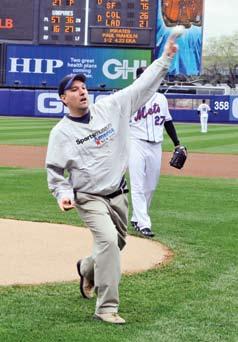
“It was emotionally very difficult,” he says. “At the same time, I was watching a lot of people I knew lose their entire net worth. There were people going through greater hardships, so I tried to put it into perspective.”
All but a few of the museum’s investors were understanding. Asked if he was
the museum, his twins were born. He and Evelyn have since relocated to Florida, where she took a position at Stetson College. He is considering some small business opportunities and deciding what to do next.
But Schwalb hasn’t given up on his dream—not yet. He has tasted the magic of the Sports Museum of America, and it was just too sweet to forget.
“The basic concept is that sports are incredibly popular. It’s a $200-billion-ayear business,” he says. “There are museums celebrating everything from minerals to aviation, and there should be one that pays homage to the beauty and grace and grandeur of sports. I would like to think that it will find its way again.”
spring 2010 magazine 39
S PORTS Mu SE u M OF A MER i CA
s pirits ran high when the s ports Museum of america opened in May 2008, hailed by Mayor Michael Bloomberg, above with s chwalb, super Bowl Mvp e li Manning, and Billie Jean King. at left, schwalb realizes another dream—throwing the opening pitch at a Mets game.
from the President

Healthy Body, Healthy Mind
In a recent op-ed piece in the New York Times, columnist David Brooks suggested that despite frequent laments about costs and scandals, big-time collegiate athletics serves a few worthy social purposes. Over against the usual burdens of “BTA” (big-time athletics)—burdens measured in ethics violations as well as in dollars— Brooks weighed the possible advantages of community-formation. Regardless of our race, economic standing, gender, religious affiliation, or political preferences, we can all fill a stadium together, paint ourselves blue and gold, and cheer for the Eagles. In this view, BTA even fosters certain virtues, including teamwork and sacrifice among athletes, and loyalty and a sense of connection among fans.
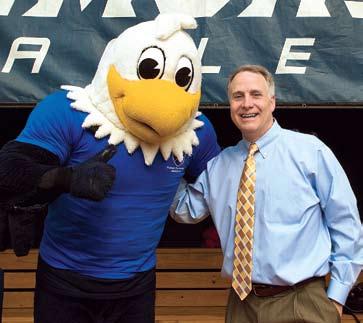
Brooks may have a point, especially where the fans are concerned. Where do we, as community members, come together in numbers greater than, say, a thousand, regardless of the many identity markers that could divide us? Political rallies tend to gather relatively like-minded people. Religious gatherings—which sometimes do in fact fill stadiums—generally call together people of the same faith. Rock concerts may be it—the occasion for gathering people of all ages, stripes, and outlooks for a feel-good bonding moment.
(Last summer in Atlanta’s Piedmont Park Paul McCartney performed a free concert in pouring rain to an audience of forty thousand and provided a common emotional touchstone for everyone who had been there: “I went on Sunday . . .”—“Hey, me too . . .”—“Wasn’t it fantastic?!”)
Still, even in a time of plenty, let alone a budget-constraining day like our own, it is worth asking whether the resources required for this kind of community experience are well spent in view of a university’s mission. Perhaps at large, state-supported institutions the cost is justified by bringing shared identity to a vast student body of, say, thirty or forty thousand. Perhaps the state institution, intended explicitly to serve the aims of a more local community—the citizens of a particular state or a particular part of a
state—has more purpose in serving this communitybuilding function through BTA. It is a rare private university, though, that can do athletics very well while also maintaining academic excellence. Among the top twenty-five universities, only a couple seem to manage it consistently in Division I.
For Emory, the value of retaining any program in a penny-pinching time comes down to whether it fits in the category of either “essential” or “excellent.” Hardly anyone would argue that intercollegiate athletics is essential for a university in the way, for instance, a mathematics department or the teaching of history is essential. A university can be great without BTA (see Johns Hopkins, Chicago, and the Sorbonne). We can say, however, that Emory’s athletics program is consistently excellent, from its national championship teams in recent years to its remarkably large participation rate in intramurals. Not only are these programs excellent by various objective measures (win-loss records, trophies in the display case, conference championship banners on the wall), but they excel in providing leadership to the rest of higher education. Just within the past two weeks I have heard leaders of two highly ranked private universities with Division I athletics remark that they wished their universities could move to the Emory model.
The only debate—and it is a real debate—is how to define “excellence” in Division III. For some, the measure lies in the number of students participating in varsity sports: the more varsity athletes, the better the program. We at Emory would not necessarily disagree. But we also make no excuse for wanting to win, and for saying that excellence includes rising above
the pack by trouncing the pack on the tennis court or in the swimming pool.
One more measure of excellence is the degree to which the Emory athlete approaches the old ideal of mens sana in corpore sano—“a healthy mind in a healthy body.” In that sense, Emory athletics is excellent indeed, attracting students who excel in the classroom and laboratory every bit as much as on the playing field and court. When the GPA of varsity athletes exceeds that of the rest of the student body, as is true at Emory, something good is afoot. If David Brooks wanted to list the virtues instilled by athletics, at Emory he would have to note the virtues of time-management, clearheadedness, and the physical vigor necessary for the life of the mind. This is not a bad three-legged stool on which to rest an excellent athletics program.
40 magazine spring 2010
KAY H NTON
p resident Ja M es Wagner ta K ing in a ga M e W ith sW oop, eM ory’s M as C ot
CAMPAIGN CHRONICLE Spring 2010
GIVING IN GRATITUDE Mary and Vince Capka thank the Nell Hodgson Woodruff School of Nursing with a planned gift.
(page 44)

A GOOD INVESTMENT Business leader John Rice and his wife, Cammie, support Emory Advantage.

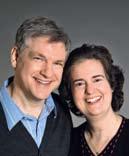
(page 45)
pROGRESS AS Of MARCH 31, 2010

$1.04 BILLION
TOTAL GOAL $1.6 BILLION The

Quiet Power of Annual Giving
(page 43)
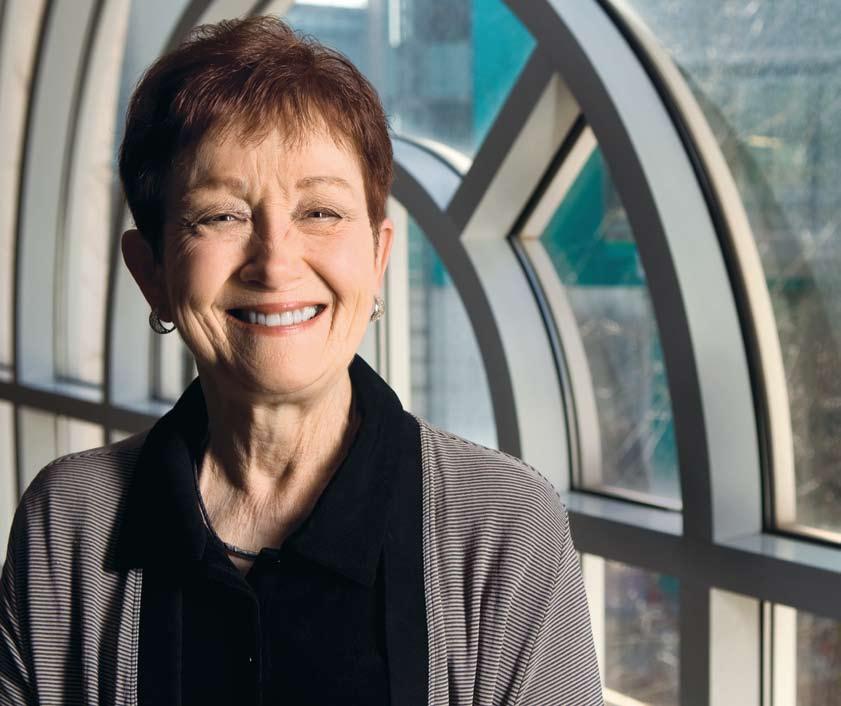 Donor Sally Lehr 65N 76MN
Donor Sally Lehr 65N 76MN
Love and Honor
There’s a saying that “philanthropy spreads from the inside out.” Those who know and love an institution the most will often become its most dedicated supporters. That’s certainly true for Emory’s employees and retirees, who know the University better than anyone. Over the years we have given our time, talents, and financial support to the University we love.
In February, Campaign Emory began honoring this valued group with MyEmory. Designed to celebrate the generosity of current and former employees and share our enthusiasm with the larger community, MyEmory is featured in this issue of the Campaign Chronicle
More than any other place I know, Emory inspires pride of ownership. Employees consider Emory our home, professionally and philosophically, and we give financially because we believe so completely in its mission. We know our university is a sound investment.
I hope our confidence will motivate you to discover the work of Emory that you believe is worth supporting.
Employees, Retirees Support Emory
Emory employees are behind all of Emory University and Emory Healthcare’s accomplishments. Now, in addition to contributing their time and talent, employees and retirees are supporting MyEmory, the employee component of Campaign Emory. Emory University and Emory Healthcare employees and retirees have contributed more than $41 million since Campaign Emory began in September 2005. MyEmory and MyEmory Healthcare publicly launched in February.
The goal of MyEmory is to raise $50 million by the end of 2012. Gifts can support scholarships, patient care, the arts, research, and countless other priorities that will enable Emory to advance among the world’s top universities and health care systems.
Emory Transplant Center Receives $800,000 Award
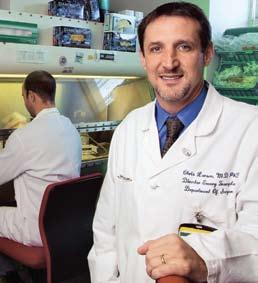
The Carlos and Marguerite Mason Trust announced a gift of $800,000 over two years to support the Emory Transplant Center. Since it began administering grants in 1993, the Mason Trust has helped improve patient access to transplants in the region.
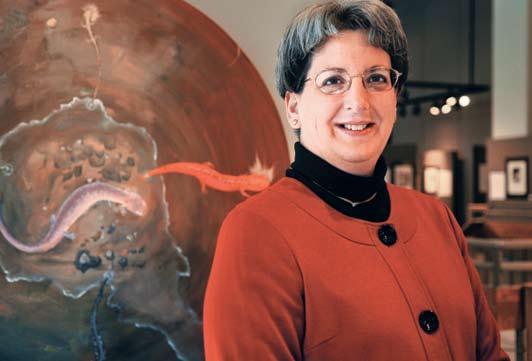
 Susan Cruse, Senior Vice President, Development and Alumni Relations
Susan Cruse, Senior Vice President, Development and Alumni Relations
Of the total, $500,000 of this gift will further these efforts by supporting telemedicine technology and the telemedicine access program. The remaining $300,000 will go to the Mason translational research program to develop novel and more targeted immunosuppressive regimens.
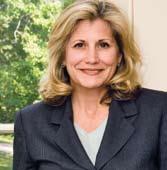
42 magazine spring 2010
Employees Ginger Cain 77C 82G (above) and Sally Lehr 65N 76MN (shown on page 41) cochair MyEmory.
Chris Larsen, Department of Surgery chair and Emory Transplant Center director, has received new support from the Mason Trust.
FOR MORE CAMPAI gn n EWS , VISIT WWW CAMPAI gn. EMOR y. EDU /n EWS
The Quiet Power of Annual Giving

Sally Lehr 65N 76MN and her husband, Ralph Lehr 65C 69D, became Emory donors in 1974 with their first contribution of $100. Lloyd Parker 74G made his first gift, $10 to Emory’s graduate school, in 1982.
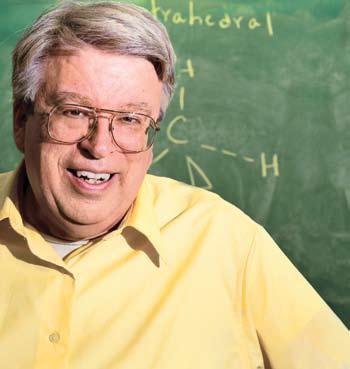
Both Lehr, a clinical associate professor in the Nell Hodgson Woodruff School of Nursing, and Parker, professor of chemistry at Oxford College, became regular annual donors. Their modest gifts to the School of Nursing and Oxford, respectively, have totaled thousands of dollars over the years, and every gift they’ve made since September 2005 has moved Campaign Emory closer to its $1.6 billion goal.
“Most donors who make small gifts each year have no idea how powerful their support becomes,” says Susan Cruse, Emory’s senior vice president for development and alumni relations. “Large gifts from foundations and major philanthropists tend to get all the press. But Emory’s annual donors—those people who give what they can year after year—are truly the lifeblood of the University.”
Annual giving provides the largest base of critical unrestricted support for Emory’s schools and units. Steady gifts of all sizes from alumni, parents, employees, and friends help fund scholarships, student programs, classroom technology, teaching awards, and other priorities.
“Not everyone can make a large gift, but everyone can give in meaningful ways,” says Crystal Edmonson 95C, broadcast editor at the Atlanta Business Chronicle and the Emory Alumni Board campaign committee chair. “Emory appreciates all gifts equally and values all support regardless of the amount. We give every year out of loyalty and because we believe in what the University can do when we all get on board.”
A key part of Campaign Emory, the Emory Annual Fund offers creative ways to support the University, including its Adopt-a-Scholar program, reunion gifts, student and parent giving programs, and the 834 Club, whose members give any amount ending in $8.34 each month to the designation of their choice. Annual gifts can be directed to any school or unit.
In addition to their ongoing annual gifts, Lehr and Parker have made significant planned gifts. Lehr has made the School of Nursing the beneficiary of her IRA, and Parker has included Oxford in his will. Because they are Emory employees, their gifts also count toward MyEmory, the employee and retiree component of the campaign.
Lehr, who has taught at the School of Nursing for more than thirty years and is past president of the Nurses Alumni Association, serves as cochair of MyEmory. She invests in Emory, she says, because Emory has given her so much.
“I give to organizations I value, and Emory is at the top of the list,” Lehr says. “I work here, my heart is here, and my money goes where my heart is.”
spring 2010 magazine 43
Lloyd Parker 74G, who has taught chemistry at Emory’s Oxford College for twenty-three years, supports Oxford students with scholarship gifts.
C AMPUS L IFE
At a recent event in the home of nathan Hartman 00C 06L 06T 07B and John De Caro 02C 08g, Emory’s LgBT alumni organization raised funds to support the group’s student leadership award.
C A n DLER S CHOOL OF T HEOLO gy
A bequest from Alma C. Hopper will fund scholarships for students from the Statesboro District; a bequest from Marjorie Butler will support students preparing for parish ministry or missionary work.
E MORy COLLE g E OF A RTS A n D S CIE n CES
The late Marian and James Lovell of Fort Myers, Florida, provided thoughtful support for Emory College in their estate plans, strengthening the Department of Music and creating the Marian B. Lovell Endowed Scholarship.
E MORy HEALTHCARE
The J. William and Elizabeth S. Robinson family has generously supported Emory University Hospital, helping fund the renovation of the neuro intensive care unit and other projects. The family also has supported many other areas of the University.
E MORy L AW
The Emory Public Interest Committee raised more than $100,000 at its annual Inspiration Awards. The event helps fund summer grants for law students working in the public interest.
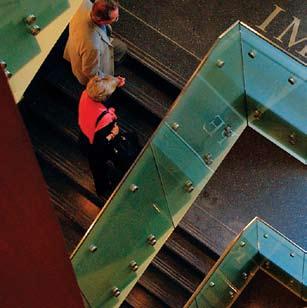
E MORy L IBRARIES
Bill 79PhD and Carol Fox announced a $100,000 bequest at the Manuscript, Archives, and Rare Book Library’s 12th night Revel. The event raised $60,000, including a matching gift from Provost Earl Lewis.
E MORy SCHOOL OF MEDICI n E
Augusta ophthalmologist Randy Dhaliwal was listening when his patient, Eva Powell, said she wanted to support eye research. As a result of his recommendation, she plans to make a bequest to the Emory Eye Center.
School of Nursing Alumna, Spouse Fund Scholarships
For Mary Capka 78MN, Emory has been a teacher, employer, and healer. She earned a master’s degree from the Nell Hodgson Woodruff School of Nursing and spent her thirty-year career at Emory University Hospitals. When a genetic disorder damaged her kidneys, Emory’s transplant team saved her life with a kidney donated by her husband, Vincent.
In gratitude, the couple has included Emory in their will, making a bequest to fund scholarships for nursing students. “It seems like the right thing to do,” Mary Capka says.
Like the Capkas, an increasing number of donors are working with their financial advisers to make bequests and other planned gifts to Emory. Gift planning can enable larger gifts than otherwise possible, provide security for family members, and offer tax benefits.
For additional information about supporting Emory with a planned gift, visit the Office of Gift Planning’s new home on the web, www.emory.edu/giftplanning, or call 404.727.8875.
Atlanta Couple Gives to Cancer Research
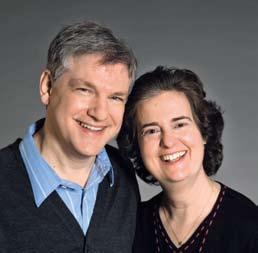
A former competitive cyclist, James Kennedy understands what it takes to conquer a tough hill. In the world of medical research, finding a cure for cancer is among the toughest. That’s why Kennedy, chair of Cox Enterprises, and his wife, Sarah, have given $4.7 million to the Winship Cancer Institute.
The donation will fund key research priorities, including helping young cancer investigators develop new and potentially groundbreaking ideas that ordinarily would not meet federal funding guidelines.
These young investigators will be called Robbins Scholars, named in honor of James Robbins, a close friend of
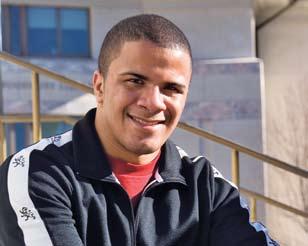
44 magazine spring 2010
sc H oo L s and units DI g EST
Vince and Mary Capka are creating a scholarship fund through a bequest.
Kyle Black 11C is among the students featured on the new Emory Advantage Web pages.
Kennedy’s and the former president and CEO of Cox Communications. Robbins passed away in 2007 after a bout with cancer, and he is remembered for his vision and his dedication to employees, customers, and the communities that Cox Communications serves.
“Jim Robbins believed in new ideas,” says Kennedy. “Sarah and I hope that Winship’s Robbins Scholar Awards will help carry on his legacy, which was one of innovation in the service of others.”
The gift also will support cancer seed grants, recruitment, and development of Winship’s survivorship program.
Emory Advantage Has a New Home on the Web
Information about the Emory Advantage financial aid program now can be found at www.campaign.emory.edu/EmoryAdvantage.
This new section of the Campaign Emory site includes student profiles, donor profiles, funding goals, press coverage, and how-to details for those interested in contributing.
Established in 2007, Emory Advantage helps qualified students from low- and middleincome families attend Emory without an overwhelming burden of debt.
Emory Trustee Helps Give the Emory Advantage
A champion of education, John Rice serves on Emory’s Board of Trustees, advises Goizueta Business School as a Dean’s Executive Fellow, and teaches Emory business students as a guest speaker. An international business leader, he knows a good investment. It’s natural, then, that he supports Emory Advantage.
The GE executive and his wife, Cammie, have made a significant gift to support the Emory Advantage program at Oxford College. The gift, and the establishment of the Nancy and Charles Rice scholarship fund, recognizes Rice’s parents’ commitment to education and is in honor of his father, who passed away in 2009.
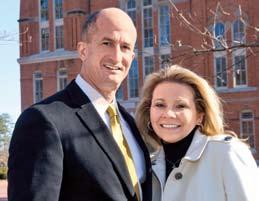
gOI z UETA B USI n ESS S CHOOL
Randy Evans 79MBA is supporting the g oizueta Real Estate Program with a five-year pledge. He is active in the program, speaking in classes and judging the case competition.
JAMES T. LA n E y SCHOOL OF g RADUATE STUDIES
Jeannie Main made a generous gift to the Eleanor Main Outreach Fund to benefit Challenge and Champions. The gift will continue the work of her sister, former associate dean of the school.
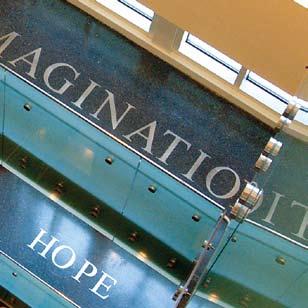
M ICHAEL C. C ARLOS M USEUM
Wilmington Trust and Jack Sawyer, managing director and president of the Southeast region, joined the Carlos Museum as platinum sponsors of Veneralia 2010.
nELL H OD g SO n W OODRUFF
S CHOOL OF nURSI ng
A bequest from Olive galloway 43n created the Olive galloway Scholarship to provide financial support for nursing students.
Ox FORD C OLLE g E
Retired teacher Wil Boykin 56Ox 58C 63g has made a bequest to support Oxford College and gifts to support the music program at Emory and scholarships at Oxford.
R OLLI n S S CHOOL OF P UBLIC H EALTH
Knowing the difference that living in another country made in their careers, Carlos and Carol Martel are sending five students to Latin America for global field experiences this summer.
WI n SHIP CA n CER I n STITUTE
The T. J. Martell Foundation’s inaugural “Best Cellars of Atlanta” wine dinner supports research by Lawrence Boise in Winship’s myeloma program.
yERKES nATIO n AL

P RIMATE R ESEARCH C E n TER
Eight yerkes n ational Primate Research Center Director’s Circle members recently made gifts of $1,000 or more.
spring 2010 magazine 45
“We are going somewhere worthy of our best thinking and our enduring determination.”
PRESIDENT JAMES WAGNER
John and Cammie Rice are providing financial aid for students at Emory’s Oxford College.
sc H oo L s and units DI g EST
Photo: A stairwell in the Winship Cancer Institute honors its seven core values.
CAMPAIGN PROGRESS *
AS OF MARCH 31, 2010
Campus Life Goal: $5 million
Candler School of Theology Goal: $60 million
Emory College of Arts and Sciences Goal: $110 million
Emory Healthcare Goal: $305 million
Emory Law Goal: $35 million
Emory Libraries Goal: $27 million
Emory School of Medicine Goal: $500 million
Goizueta Business School Goal: $75 million
James T. Laney School of Graduate Studies Goal: $10 million
Michael C. Carlos Museum Goal:
Nell Hodgson Woodruff School of Nursing Goal:
Yerkes National Primate Research Center Goal: $30 million
* Progress chart does not include goals for general University and Woodruff Health Sciences Center initiatives.
DEVELOPMENT LEADERSHIP
Susan Cruse, Senior Vice President, Development and Alumni Relations
404.727.6061 | susan.cruse@emory.edu
Dan Macaluso, Vice President for Development, University Programs
404.712.4742 | daniel.macaluso@emory.edu
Maggi McKay, Vice President for Development, Woodruff Health Sciences Center
404.727.3518 | mbmckay@emory.edu
Joshua Newton, Senior Associate Vice President for Development, Arts and Sciences
404.727.9627 | joshua.newton@emory.edu
CAMPAIGN CHRONICLE STAFF
Jason Peevy, Executive Director of Development Communications 404.727.7181 | jpeevy@emory.edu
editor: Terri McIntosh (tgmcint@emory.edu)
Writers: Vince Dollard, Maria Lameiras, Jennifer Wheelock
designer: Heather Putnam
Photography: Ann Borden, Corky gallo, Kay Hinton, Jack Kearse, Bryan Meltz
campaign emory chair
Walter M. “Sonny” Deriso 68C 72L
Chair, University Programs cabinet
Russell R. French 67C Chair, Leadership Prospects Committee
M. Douglas Ivester Chair, Health Sciences
Teresa M. Rivero 85Ox 87B 93MPH Chair, Alumni Engagement school and unit chairs
J. David Allen 67C 70D 75DR
Beverly Allen 68C
nell Hodgson Woodruff School of nursing
Courtlandt B. Ault
James H. Morgens Michael C. Carlos Museum
James B. Carson Jr. 61B g oizueta Business School
Ada Lee Correll Emory School of Medicine
William L. Dobes Jr. 65C 69M 70MR yerkes national Primate Research Center
Crystal Edmonson 95C
Paul McLarty 63C 66L Emory Alumni Board
J. Joseph Edwards 54Ox 56B 58B Henry Mann 62Ox 64C Oxford College
James R. gavin III 70PhD James T. Laney School of graduate Studies
Laura Hardman 67C Campus Life
Ann Klamon 65C 76L
Lawrence P. Klamon Rollins School of Public Health
John F. Morgan 67Ox 69B Emory Libraries
Philip S. Reese 66C 76B 76L
Chilton D. Varner 76L Emory Law
Wendell S. Reilly 80C Emory College of Arts and Sciences
Bishop B. Michael Watson 74T Candler School of Theology
46 magazine spring 2010
$35 million
$20 million
Oxford College of Emory University Goal: $40 million Rollins School of Public Health Goal: $150 million
$5.7 MILLION RAISED $32.7 MILLION RAISED $60.9 MILLION RAISED $239.3 MILLION RAISED $4.7 MILLION RAISED $16.2 MILLION RAISED $349.7 MILLION RAISED $38.6 MILLION RAISED $20.7 MILLION RAISED $18.5 MILLION RAISED $25 MILLION RAISED $125 MILLION RAISED $13.5 MILLION RAISED
MP ai G n L eaders H i P
ca
$6 MILLION RAISED
Play Ball
Eagles baseball outfielder Patrick Riebsame 11C does his part for America’s pastime.
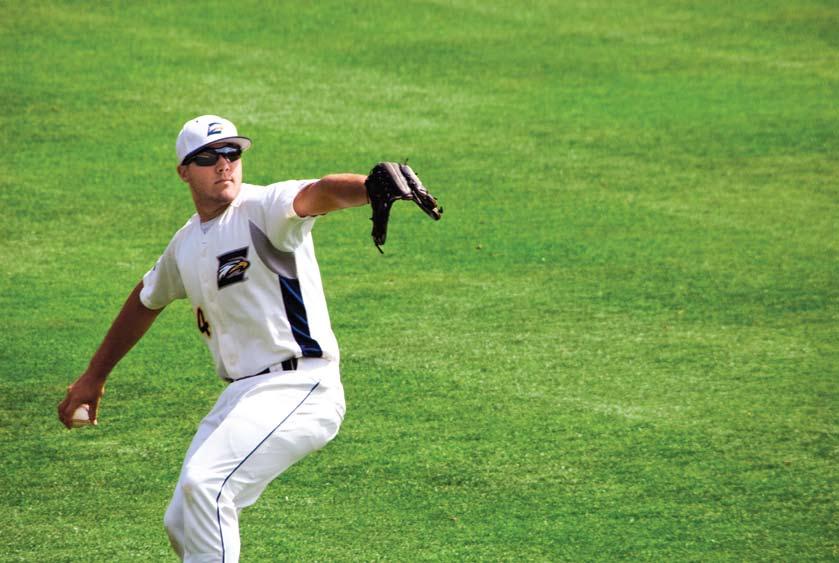
50 Covering the Field 52 Alumni ink 60 Coach Confessions
alumni news and class notes register spring 2010 magazine 47
Photo by Bryan Meltz.
Dear Friends,
Athletics for All.
This well-known motto dates to the 1890s when then-President Warren Candler 1875C denounced intercollegiate sports as an academic distraction. Candler did, however, encourage personal athletics activities as good exercise for the mind, as well as the body.
Candler’s hard-line perspective about intercollegiate sports at Emory has softened, obviously, but the idea of athletics for all continues to prosper. Not only does Emory have one of the country’s strongest Division III athletics programs— since Division III schools do not offer athletics scholarships, the Eagles truly promote student-athletes—participation in Emory intramurals is extremely high, and Emory’s facilities for sports-minded students (two Olympic-sized swimming pools, tennis courts sprinkled all over from the Atlanta campus to Oxford) are of the highest quality.
Perhaps nowhere is the idea of athletics for all more prominent than in the work of Clyde Partin Sr. 50C 51G. Partin, who passed away last summer at the age of eighty-four, served Emory for more than fifty years, seventeen of those as athletic director. One of Emory’s most beloved administrators, Partin led Emory’s Department of Athletics into the modern age, and his accomplishments range from coaching Emory’s baseball and softball teams to founding the Emory Sports Fitness Camp, which just passed its fortyfifth year of operation.
Partin also wrote the definitive book about sports at the University: Athletics for All: A History of Health, Physical Education, Athletics, and Recreation at Emory University 1836–2005. This spring, his family, including his son, Clyde Partin Jr. 78C 83M 86MR, donated Partin’s extensive collection of personal books, papers, and
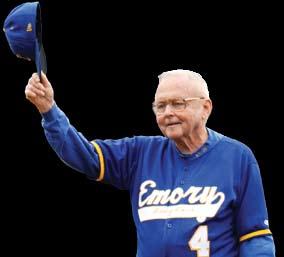
sports memorabilia to the Manuscript, Archives, and Rare Book Library (MARBL).
As I write this letter, spring has fully sprung and, athletically, baseball and softball are in full . . . well . . . swing. I can think of few better places to spend a sunny afternoon than Chappell Park at Emory. Tickets are free and the crowd is always enthusiastic.
And even if you don’t live in Atlanta, there are many opportunities to see Emory athletes in action. Each year our men’s and women’s basketball teams visit University Athletic Association (UAA) rivals in Boston, Chicago, Cleveland, New York, Pittsburgh, Rochester, and St. Louis.
The Central Florida area is the annual home of the UAA softball tournament (in Altamonte Springs) and baseball tournament (in Sanford), and the rest of Emory’s teams—from swimming to tennis to track—compete all across the country. Going out to cheer and support Emory’s student-athletes is one of the easiest and most enjoyable ways to give back to your alma mater.
You can also follow the Eagles from your computer; many games are streamed live. For more information and a schedule of upcoming broadcasts, visit www.emoryathletics.com.
Athletics also play a significant role in Emory Homecoming Weekend, which is coming up, September 23–26. More highlights are included in the EAA’s ad to the right, as well as on our Homecoming website at www.alumni.emory.edu/ homecomingweekend.
During last year’s Homecoming,
for the weekend. Not only were the volleyball Eagles the 2008 Division III national champions, volleyball is one of the most exciting sports to watch live. Stay tuned for information about this year’s Homecoming sports events.
Our annual Homecoming Parade route leads right into the P. E. Center, so that should make attending easy and fun. While you’re on campus at the P. E. Center, please make time to visit the Miller-Ward Alumni House (MWAH), too. This year marks the ten-year anniversary of MWAH’s opening, and we have a big celebration planned this fall. There will be more information to come.
Our upcoming Emory Commencement Weekend, May 6–10, is also a great time to visit MWAH. From our Candlelight Crossover, which welcomes our graduating class to the alumni community, to our Corpus Cordis Aureum induction, which recognizes and honors the longtime contributions and dedication of our alumni from the Class of 1960 and earlier, MWAH is a hub of activity on campus.
And when you do visit MWAH, please say hello. If you can’t come by personally, send me an email at adykes@emory.edu. It’s always a pleasure hearing from you.
More online: To learn more about Clyde “Doc” Partin 50C 51G and his legacy at Emory, please visit www.emory.edu/magazine.
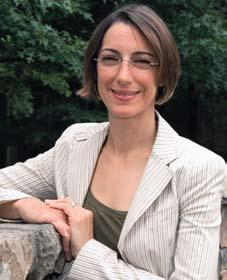
a LL ison dy K es, vi C e president for a L u M ni re L ations DYKES B RYAN M ELT z; PART i N JON RO u
from the EAA
48 magazine spring 2010
the emory alumni association invites you back to campus for homecoming 2010! the 2010 festivities include: 5k run through lullwaterclasses without Quizzescampus tourshomecoming paradetailgate partyhomecoming soccer gamesreunions!

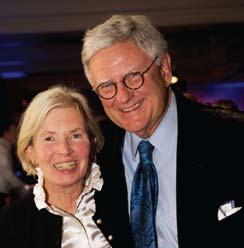
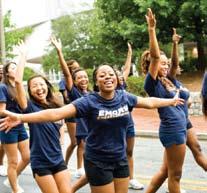
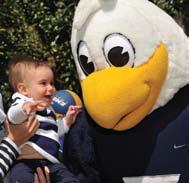

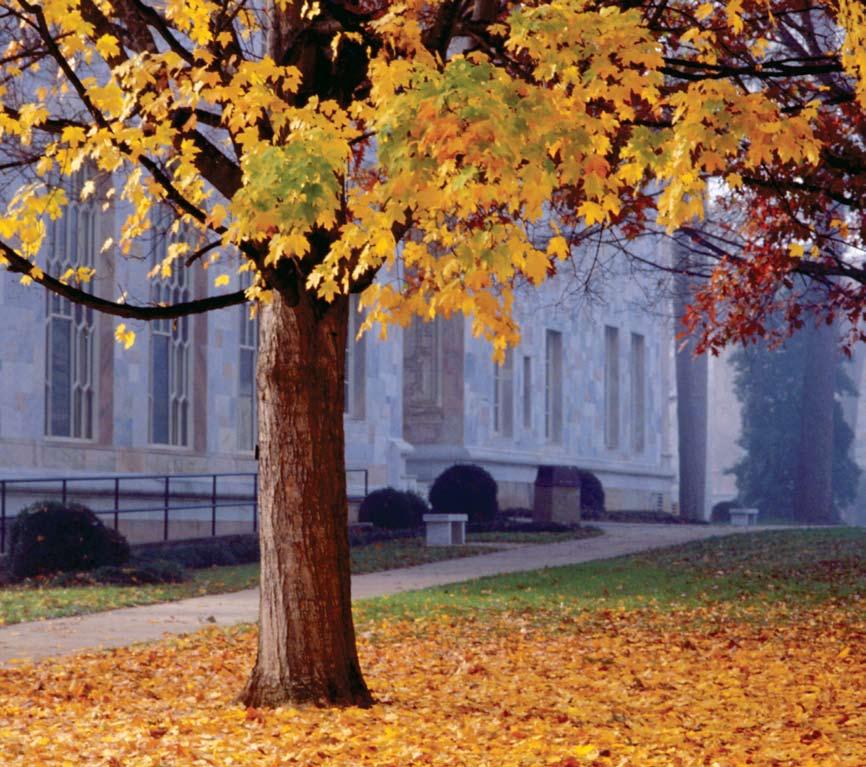
more details are on the way! in the meantime, stay updated with the homecoming website:

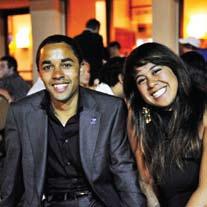
www.emory.edu/homecoming
september 23-26, 2010 Emory Alumni AssociAtion • www.Alumni.Emory.Edu • 404.727.6400 • EAA@Emory.Edu
www.emory.edu/homecoming
www.alumni.emory.edu/reunions see you in september!
Covering the Field
A L u MN u S Ben s hpige L TAKES nEW Y OR k Ti MES READERS
TO THE Y ANKEES ’ GAMES
Despite the drizzle, fans with umbrellas and plastic ponchos are starting to file up the concrete steps into George M. Steinbrenner Field in Tampa to watch the New York Yankees practice.
It’s the second week of spring training, and fans and reporters alike have come from Florida, New England—even Korea—to hang out with the veterans, the hopefuls, and the celebrities.
This is the Yankees, after all, who have claimed twenty-seven World Series championships and served as home team to legends like Joe DiMaggio, Lou Gehrig, Reggie Jackson, Mickey Mantle, Babe Ruth, and contemporary star players like Derek Jeter and Alex Rodriguez.
Ben Shpigel 02C, who covers the Yankees for the New York Times, is leaning against a wall watching the players practice in batting cages beneath the stadium along with a pack of other reporters.
He’s eager to get the scoop on any breaking news. “It’s very competitive,” he says. “Nine of us work for print.”
But it looks like the ball players are staying inside today. The cages are filled with the sound of a ball snapping neatly into the pocket of a catcher’s mitt, the quick hollow strike of a bat.
Players, coaches, and the team’s manager all wear the Yankees’ famous pin-striped uniform. And there’s a lot of spitting going on. “That’s baseball,” Shpigel says, shrugging.
The drizzle persists, the temperature drops, and fans start to wander into the gift shop filled with Yankee mugs, t-shirts, miniature bats, magnets, and other mementos.
Shpigel heads into the clubhouse to interview a few team members, then returns to the press box. He has covered baseball for the Times since August 2005, starting with the Mets and moving to the Yankees just this season.
An English and journalism major at Emory and sports editor of the Wheel, Shpigel knew he wanted to be a sports journalist from as young as he can remember.
“I used to run out to get the newspaper in the morning and read the box scores in the sports section first thing,” says Shpigel, who grew up just outside Philadelphia. “My whole family and I are huge baseball fans.”
Now, Shpigel writes for the print version of the Times as well as the paper’s baseball
When the team’s on the road, I’m on the road. When the team’s home, I’m home.”
Home, in the team’s case, is the new Yankee Stadium in the Bronx, built for $1.5 billion, with a deluxe clubhouse complete with a hydrotherapy pool with underwater treadmill, touch-screen computers in every locker, flat-screen TVs, and video room.
“A lot of the players pretty much live there, so it has to be nice,” Shpigel says. The Yankees are the highest-paid players in professional team sports, making on average $7 million a year (and superstars like Jeter, a lot more than that).
After Shpigel left Emory, he got a master’s in journalism from Columbia, and went to work for the Dallas Morning News
Then the Times recruited him, calling to ask Shpigel to join the big leagues. “I wasn’t looking to leave, but my family and my wife’s family are both from the East Coast,” he says. “And I couldn’t turn down the New York Times.”
blog, Bats, and Tweets under his own name.
He knows the players, but doesn’t hang out with them. “We work for a paper, not the team that we cover,” he says. “When things go well, we write about it, and when they don’t, we write about it.”
Baseball can be a grueling beat, as evidenced by his being on the road for seven weeks of spring training and eighty-one away games, not to mention playoffs.
This year, traveling that much is going to be a bit tougher: Shpigel’s wife, Rebecca Ammerman Shpigel 03C, a lawyer and teacher whom he started dating at Emory, just had their first child on March 15.
“She’s a saint,” he says of Rebecca, who is staying home in New Jersey to care for their daughter. “I don’t work in an office.
About three dozen pitching candidates here in Tampa by invitation know just how he felt. They are competing for open slots on the Yankees’ roster as trades, free agents, or minors who had a good season. Manager Joe Girardi has said he will keep the twelve best. About sixty-six players are in camp this spring.

Today, due to the rain, some of the players are heading out for a rare afternoon off.
Shpigel walks downstairs to Max’s Café, which serves up standard fare—ziti, chicken, tossed salad—and relaxes at a table with a few other reporters for lunch.
“Here, we tend to get up early, interview the players whenever we can, write a story or two, go back to the hotel, get a workout in, eat, collapse, rinse, repeat,” he says. “That’s the job.”
Right up until opening day. Then, it’s all about the games.—M.J.L.
register
O u T
B R AN B LANCO /S PEC i AL 50 magazine spring 2010
noted: Ben shpigel 02C on the field with the yankees, and his notebook.
oX ford
alexander d newton 62oX of Madison is director of the Rule-of-Law Program with uSAiD in Kabul, Afghanistan, where he provides assistance to Kabul university and Shari’s law faculty, regional law schools, the Supreme Court, and more than 1,500 judges.
david J. Burroughs 68oX 70C and Margaret Burroughs of Lula were married July 25, 2009.
tom a. Chrisman 70oX 72C of Atlanta is the state registrar for the Society of the War of 1812 in the State of Georgia and the registrar for the Piedmont Chapter of the Georgia Society of Sons of the American Revolution.
James J. Ware 76oX 78C of Savannah is commanding officer of the uSNS Comfort, the u.S. Navy hospital ship located in Port-au-Prince, Haiti, to provide medical resources and relief for earthquake victims.
s gordon rogers iv 79oX of Waynesville is the executive director and river keeper of Flint RiverKeeper where he marshals advocacy resources from the river’s headwaters in North Georgia to the Florida state line.
nadia M. ali 88oX 91C and husband, Brian, of Atlanta announce the birth of a daughter, Nora, on Sept. 29, 2009.
Jacqueline B. demain 89oX 91C and Steve Matlin of San Francisco were married Nov. 1, 2009, in Sonoma, Calif.
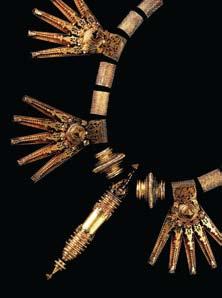
John C. goff 90oX 94C and Courtney M. Goff of San Antonio announce the birth of a daughter, Addison Parker, on Aug. 30, 2009.
andrew L. tam 90oX 92C and Heather Tam of Gainesville were married Jan. 30, 2009.
Kevin L. Callaway 97oX 99n of Leeds, Ala., received an MSN from Jacksonville State university where he is an instructor in medical-surgical nursing and pathophysiology.
vanessa n. Walker-Wilfong 97oX 99C and Christopher R. Wilfong of Clarkston announce the birth of a son, Delaus Everett, on Nov. 28, 2008. Walker-Wilfong is an adolescent outreach specialist in the English as a Second or Other Language program with the Gwinnett County School System.
John a. Wozniak ii 00oX 02BBa and Jennifer A. Sinclair of Atlanta were married May 15, 2009, in Sullivan’s island, S.C., and honeymooned in the Turks and Caicos islands. Wozniak works for Goldman Sachs. seth C. hall 02oX 04C and Alicia L. Scherini of Ridgeland, Miss., were married Nov. 7, 2009, at the historic Old Sheldon Church ruins in Beaufort, S.C. Hall is an attorney.
holly r rippe 03oX 04C and John D. Brockway of Littleton, Colo., were married Dec. 22, 2008, in Norman, Texas, and honeymooned in the Smokey Mountains of Tennessee. Rippe works with the New Teacher Project.
Lindsey r. Mason 06oX 07C and austin t reynolds 07oX 09C of Atlanta were married Jan. 2, 2010. Mason and Reynolds serve on the Oxford College Alumni Board.
Co LL ege
Michael h. Mcdougald 52C of Rome, vice chair of Georgia Public Broadcasting and chair of the Foundation for Public Broadcasting in Georgia, was inducted into the Georgia Radio Hall of Fame in October 2009. McDougald is a member of the Georgia Association of Broadcasters Hall of Fame and the Alabama Broadcasters Association Hall of Fame.
William e silver 59C of Atlanta, who is a board member of the American Board of Facial Plastic and Reconstructive Surgery and past president and chair of the board of the Medical Association of Atlanta, spoke in San Francisco and taught a four day course entitled The Art of Rhinoplastic Surgery, which was sponsored by the American Academy of Facial Plastic and Reconstructive Surgery.
david J. Burroughs 68oX 70C See Burroughs 68OX tom a. Chrisman 70oX 72C See Chrisman 70OX.
Janice g hildenbrand 73C of Bloomfield Hills, Mich., an attorney with the law firm of Collins, Einhorn, Farrell, and ulanoff, was recognized by Super Lawyers magazine as one of the top Michigan attorneys in the area of employment litigation defense.
pauline J. albert 74C of Austin, Texas, who received a PhD in human and organizational systems from Fielding Graduate university in April 2009, is assistant professor of management at St. Edward’s university.
Cynthia s seaman 76C of Chicago, a chiropractor, presented a speech “Roots of a Healthy Lifestyle,” to the faculty of North Park university in March 2009.
James J. Ware 76oX 78C See Ware 76OX.
Lark a. Will 81C of Baltimore, Md., manages the call center for Sylvan Learning.
Carol L. Moore 82C of Atlanta is a director of development for the Rollins School of Public Health at Emory university.
Chandra r stephens-albright 85C of Atlanta is president of the African American Employee Forum at The Coca-Cola Company. tania trotter Batson 86C of Tustin, Calif., is director of alumni relations at Claremont School of Theology. robert a. Kirsch 88C of Westfield, N.J., was nominated by New Jersey Governor Jon Corzine and confirmed as a state Superior Court judge in January 2010.
Babak yaghmaie 89C of New York City, an attorney who leads the business and technology practice group of the law firm of Cooley, Godward, and Kronish, was named one of “America’s Leading Lawyers” by Chambers uSA in 2008 and 2009 and was top ranked by Legal 500 in 2009.
Kimberly B. Katz 90C of Baltimore, Md., an associate professor in the Department of History at Towson university, is the author of her second book, A Young Palestinian’s Diary, 1941–1945: The Life of Sami ‘Amr, which was published in July 2009.
nadia M. ali 88oX 91C See Ali 88OX.
Jacqueline B. demain 89oX 91C See Demain 89OX. george s. LeMieux 91C of Tallahassee, Fla., was appointed by Governor Charlie Crist to serve as a u.S. Senator in the seat vacated by retiring Senator Mel Martinez. andrew L. tam 90oX 92C See Tam 90OX. alison Berliner rubin 93C and Daniel Rubin of Boca Raton, Fla., announce the birth of a son, Justin Max, on July 14, 2009. Rubin is associate director of development for the Florida region of the AntiDefamation League.
John C. goff 90oX 94C See Goff 90OX.
J. Crystal edmonson 95C of Atlanta, broadcast editor of the Atlanta Business Chronicle, is an adjunct professor teaching in the Journalism Program at Emory College.
Joshua e frank 95C See M. frank 96C
Jessica W. McCausland 95C and Thomas J. Fisher ii of Ashland, va., announce the birth of a daughter, Claire McCausland, on Oct. 16, 2009. McCausland is a trial attorney with the
u.S. Department of Justice.
daniel J. shoy Jr. 95C of Atlanta is senior program officer for The Arthur M. Blank Family Foundation. samara strauss Cone 96C of Nashville, who was featured on Nashville’s top rated talk show, Talk of the Town, is the founder of www.eCONEmicliving.com, a website that compiles freebies, deals, and family events related to frugal living.
Marcy Lamm frank 96C and Joshua e frank 95C of Jericho, N.Y., announce the birth of a daughter, Danielle Brooke, on Oct. 29, 2009.
Karen K. eastburn 97C of Atlanta, who graduated from the university of Medicine and Dentistry of New Jersey School of Osteopathic Medicine in May 2008, is a second year pediatrics resident at Emory university School of Medicine.
James d guilford 97C of New York City, author of the novel, Pencil Test, conducts diversity workshops for schools and nonprofits.
dyshaun g. Muhammad 97C 02MBa of Minneapolis, Minn., a senior marketing manager for General Mills in charge of Bisquick and other brands, is a member of the National Board of Governors for the Human Rights Campaign where he helps direct local advocacy, volunteer, and fund-raising operations.
gabrielle robinson promoff 97C and Michael L. promoff 97BBa of Atlanta announce the birth of a daughter, Emma, on Nov. 29, 2009. G. Promoff is a lead public health analyst with the CDC.
rebecca grady Jennings 99C of Goshen, Ky., is director of the law firm of Middleton and Reutlinger where she practices in the firm’s litigation section.
Jennifer pritzker sender 99C 02L 02ph and eric r. sender 02L of Atlanta announce the birth of a son, Noah Avery, in September 2009. J. Sender is an attorney with the law firm of Smith, Moore, and Leatherwood, and E. Sender is a partner of the law firm of Kutak Rock. Brenda t tran 99C of Norcross is senior associate director of development for Emory College of Arts and Sciences.
register
When Gold Blossoms Indian Jewelry from the Susan L. Beningson Collection Through July 11 carlos.emory.edu $2 off admission for Emory Alumni spring 2010 magazine 51
Coast Guard to the Test
When the devastating earthquake hit Haiti in January, United States Coast Guard (USCG) Lieutenant Commander Kevin McCormack 95C traveled to the Coast Guard’s Miami district office to work on getting supplies to Port-au-Prince.
“Everything that we would more or less take for granted—clean water, toilets, shops, cell phones—is all gone and your world very much changes,” says McCormack. “It takes a long time to get a developed country back on its feet, and for a country like Haiti, they’ve got a long road ahead of them.”
McCormack’s natural inclination to help took root during his years at Emory, through his involvement as a freshmen seminar leader and a residence hall adviser, as well as in student government and in the student programming council. He calls on these skills in his role as commanding officer of the Coast Guard Institute in Oklahoma City.
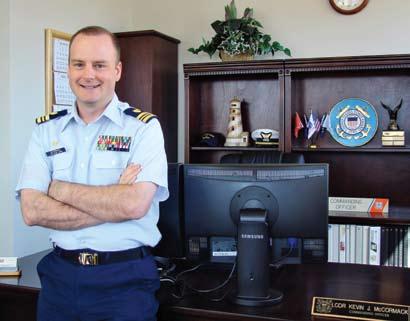
The institute administers advancement tests for all seventy-five thousand enlisted members of the USCG. It also manages the tuition assistance program and grant money for members pursuing higher education degrees.
Even with a father in the Air Force and both grandfathers in the Army Air Corps, it wasn’t until one of McCormack’s Emory peers encouraged him to enlist in the Armed Forces that he thought about it as an option. With his family’s support, he graduated from Emory College and left to attend the Coast Guard’s program for Officer Candidate School.
After seventeen weeks of early mornings, demanding days, and late nights, McCormack completed the rigorous program and traveled with the USCG, living around the country in California, Florida, Louisiana, and Michigan, until his current post at the Institute in Oklahoma City.
As commanding officer, McCormack supervises all of the institute’s operations.
“Overseeing a freshman hall as an R.A. is not too different than my job now—having a gaggle of teenagers who are working for you,” McCormack says. “It’s the whole mentality of helping folks figure out what they are going to do that I enjoy.”
—Mallory Goldberg 10C
digging up the past alumni ink
timothy tyson 87C, a research scholar at the Center of Documentary Studies at Duke university, has written a detailed account of an event that violently upended and divided his hometown in 1970 in Blood Done Sign My name: A True Story (Three Rivers Press, 2005). Tyson’s book tells of the street murder of twenty-three-year-old Henry Marrow, a young black man and vietnam veteran in Oxford, North Carolina, and the sham trial that followed, which fueled tensions still permeating the state after the Civil Rights Act of 1965. Blood Done Sign My name captures the outrage of the black community and the struggles of Tyson’s own father, an antisegregationist Methodist minister, who fought for his congregation to overcome their prejudices. “violence and nonviolence were both more ethically complicated—and more tightly intertwined—than they appeared in most media accounts and history books,” Tyson says. A movie based on the book was released in February by Paladin; Tyson plays a bit part as a Klansman. (http://vimeo.com/8852138.)

Murder, they Wrote: Murder in the Metro (Louisiana State university Press, 2010) is the story of Laetitia Toureaux, an italian immigrant and factory worker who was the first person ever killed in the Paris Metro. annette finleyCroswhite 91phd and gayle Brunelle 88phd present a historical study of this unsolved murder of 1937. The story’s backdrop is the political turbulence of France in the years leading up to World War ii.—Mallory Goldberg 10C

register
MCCORMACK CO u RTESY KE vi N MCCORMACK To place an ad or request more information about advertising in Emory Magazine, contact Diane Griffin, dianeg@bellsouth.net, or 770.652.2963. Would you like to reach 100,000 fellow alumni through advertising? 52 magazine spring 2010
vanessa n. Walker-Wilfong 97oX 99C See WalkerWilfong 97OX.

elana hammerman Mendelson 00C and Jesse Mendelson of Washington, D.C., announce the birth of a son, Jonah Abe, on Aug. 25, 2009.
david a. Bray 01C 04ph 08phd of Atlanta, a visiting associate with the National Defense university in Washington, D.C., recently returned from a 120-day deployment to Afghanistan as part of his work with the institute for Defense Analyses where he dealt with strategic concerns and providing alternative options for Pentagon decision-makers.
vonetta y daniels 02C of Scottsdale, an independent contractor for a minority-owned firm based in Washington, D.C., is writing part of a CDC information management systems proposal.
Jessica Levitas 02C and Ari House of New York City were married Nov. 14, 2009, at the St. Regis Hotel in Manhattan.
amber J. spierer 02C and Michael A. Korn of New York City were married Nov. 7, 2009 at the Liberty House Restaurant in Jersey City, N.J., and honeymooned in Buenos Aires, Argentina, and Carmelo, uruguay. Spierer is a senior associate in health care consulting with Mark Krueger and Associates.
James n. Weber 02C 10MBa and Kelly Taylor of Atlanta were married May 24, 2009, on the beach in Carrillon Beach, Fla. Weber is a business development manager with AlliedBarton.
Christopher J. fitze 03C See Gardner 04C hope t. Jackson 03C of Arlington, va., who received an MD from George Washington university School of Medicine in May 2009 and was inducted into the National Gold Humanism Honor Society, is a general surgery resident at the George Washington university Hospital.
Lauren n. nachinson 03C of Chicago, an attorney with the law firm of Quarles and Brady, was selected by Super Lawyers
“Rising Stars” in the area of bankruptcy and creditor/ debtor rights.
sabrina gardner 04C and Christopher J. fitze 03C of Atlanta were married May 2, 2009 in Baiting Hollow, N.Y. Gardner, who received a JD from the university of North Carolina School of Law and was a member of the Law Review, is an attorney with the bankruptcy group of the law firm of Troutman Sanders. Fitze, who is completing his MBA at the university of Chicago and has earned the Chartered Financial Analyst designation, is a portfolio manager with the investment firm, Earnest Partners.
seth C. hall 02oX 04C See Hall 02OX.
holly r rippe 03oX 04C See Rippe 03OX
Meredith L. Carpenter 05C and gregory L. hamilton 06C of Berkeley, Calif., were married Oct. 3, 2009. Carpenter is a PhD student in molecular and cell biology and Hamilton is a PhD student in chemistry at the university of California, Berkeley.
nataya Khuwatsamrit 07C and Christian M. Cabrera 07C of Watkinsville were married Oct. 3, 2009, at the Emory Conference Center.
Lindsey r. Mason 06oX 07C See Mason 06OX
austin t. reynolds 07oX 09C See Mason 06OX
Business
M. pat greene 52BBa of Talladega, Ala., who received the 2005 Distinguished Alumni Award at Marist High School, is president of the Marianna Greene Henry Special Equestrian Program, an accredited center through the North American Riding for the Handicapped Association, which he founded twenty years ago with his wife, Marilyn, in memory of their daughter, Marianna.
Kenneth a. Loren 74BBa of Potomac, Md., is president and owner of Kenco Beverage Distributors, a wholesale wine, beer, and spirits distribution company.
won the Key Partner Award in accounting, business transactions, and business valuations from the South florida Business Journal
herbert W. silverman 89MBa of Ocala, Fla., an agent for the New York Life insurance Company, received the Business Advocate of the Year award from the Ocala/ Marion County Chamber of Commerce on January 14, 2010.
Mark L. feinberg 96BBa 02MBa and Karyn W. Feinberg of Atlanta announce the birth of a son, Dylan, in March 2009. Feinberg is general partner and principal of Feinberg Capital Partners/Advisors and a partner in a commercial brokerage firm.
sean e. Mayberry 97MBa of Maplewood, N.J., previously managing director of Population Services international in india, is relocating to New York City to serve as the chief operating officer of visionSpring, a company that provides affordable eyeglasses to people in developing countries.
Michael L. promoff 97BBa See G. Promoff 97C adrienne Klimas eltink 98BBa and Anthony P. Eltink of Chicago announce the birth of a son, Oliver Penn, on Aug. 30. 2009.
Caryn neuerman Kinzler 98BBa and Philip Kinzler of Atlanta announce the birth of a son, Nathan Meyer, on March 25, 2009. Kinzler is controller for the Georgia division of Pulte Homes.
Megan McCarthy McMillin 98BBa of Duxbury, Mass., is an associate with the law firm of Gennari Aronson where she works with emerging growth company clients. rachel Brod Berger 99MBa 99L and David L. Berger of New York City announce the birth of a son, Ezra Leo, on Oct. 27, 2009.
urvi Bhandari 99BBa 06MBa of Dallas, Texas, is director and chief of staff at AT&T in Dallas.
scott M. Budnick 99BBa of Atlanta was executive producer of the movie, The Hangover, which won the Golden Globe Award for Best Motion Picture-Comedy
register
Be picture perfect with a new car! It’s just an easy click away. We offer a Free Car Buying Service to help you locate the car you want. It’s hassle free & convenient! Rates as low as 3.75% apr on new vehicles. Call 404.329.6415 for details or visit us online at www.emoryacu.com. EmoryMagAd0310_1.indd 1 3/30/10 10:27 PM spring 2010 magazine 53
doreen L. Linneman 99MBa of Atlanta, founder of Riverbend Consulting and co-founder of i-Shake, an infotainment company, was named by the Atlanta Business Chronicle in November 2009 to their “40 under 40 Rising Star” list.
Brian g. Banigan 00MBa See Garcia-Banigan 96PH
Jason n. gershwin 00BBa of New York City, a cofounder of Wanduta, an online resource dedicated to helping independent musicians, is vice president of Alternative Capital Partners, a special situations firm.
Jonathan J. Kloster 00BBa of Englewood, Colo., is a business consultant with Wells Fargo Bank.
Marni nathan Kloster 00BBa of Englewood, Colo., is an attorney.
Barry d. Lapides 00BBa and Rachel Lapides of Miami, Fla., announce the birth of a son, Max Simon, in August 2009. Lapides is an attorney specializing in commercial matters with the law firm of Duane Morris.

Matthew d. Liebman 00BBa of Philadelphia, a financial advisor with Merrill Lynch who was named Rookie of the Year during his first year with the firm, was named to the Merrill Lynch Executive Club.
Brent a pasternack 00BBa and Melissa Circle of New York City were married Nov. 7, 2009, in Woodbury, N.Y.
Mark e. pifer 00MBa of Burke, va., is vice president of corporate strategy and business development for National Geographic ventures, a subsidiary of the National Geographic Society.
Michelle h zeigler 00BBa of Fort Lauderdale, Fla., is an associate with the law firm of Wicker, Smith, O’Hara, McCoy, and Ford.
elizabeth p halkos 01MBa of Atlanta, vice president of sales and marketing for Purchasing Power, was named by the Atlanta Business Chronicle in November 2009 to their “40 under 40 Rising Star” list.
Carlos a. Lugo 01MBa of Decatur, a senior manager with Accenture who came to the united States from Caracas, venezuela, in August 1999 to attend Goizueta
Business School’s MBA program, became a u.S. citizen on Nov. 1, 2009.
antonino pillari 01MBa and Kimberly B. Essency of New York City were married Jan. 22, 2010, in Manhattan. Pillari is a strategic planning consultant in the health industries advisory unit of PricewaterhouseCoopers.
i-fang Chen 02MBa of Shanghai, China, is a business development manager developing smart energy solutions for Cisco.
Celena LeCora evans 02MBa of Stone Mountain, a group manager with Heatcraft Refrigeration, was named by the Atlanta Business Chronicle in November 2009 to their “40 under 40 Rising Star” list.
Mark L. feinberg 96BBa 02MBa See feinberg 96BBA dyshaun g. Muhammad 97C 02MBa See Muhammad 97C thomas J. powers 02MBa See kim 09MBA
John a. Wozniak ii 00oX 02BBa See Wozniak 00OX. steven d greenfield 04evMBa of Atlanta, director of international development for Manheim, the largest provider of vehicle auction services in the world, was named by the Atlanta Business Chronicle in November 2009 to their “40 under 40 Rising Star” list. Brannan C. Moss 05evMBa of Atlanta, a vice president with Jones Lang LaSalle, was named by the Atlanta Business Chronicle in November 2009 to their “40 under 40 Rising Star” list.
urvi Bhandari 99BBa 06MBa See Bhandari 99BBA amy M. Branch 06evMBa and Barry G. Munn of Gainesville were married Oct. 9, 2009, at Morningside Baptist Church. Branch works in development and marketing with Lakeview Academy.
arun v. Mohan 06MBa 07M and Carmen P. Mohan of Cambridge, Mass., announce the birth of a daughter, Jaya Marie, on Dec. 16, 2009.
Bryan K. rosenbaum 06BBa See Hochman 07BBA
Carol McMahon hill 07MBa and David M. Hill of Decatur announce the birth of a son, Cullen David, on Nov. 30, 2009.
Lauren B. hochman 07BBa and Bryan K. rosenbaum 06BBa of Atlanta were married Oct. 24, 2009.
Michael d. Laycob 04L 07MBa See Laycob 04L
steven p. Clemmer 09eMBa of Marietta is the contracting manager in the Healthcare Business Solutions group of Cook Medical.
Michelle Kim 09MBa and thomas J. powers 02MBa of Smyrna were married Oct. 10, 2009. Kim is a senior advisor with Ernst and Young, and Powers is a director with NKF Consulting.
Melissa Bledsoe Minihan 10eMBa of Mableton, a senior manager with The Home Depot, was named by the Atlanta Business Chronicle in November 2009 to their “40 under 40 Rising Star” list.
James n. Weber 02C 10MBa See Weber 02C
d enta L
Wayne e tipps 67d 70dr of Lookout Mountain, Tenn., an oral surgeon in private practice, received the 2009 Presidential Achievement Award of the American Association of Oral and Maxillofacial Surgeons in October 2009.
g raduate sC hoo L
nell dahlberg Crowe 66g of Duluth is the author of the book Oatmeal, Samp, and Cornpone amanda C. gable 92phd of Decatur, a graduate student in fine arts in creative writing at Georgia State university and recipient of the Paul Bowles Fellowship in Fiction Writing, is the author of the book, The Confederate General Rides north Jeffrey s reznick 95g 99phd of Derwood, Md., the author of his second book, John Galsworthy and Disabled Soldiers of the Great War, with an illustrated Selection of His Writings, is deputy chief of the History
ngs w ll vary. **D scounts and credits are available where state laws and regu at ons allow, and may vary by state. To the extent perm tted by aw, appl cants are individually underwritten; except in Massachusetts, not all appl cants may qua fy. †Accident Forgiveness coverage subject to terms and condit ons of Liberty Mutual’s underwr t ng guidelines and s not avai able n all states. Coverage provided and underwr tten by Liberty Mutua Insurance Company and
register
54 magazine spring 2010 Get More. Save More. Find out just how much more today. 12-month Rate Guarantee unlike the six-month policies that some other insurers offer Help when you need it with 24/7 Emergency Roadside Assistance and 24-hour claims service Additional coverages for added security including Umbrella Liability policies, Accident Forgiveness† and Home Insurance with optional Identity Fraud Expense Coverage • Call 1-800-524-9400 an d m ent i on client #100181 • Go to www.LibertyMutual.com/emoryalumni • Or visit a Liberty Mutual office near you This organ zat on receives financial support for allowing Liberty Mutua to offer th s auto and home nsurance program. *Figure based on a February 2008 sample of auto pol cyholder sav ngs when compar ng the r former premium w th those of Liberty Mutual’s group auto and home program. Individual premiums and sav
its affi iates, 175 Berkeley Street, Boston, MA. A consumer report from a consumer reporting agency and/or a motor vehicle report, on all drivers l sted on your policy, may be obtained where state laws and regu at ons allow. Please consult a Liberty Mutual specia ist for spec ic details. ©2008 Liberty Mutual Insurance Company. All Rights Reserved AUTO HOME With Group Savings Plus®, Emory alumni can get more from their auto and home insurance. Savings of up to $327.96 or more a year on auto insurance* with a special group discount and other discounts**
of Medicine Division of the National Library of Medicine at the National institutes of Health in Bethesda. david a. Bray 01C 04ph 08phd See Bray 01C
La W
stanley f. Birch Jr. 70L 76L of Atlanta, a judge with the u.S. Court of Appeals for the 11th Circuit, received the 2009 intellectual Property Legends Award hosted by Georgia State university College of Law and Georgia State university J. Mack Robinson College of Business in September. Birch has authored more than three thousand opinions and participated in more than ten thousand opinions since joining the court in June 1990.
John C. stivarius Jr. 80L of Alpharetta, a partner of the law firm of Elarbee Thompson, was selected by the Georgia Trend magazine for inclusion in their 2009 “Legal Elite” list in the area of general practice and trial law. stanford g. Wilson 80L of Atlanta, managing partner of the law firm of Elarbee Thompson, was selected by the Georgia Trend magazine for inclusion in their 2009 “Legal Elite” list in the area of labor and employment law. richard o slutzky 81L of Maplewood, N.J., is a partner of the Global Philanthropic Consulting Group, a financial advisory team within Merrill Lynch that focuses on investment management consulting for nonprofits and foundations.
howard r osofsky 82L of Atlanta, a partner of the law firm of Bexley and Osofsky, received the Kids’ Chance of Georgia first annual institute of Continuing Legal Education Auction Award and a Kids’ Chance Scholarship was designated in his name in October 2009.
rachel Brod Berger 99MBa 99L See Berger 99MBA
tomasita d. Crowell 00L and ricardo L. Carmona 00L of Altamonte Springs, Fla., were married Aug. 20, 2008. in July 2009, they opened the Carmona Law Firm, which focuses on real property, construction, estate planning, and mediation law.
eden d doniger 02L and itai d tsur 02L of Atlanta announce the birth of a daughter, Orli Sivan, on Dec. 3, 2009.
ethan M. rosenzweig 02L of Decatur is assistant dean of admission at the Emory university School of Law.
eric r. sender 02L See J. Sender 99C
Jennifer pritzker sender 99C 02L 02ph See J. Sender 99C
itai d tsur 02L See Doniger 02L
erin englebrecht hannum 03L 03t of Encinitas, Calif., who is working in Geneva, Switzerland, with the international Baby Food Action Network, will be relocating to Spokane, Wash., in April 2010.
alicia grahn Jones 04L and Jeffrey Jones of Atlanta announce the birth of a daughter, Emma Jane.
Michael d. Laycob 04L 07MBa of St. Louis, Mo., is an executive responsible for daily operations of Precision Practice Management, a medical billing and EHR services provider. andrew r. Boardman 09L and Adrienne
M. Boehm of Brookline, Mass., were married June 6, 2009, at Wedgewood Pines in Stow and honeymooned in Kauai and Maui, Hawaii. Boardman works in the legal department of One united Bank in Boston.
Medi C ine
Lee M. Mabee Jr. 76M of Sioux Falls, S.D., received the 2009 South Dakota State Medical Association’s Young at Heart Award for inspiring young physicians as a role model, mentor, and leader.
steven t. Bailey 06Mr and Catherine Floyd of Portland, Ore., were married June 27, 2009, in Atlanta. Bailey is an assistant professor in ophthalmology at the Casey Eye institute at Oregon Health and Science university, where he completed a retina fellowship in 2008. arun v. Mohan 06MBa 07M See Mohan 06MBA
n ursing
heather a. Mcrae 98n and Bradley Willems of Sheboygan, Wis., were married Oct. 10, 2009, in Senoia.
Kevin L. Callaway 97oX 99n See Callaway 97OX.
Kelly Moynes sklare 04n 06Msn and Josh B. Sklare of Atlanta announce the birth of a daughter, Maya Noelle, on Dec. 16, 2009.
p u BL i C h ea Lth
dinamarie C. garcia-Banigan 96ph and Brian g. Banigan 00MBa of North Reading, Mass., announce the birth of a son, Gabriel Jerome, on May 9, 2009. Garcia-Banigan is an endocrinologist at the Lahey Clinic Medical Center, and Banigan works for iBM.
Jennifer pritzker sender 99C 02L 02ph See Sender 99C

david a. Bray 01C 04ph 08phd See Bray 01C
Annual Fund Pledge/Gift Form
ALLERGY/ASTHMA PHYSICIAN. Dr. David Rogers Redding 03R proudly announces the opening of his practice in Buckhead, Redding Allergy and Asthma Center, 3193 Howell Mill Rd. NW, Ste 102, Atlanta. Experienced in treating children and adults, Dr. Redding is board-certified in Allergy and Immunology. For relief of nasal symptoms, go to ReddingAllergyCenter.com or call 404.355.0078.
FLORIDA BEACH VACATION. Amelia Island/ Fernandina Beach. Two bedroom. Beachfront. Double-wide terrace right at water’s edge. Completely renovated interior, exterior and beach itself. Five minutes to Historic Downtown. www. coralsandscondo.com. $1150/week. $3900/month. No pets. 404.233.1333. (Emory Alum)
Beautiful Mountain House for Rent
Comfortable, spacious, two-story home in a private, wooded community just 12 miles from all of Asheville’s famous charm and culture. On a mountain, at 3,450 feet the house offers one of the area’s most spectacular long-range views. Enjoy it from the 1,000-square foot, multi-level deck, the hot tub, or indoors, in front of the fire. www.chestnutforest.com
Pet Portraits by Jennifer Wheelock
“Jennifer captures the soul, the essence of a pet while maintaining a sense of whimsy in her work. She’s done portraits of my four dogs. They’re priceless.”—L. M. Bryant jenniferwheelock.com
The Best of Emory Photography Emory Photo/Video now offers limited-edition fine art prints of your favorite Emory scenes. Visit our website to browse a selection of Emory classics: www.photo.emory.edu.
Notice Anything Different?
Emory Magazine is now accepting classified ads! This section offers a new way for you to connect with more than 100,000 fellow alumni. For more information, contact 404.727.0161 or emclassifieds@emory.edu.
Yes, you have my strong support for Emory University. Please accept my tax-deductible gift of $ to the Annual Fund to help preserve and improve the distinctive features of the University’s educational programs.
I hereby pledge to Emory University the sum of $ . I intend to pay my pledge as follows: monthly quarterly other (please specify)
I have enclosed a check for $ payable to Emory University.
I prefer to charge my gift to my VISA
Please direct my gift to support:
(This is my personal business email.)
register
MasterCard American Express Account Number Expiration Date Authorized Signature
Home Address City State ZIP Home Phone Cell Phone Preferred email MAG0S
Name(s)
Method o F P A y M ent
eM Classifieds
spring 2010 magazine 55
t heo L ogy
erin englebrecht hannum 03L 03t See Hannum 03L
d eaths
Lillian Ledbetter gregory 33g of Atlanta on Jan. 1, 2010. Emory survivors: Charles L. Gregory 75L and Cleburne E. Gregory iii 79L. gladys Meeks vindal 33g of Asheville, N.C., on July 3, 2009.
Judson C. Ward Jr. 33C 36g of Decatur on Nov. 2, 2009. Emory survivors: Peter
C. Ward 70B, Dale A. Davenport 71OX, Rebecca Ward Davenport 72OX, Judson
C. Ward iii 98OX 01B, and Jennifer Ward Prus 97C.
Judy Morgan Castellow 36n of Moultrie on June 5, 2009. Emory survivor: Lester
M. Castellow 75OX 77C 82L
elsie Bailey hudson 36n of Fernandina Beach, Fla., on Feb. 12, 2009.
arnell Lewis Land 36g of Potomac, Md., on July 2, 2009.
Mary ella suter Johnson 37g of Atlanta on Jan. 3, 2010. Emory survivors: Mary Elizabeth Johnson Withers 67G and H. Christine Johnson Wolf 77G. Mary elizabeth nickels Kraemer 37g of Chelsea, Mich., on Nov. 19, 2009.
James B. stewart 38M of Glenwood on Oct. 17, 2009.
Cam d dorsey Jr. 39C of Atlanta on Nov. 25, 2009. Emory survivor: Laleah furniss Adams 75n
Clyde g. McCarver 39oX of Hartsville, S.C., on Sept. 29, 2009.
paul M. rumble 39oX of Macon on Jan. 4, 2010.
israel Katz 40B 42L of Atlanta on Jan. 1, 2010.
andrew C. Minor 40C of Columbia, Mo., on Oct. 29, 2009.
alva h. Letton 41M of Atlanta on Jan. 13, 2010.
J. Jackson reeve 41oX 43C 58d of Cumming on Dec. 19, 2009. Emory
survivor: James J. Reeve Jr. 67OX 69B.
Martin h smith 41oX 45M 49fM
50Mr of Gainesville on Jan. 18, 2010.
Emory survivor: klara M. Elfstrom 11PH.
f alex Crittenden 42C of Thomasville on Nov. 29, 2009.
alwin L. hanes 42B of Atlanta on Jan. 13, 2010.
Marguerite gramling thompson 43g of Orangeburg, S.C., on Jan. 8, 2009.
reynolds W. greene Jr. 43oX 45C 48t of Lilburn on Jan. 16, 2010. Emory survivor: Stuart C. Greene 80T 88T.
Louis r harlan 43C of Lexington, va., on Jan. 22, 2010.
Matthew s hazelrig 43C of Alpharetta on April 16, 2009.
William v. pentecost Jr. 43C of Marietta on Dec. 26, 2009.
earl C. pirkle Jr. 43C 47g of Aiken, S.C., on Jan. 12, 2010.
earnest C. atkins Jr. 44C 51M 52Mr 59Mr of Alexandria, va., on March 22, 2008.
Charles K. singleton 44C of Newnan on Nov. 3, 2008.
edwin M. Walker 44C 46M of South Bend, ind., on April 5, 2009.
Carolyn Keith eck 45n of Roanoke, va., on Jan. 8, 2010.
ethel Carmichael inabinet 45n of St. Matthews, S.C., on Dec. 6, 2009.
albert s. Johnson 45d of McComb, Miss., on Nov. 5, 2009.
henry e. Braselton 46oX of Braselton on Dec. 21, 2009.
Jacob rice 46C of Yarmouth Port, Mass., on Jan. 4, 2010.
Charles e donnelly Jr. 47C of Savannah on Dec. 23, 2009.
Walter s hay Jr. 47C of Atlanta on Dec. 17, 2009.
edd L. simmons 47C of Fayetteville on May 5, 2009.
anthony a alaimo 48L of Sea island on Dec. 30, 2009.
Joseph r. Benson 48C 52M of Wetumpka, Ala., on Dec. 18, 2009.
Joseph h. Buxton 48g of Douglas on April 13, 2009.
John M. Crow 48oX 57C of Waynesboro on Nov. 19, 2009.
James d duval 48B of Buford on Nov. 30, 2009.
■ Gifts that pay me income (Charitable trusts and Annuities)
■ Gifts of Appreciated Assets including Stocks and Real estate
■ Creating a named Scholarship or other endowment Fund at emory
■ Including emory in my Will or trust
■ other:
Emory Annual Fund 1762 Clifton Road Suite 1400 Atlanta GA 30322-4001
Telephone: 404.727.6200
Fax: 404.727.8786 emoryaf@emory.edu
J. Carroll fink 48t of Richmond, va., on March 8, 2009. Emory survivors: William J. fink 53T and Ann Eckman fink 53G.
thomas g gallant Jr. 48C of Nashville, Tenn., on Nov. 10, 2009.
timothy J. harrington sr. 48C of Midlothian, va., on April 16, 2009.
valter e pilcher Jr. 48C 49g of Schenectady, N.Y., on Dec. 21, 2009.
Wallace e. Bailey 49C of Rockville, Md., on Dec. 25, 2009.
Charles h. drake 49C of Glennville on Dec. 3, 2009.
arthur r gray 49C 53M 57Mr of Rome on Jan. 3, 2010. Emory survivors: Arthur R. Gray Jr. 76C, Rosalyn Robinson Gray 75C, and Phillip n. Gray 76OX 78C.
Jack t odom 49C 53d of Ft. Pierce, Fla., on Feb. 3, 2009.
henry f. thompson Jr. 49C of Atlanta on Dec. 11, 2009.
J. paul todd 49g of Birmingham on Oct. 1, 2009.
edward J. Callahan 50C of Snellville on May 20, 2009. Emory survivor: Mary Cobb Callahan 77G.
Louis a. de la parte Jr. 50C of Tampa on Sept. 28, 2008.
Wayne W. gammon sr. 50L of Cedartown on Nov. 16, 2009.
henry B. Wells 50C of Davidson, N.C., on Oct. 28, 2009.
thomas W. allen 51L of Savannah on Jan. 9, 2009.
f h. Boney 51L of St. Simons island on Nov. 19, 2009. Emory survivor: Virginia Brewer Boney 55G.
robert h. Conerly 51t of Sandy Ridge, N.C., on Dec. 18, 2009.
frank r holland 51C of Jefferson City, Tenn., on Aug. 30, 2008.
robert a. Mayfield 51oX 55C of Chico, Calif., on Nov. 20, 2009.
edward r. Leverett 52C of LaGrange on Jan. 17, 2010.
francis a. Manley 52C of Decatur on Nov. 11, 2009. Emory survivor: Evelyn Manley 79C.
stewart p smith 52Mr of Chattanooga on Oct. 26, 2009.
edward L. stevens 52C of Macon on Nov. 20. 2009.
Joseph a. Wells 52d of Greenville, S.C., on Feb. 25, 2009.
harry d. dobbs 53C 54g 67phd of Eastman on Jan. 7, 2010. Emory survivor: Caroline D. Moore 12C.
Cameron Magnon 53BBa 56MBa of Dunnellon, Fla., on Sept. 9, 2009.
robert e. Murphy 53g of Huntsville, Ala., on Sept. 19, 2008.
hugh K. sealy Jr. 53Mr 54fM of Macon on Oct. 21, 2009.
Lewis C. Bell 54g of Morgantown, W. va., on Nov. 9, 2009.
harold r. Brown 54C of Panacea, Fla., on Dec. 5, 2009.
theodore M. Margeson 54d of Atlanta on Dec. 17, 2009.
James h. pound Jr. 54C 56g of Panacea, Fla., on Dec. 11, 2009.
robert W. storey 54L of Atlanta on Dec. 27, 2009.
george M. venable Jr. 54C of Cumming on Jan. 14, 2008. Emory survivor: Maria Schmied Venable 72G.
virginia swanson Williams 54n of Atlanta on Jan. 12, 2010.
paul o. Bruce 55t of Douglasville on May 8, 2008.
James e. Callahan 55C 56g of Anchorage, Alaska, on Jan. 29, 2010.
Carl fromhagen Jr. 55M of Seminole, Fla., on Dec. 16, 2008.
Kathryn Bowen Mercer 55g of Marietta on Jan. 29, 2010.
John o. Bumgardner 56d of Columbia, S.C., on Oct. 11, 2009.
pete h rhymes 56M of Santa Fe, New Mexico, in January 2010.
donald r sondag 56Mr 61Mr of Winter Park, Fla., on May 13, 2008.
theodore Blizzard Jr. 57d of Crescent City, Fla., on Dec. 11, 2009.
norman W. Lavy 57Mr of Westfield, N.J., on Oct. 7, 2009.
virginia Molleson Mayhall 57C of Atlanta on Nov. 17, 2009.
reginald J. Bell sr. 58C of Albany on June 21, 2009. Emory survivor: Barbara
Is emory in your will or other testamentary plans?
■ yes ■ no
■ Would Consider
■ My employer will match my gift. name of Company
■ My spouse’s/partner’s employer will match my gift. name of Company
Please contact your personnel or human resources office for eligibility information and to obtain a matching gift form. Enclose the completed form with your contribution. We will verify your contribution and return the form to your employer, who will send the matching gift directly to Emory upon approval. We appreciate your efforts to maximize the available resources to ensure a bright future for Emory and its students.
you also may make your gift online at www.emory.edu/give.
register
Please send me more information about:
56 magazine spring 2010
2010 J o U rne Y s o F D is C over Y
Classic China

October 5–18, 2010 SOLD OUT
October 8–21, 2010
From $3,395 (airfare included)
Classic greek isles
October 11–23, 2010
From $4,595 (airfare included) in the wake of lewis and Clark
October 24–30, 2010
From $3,255 (plus air)
Treasures of southern africa
October 31–November 14, 2010
From $5,895 (plus air)
Crossroads of the Classical Mediterranean
October 24–November 1, 2010
From $2,895 (plus air)
orvieto and rome Cultural season
October 29–November 5, 2010
From $2,590 (plus air)
Thanksgiving in new York City
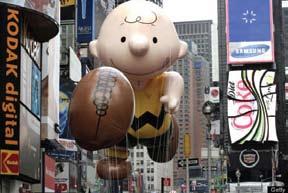
November 24–28, 2010
From $2,899 (airfare included)
Special Discount Available for Children
holiday Markets on the Danube

November 26–December 4, 2010
Amadeus Fleet
From $1,995 (plus air)
Emory Tr Av E l Progr A m
The coming year brings opportunities to discover new places and fresh faces around the world while revisiting some old, beautiful favorites. We are dedicated to giving travelers like you enriching cultural experiences to enhance your lifelong education while strengthening your connection with faculty, other alumni and friends of Emory.
If you would like additional information about our trips for 2010 or are interested in being added to our travel mailing list, please email alumnitravel@emory.edu or contact the Emory Travel Program at 404.727.6479.
The information and dates above are based on information provided by our travel vendors as of April 2010 and are subject to change. Individual trip brochures will be available to be mailed out approximately 9–12 months prior to the trip’s departure.
All Emory Travel Program tours require that participants be in good physical condition. Each traveler must be capable, without assistance, of walking a minimum of one mile over uneven terrain and of climbing stairs that may not have handrails. Participants should have sufficient stamina to keep pace with an active group of travelers on long days of touring. If you have any questions about your ability to participate in a tour, please call the Emory Travel Program at 404.727.6479
TA k E T h E ro A d T o d I scov E ry I n 2010 A nd s EE T h E world w IT h T h E Thanksgiving in n ew York Ci TY Classi C China
h oli D a Y M arke T s on T he D an U be
www.alumni.emory.edu
to t a K e advantage of the servi C es and B enefits offered to a LL eM ory a L u M ni
social events in your City alumni travel program
emory Career network database alumni Career Coaching insurance Benefits
emory Credit Card free Lifetime email address
e-Class notes online alumni directory
Kaplan test prep discounts
allLearn online Courses
Lifelong Learning discounts
Banking at emory Credit union young alumni activities emory speakers in your City intramural sports and much more!
find it all on our website at www.alumni.emory.edu/privileges, or call the emory alumni association at 404.727.6400.
emory Magazine reply form
submit Class notes. Mail to: Alumni Records Department, Emory University, 1762 Clifton Road, Atlanta, Georgia 30322. FAX 404.727.4876. Please mark address corrections directly onto your current Emory Magazine mailing label. eurec@emory.edu; www.alumni.emory.edu
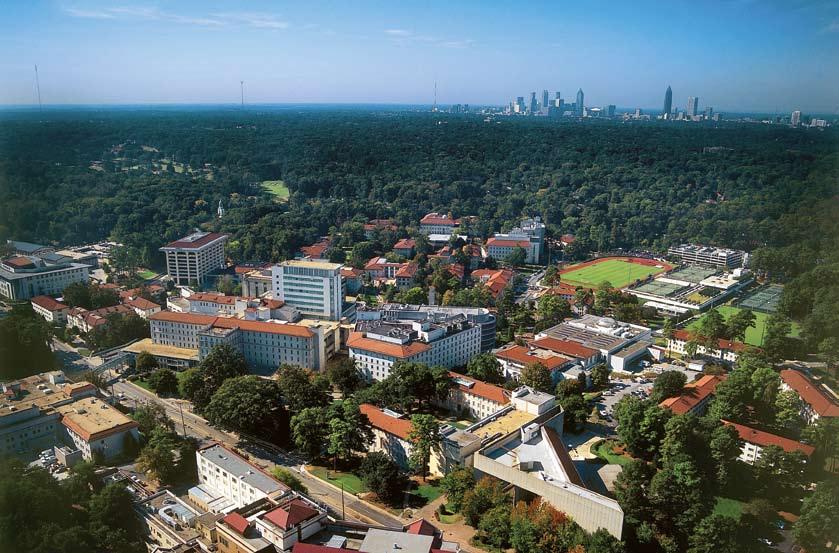
Name Degree(s) Class year(s)
College/School Major(s)
Title: ☐ Dr. ☐ Mr. ☐ Ms. ☐ Mrs. ☐ Miss ☐ Rev.
Spouse/partner’s name and class year(s)
Home address (☐ check if new) City State Zip Country
Home phone Email
My firm, employer, or professional specialty (☐ check if new)
Title Prefer contact at ☐ home ☐ work
Business address City State Zip Country
Business phone Fax Email
Please include the following news in Emory Magazine
(Your class note may not appear for up to six months following submission. please do not resubmit Emory Magazine does not publish engagement announcements; submit wedding announcements after the ceremony has taken place. For birth announcements, include the names of both parents. Please provide a daytime telephone number in email submissions.)
C he CK it out ! L og on at
58 magazine spring 2010
Van ness Bell 59C.
John a simmons 58B of Chapala Jalisco, Mexico, on Jan. 30, 2010.
edward g scruggs 59C of Atlanta on Nov. 13, 2009.
robert L. Wannamaker sr. 59d of Columbia, S.C., on Jan. 8, 2010.
richard K. Brantley 60g of Wilmington, Del., on Dec. 21, 2009.
John d swanson 60C of Atlanta on Dec. 14, 2009. Emory survivors: Richard W. Swanson 67C 70L, Lee Swanson Thompson 89OX 91C, and Mark D. Thompson 89OX.
douglas M. Weems ii 60C of Locust Grove on May 16, 2009.
James r. Black 61oX of Spring Hill, Fla., on May 17, 2009.
ruben p head Jr. 61L of Roswell on Nov. 20, 2009. Emory survivors: Steven
L. Head 75C 79L and Ellen Cottraux Head 80C.
James h. Weeks 61L of Atlanta on Nov. 5, 2009.
Bobby L. anthony 62t of Royston on Nov. 14, 2009.
a. William Bennett 62oX of Washington on Dec. 24, 2009. Emory survivor: Evelyn Coulter Bennett 63OX 65C. hugh o. richardson 62g of Millbrook, Ala., on Oct. 4, 2009.
Kenneth d hutson 63d of Marietta on Oct. 4, 2009. Emory survivor: katherine Langston Hutson 62n
robert a. Lanford sr. 64C 67t of Dahlonega on Dec. 30, 2009. Emory
survivors: Charles A. Lanford Sr. 52C,




Thomas C. Lanford Sr. 55C 58T, Renee Lanford Smith 61C, Clyde C. Smith 62C, Laudis H. Lanford 78OX 80C 83T, Becky Lanford Candler 81OX 83C, Thomas C. Lanford Jr. 82C, David L. Smith 84OC 86C, and Holly B. Lanford 86OX 88C 92L.
J. harold Jackson Jr. 65C of Stone Mountain on Nov. 27, 2009.
ann h. Lewis 65g of Spartanburg, S.C., on Sept. 2, 2009.
stephen h. Lieberman 66C of Wakefield, R.i., on Jan. 24, 2009.
thomas e. Baynes Jr. 67L 72L of Lake Wales, Fla., on Dec. 16, 2009.
andrew t parker 67t of Jacksonville, Fla., on Sept. 9, 2009.
Jane scott Waters 67g of Tybee island on Sept. 17, 2007.
o’Lynn Jacobs allen 68n of Dawsonville on Jan. 16, 2010.
ellen Croswell Burgin 68B of Atlanta on Dec. 7, 2009.
John B. achord 70C of Savannah on Oct. 3, 2009.
L. donald Johnson 70Mr of Burlington, N.C., on Aug. 18, 2009.
Clark p. Kirkman 71C of Northville, Mich., on Sept. 20, 2009.
James W. sikes sr. 72d 74dr of Hamilton on Jan. 5, 2010. Emory survivors: Thomas E. Sikes Jr. 66C and Jennifer C. Sikes 90C.
richard e herrmann 73phd of Martin, Tenn., on Jan. 17, 2010.
steven W. surbaugh 73MBa of Atlanta on Feb. 1, 2010. Emory survivors:
Cheryl Smith Surbaugh 68B, William L. Surbaugh 69MBA, and Jeffrey M. Sydes 98C.
susan harrison Kaufman 74C of San Antonio, Texas, on Sept. 19, 2009.

Jeffrey L. nale 74d of Mifflintown, Pa., on Sept. 30. 2009.
William J. vanderyt 74M 75Mr 76Mr 79Mr of Atlanta on Nov. 9, 2009.
Emory survivor: kirby Van Brocklin Vanderyt 72C.

Mady howard smith 75C of Atlanta on Nov. 25, 2009.
helaine averbuch fuldauer 76n of Nashville, Tenn., on Sept. 28, 2009.
Emory survivor: Mark S. Averbuch 70C and kacey L. fuldauer 07B.
Jonathan s. Lynton 76phd of Decatur on Dec. 9, 2009.
William B. Webster Jr. 76d 81dr of Duluth on Jan. 20, 2010.
donald W. thurmond 77L of Madison on Dec. 8, 2009.
Martin W. alpert 78L of Ft. Myers, Fla., on Oct. 20, 2009.
sandra L. Mcgettigan 78n of Tucson, Ariz., on Dec. 7, 2009.
James a hoeper 80B of Smyrna on Dec. 24, 2009.
howard p. Liss 80Mr of Jerusalem, israel, in 2007.
f. Larue Cook 82t of Sumter, S.C., on
Nov. 11, 2009.
James a hazlehurst 82M of Chico, Calif., on Nov. 5, 2009. Emory survivor: Janice Smiley Hazlehurst 80n
Barbara greer painter 82a of Henderson, Nev., on April 13, 2008.

glenn e simensky 83L of Woodmere, N.Y., on Dec. 17, 2009.
thomas h. Correll 85phd of Ft. Lauderdale, Fla., on Dec. 7, 2009.
george M. rawn 85t of Morristown, Tenn., on July 13, 2009.
robert W. Lesh 86g of Chicago on Nov. 6, 2009.
John M. Cheatham Jr. 88Mr of Rancho Santa Fe, Calif., on Nov. 2, 2009. Emory survivor: Harvey M. Cheatham 74MBA. timothy B. gelman 89eMBa of Roswell on Dec. 7, 2009.
Benjamin s. Juhan 89t of Powder Springs on Feb. 23, 2009.
donald J. hitt 92t of Remlap, Ala., on Nov. 14, 2009.
donald J. Wilson 93fM of Milwaukee, Wis., on Dec. 2, 2009.
Louis r abbey 95t of Jacksonville, Fla., on Nov. 2, 2009.
Christine a shaffer 07C of Evanston, ill., on Dec. 18, 2009.
Julian r. Mills Jr. 08eMBa of Sharpsburg on Dec. 8, 2009.
While other retirement communities offer a construction site or future plans, “This Very Day”, you can take a walk through our beautiful gardens, green house and trees. The 11 acres of nature is just the beginning of our exceptional value for the Buckhead/Brookhaven area. Our community residents enjoy continuing care services, which include the benefits listed to the right, as well as an independent, active way of life. We have a wide range of apartment floor plans ready for your review. Contact us today for all the details.
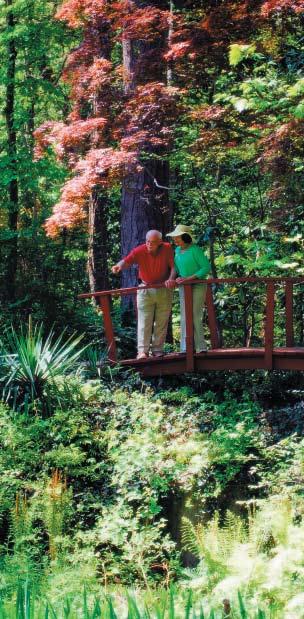
register EMORY PHOTO /vi DEO
• Multiple Dining Venues • 24-Hour Security CCTV • Maid & Linen Service • 11 Acres of Gardens • Green House Gardening • Reserved Parking • Professionally Staffed Wellness Center • Indoor Swimming Pool • Movie Theater • Expanded Basic Cable TV • Ask About Our Efficiency, 1, 2 & 3 Bedroom Floor Plans & Up • Onsite Assisted Living and Skilled Nursing 11 Acres Of
the good life you’re accustomed to is available now, to follow you throughout your retirement, at Canterbury Court a s w e l l a s a n i n d e p e n d e n t , a c t iv e w a y o f l i f e We • 11 • Reserved Wellness Center Pool • Expanded Basic Cable TV (404) 261-6611 • www.canterburycourt.org “...Living
Life” b e n e fi t s l i s t e d t o t h e r i g h t , h av e a w i d e r a n g e o f a p a r t m e n t f l o o r p l a n s for your review Contact us for all the details
Beauty!
The Good
spring 2010 magazine 59
E D i TOR ’ S N OTE : Class notes are submitted by alumni and are not verified by the editors. While we welcome alumni news, Emory Magazine is not responsible for information contained in class notes.
coda Coach Confessions
B Y HAL JACOBS
It’s Friday evening at a youth baseball complex in Tyrone, Georgia. Dusk has settled into the grass and trees beyond the outfield fence, turning them into something resembling quiet woodlands. But the baseball diamond is as brightly lit as an operating room.
At the moment, our team of twelveyear-olds, the Druid Hills Bulls, are getting waxed. We’re down 10-0 in the last inning. The team we’re facing is so well-coached and so all-around good—the word is that they won some world series out West last year—that it feels more clinical than your typical 10-0 beat-down. It might hurt more in the morning.
Then it starts to get interesting.
An out here, a few seeing-eye hits there, a walk, another out, and bases are loaded with two outs. It’s time for my son, Henry, to step into the batter’s box.
Moments like this are the hardest. There’s nothing on the line—this is just another Friday night in another weekend tournament. But for some crazy reason, to at least one person watching this game, it feels like everything is on the line.
I should start walking away, down the right field line, away from the blinding whiteness of home plate. I should call someone on my cell phone, someone who thinks there are more important things in life than baseball, and make plans to do something tomorrow that has nothing to do with baseball.
I should do anything but what I am doing, gripping the chainlink fence and praying for a miracle.
Please, God, please . . . grant him a hit.
I don’t want it for me. I want it for him. I want my son to be happy.
Henry cocks his bat. Damp locks of hair poke out from his dirty batting helmet. His cheeks and stomach still carry a hint of that adolescent softness that will melt away in another year. At this moment, everything is pure and anything is possible.
The pitcher winds up and throws a fastball down the middle of the plate.
Henry watches it.
“Strike!” yells the umpire, pumping his fist with the conviction of a man who knows that in a few more minutes he’ll be sitting in a camp chair beside his car in the parking lot and cracking open a cold one from the cooler.
The finality of the ball slamming into the catcher’s mitt—instead of leaping off Henry’s bat—is a little disorienting. What just happened? I look around to see if anyone else just noticed that he didn’t swing at the ball. His teammates in the dugout beside me are experiencing a range of emotions: the next two batters have their helmets on and want a chance to hit; the others are squirming on the bench, looking forward to the game being over so they can start the next adventure.
My vision of a ball ascending into the dusky sky is now replaced by the hot pain of doubt and fear. A strikeout to end the game would hurt bad. The absence of all hope. Hell.
Baseball can be such a cruel game.
Five years ago, when my wife and I first signed up our two sons in a neigh-
borhood youth baseball league, I never thought I would wind up as a dad with a baseball problem. I didn’t see the value of over-organized youth sports. I grew up playing sandlot baseball in a park where the longleaf pine trees outnumbered the players. I never played catch with my father. He died when I was eight, and a year later I discovered baseball on my own terms.
My version of baseball bears no resemblance to the game my sons play. Our games lurched along, disrupted by frequent breakdowns of talks and negotiations, arbitrary pummeling of younger brothers by older brothers, cars driving through the outfield, and equipment issues, such as when the only ball would be lost forever to a rogue palm tree. There were also moments so perfect that they took our breath away.
Over the years, as a baseball dad-coach, I have learned to appreciate the youth baseball experience. Now I understand that baseball is a game best passed down from one generation to the next. I have seen my sons work with adults—and trust them—in a way I never learned while playing sandlot. I’ve seen them grow confident in their skills, and I’ve shared moments with them that have allowed me to see them in a new light, as if seeing the men they would one day become.
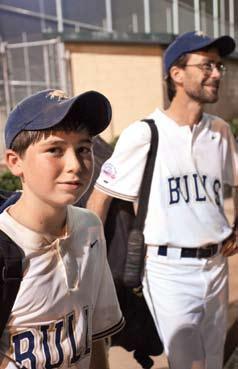
Here comes the next pitch. A good one—for the pitcher—not Henry. Low and on the outside part of the plate. Too close to take. Henry loads his bat and swings.
He gets good composite metal on the ball—I hear a sharp, satisfying ring—followed by cheers and yells from the stands.
The groundball shoots to the right side of the infield. For a moment it looks like it might get into right field and score two runs. Henry is tearing up the ground between home plate and first. But the first baseman takes a few steps to his right, stays down on the ball as it disappears into the leather webbing of his glove, then steps on first before Henry arrives in a fury of arms and legs. Ball game.
This is an edited excerpt from Ball Crazy: Confessions of a Dad-Coach , by Hal Jacobs (Everthemore Books, published february 2010). Jacobs is manager of communications in Emory College.
J OE N. B OR S / SPEC AL 60 magazine spring 2010
B a LL C razy: h enry Jacobs with his dad and coach, h al Jacobs.
For Mary Capka 78N, Emory has been a teacher, employer, and healer. She earned a master’s degree from the Nell Hodgson Woodruff School of Nursing and spent her 30year career at Emory University Hospitals. When a genetic disorder damaged her kidneys, Emory’s transplant team saved her life with a kidney donated by her husband, Vincent.
In gratitude, the couple has included Emory in their will, making a bequest to fund scholarships for Emory nursing students.
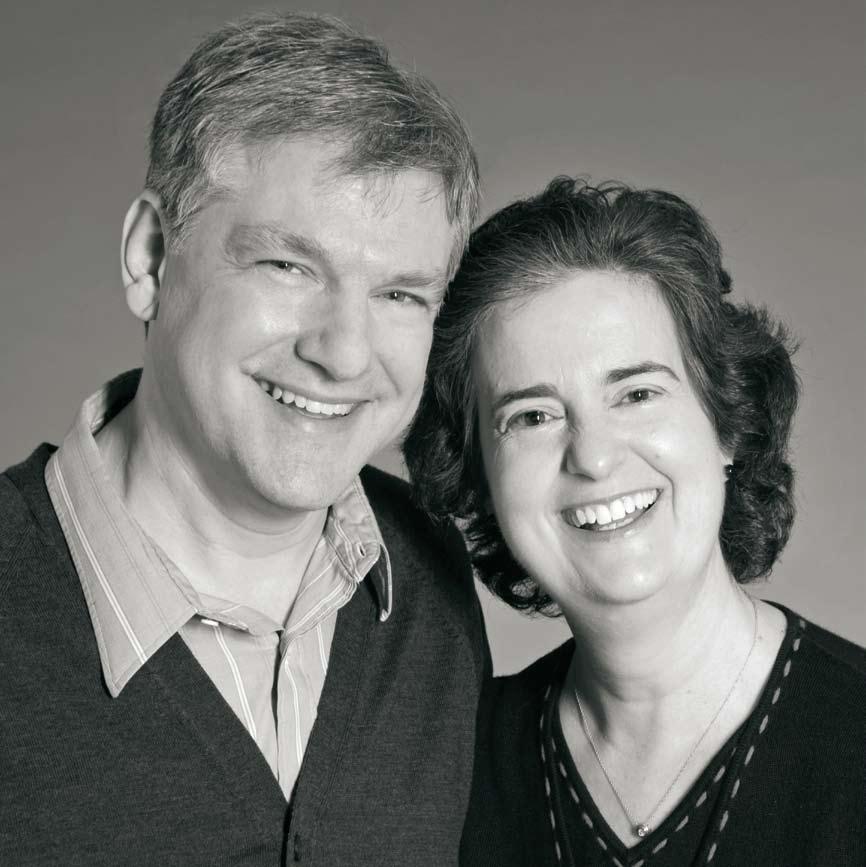
Have a plan.
“It seems like the right thing to do,” she says.
To learn how you can support Emory in your estate plans, call 404.727.8875 or visit the office of Gift planning’s new home on the Web, www.emory.edu/giftplanning.
Plan to express your gratitude.
the years of L iving dangerous Ly: for nearly three decades, freshmen and sophomores faced off each autumn in a spirited game of pushball, until the tradition was abandoned in 1955 due to “mob violence.” photo Courtesy of emory university archives, Manuscript, archives, and rare Book Library.
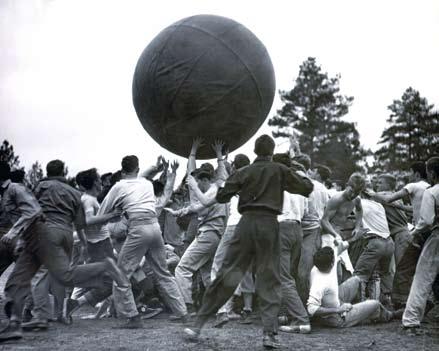
recycle Me! finished with this issue of Emory Magazine? Pass along to a friend or colleague!
Mind sharpened at Emory. Vision, too.
Our focus is your focus. At Emory Vision, the difference in our service is clear. As the only LASIK provider affiliated with EMORY HEALTHCARE, we offer superior outcomes and meticulous care. To schedule a free initial exam, call 404-778-2733 or visit www.emoryvision.org

FSC Certification goes here
Emory_visionhalf_horz_1.indd 1 3/15/10 4:27 PM
















































































 Donor Sally Lehr 65N 76MN
Donor Sally Lehr 65N 76MN


 Susan Cruse, Senior Vice President, Development and Alumni Relations
Susan Cruse, Senior Vice President, Development and Alumni Relations






































